
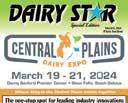
Auburndale
FFA Chapter continues farmer appreciation project
By Danielle Nauman danielle.n@dairystar.com
AUBURNDALE, Wis. —
For nearly a decade, members of the Auburndale FFA Chapter have taken it upon themselves to conclude their celebration of National FFA Week by showing their appreciation for the farmers who reside within their school district.
“It started with the idea of
By Stacey Smart stacey.s@dairystar.com
MORRISON, Ill.
— Milking technology has shifted dramatically at the Cook family’s farm since 1985. Starting in a stanchion barn,


Spreading cheer, goodwill for nearly a decade

The chapter has been carrying
goodwill and supporting our dairy farmers at the time,” said
Mark Cournoyer, Auburndale FFA adviser. “It eventually expanded to include all our farmers: grain, beef, chickens. If
they are a producer in our district, we hit them up.”
According to Cournoyer, the gift of appreciation has grown in both size and scope since its inception in 2015.
Kaeden Hasenohrl, a 2017 graduate of Auburndale High School, was involved in the project for three years.
“We would usually take a route that we were familiar with the farms or the area,” Hasenohrl said. “That meant most of the farmers knew us or knew our families, and we were able to have a conversation with them. That was my favorite part — being able to connect with them, even for ve minutes. Everyone was always grateful, and it seemed like it was a highlight for them in the long winter.”
Building a sustainable future Progressing in technology
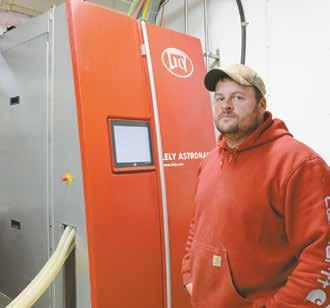
 By Stacey Smart stacey.s@dairystar.com
By Stacey Smart stacey.s@dairystar.com
CEDAR GROVE, Wis. — A willingness to try something different denes the owners of Double Dutch Dairy. Never content with the status quo, the Stapels prefer to think beyond traditional ways of doing
March 9, 2024 Volume 26, No. 2
dairy, all the time”™
“All
Turn to AUBURNDALE FFA | Page 2 Turn to STAPELS | Page 8 Turn to COOKS | Page 6
DANIELLE NAUMAN/DAIRY STAR
Members of the Auburndale FFA Chapter —Bre Thiel (front, from le ), Coleman Becker, Ray Teska and Hunter Richardson; (back, from le ) Allis Teska, Kennedy Crane, Aydin Hintz, Brenna Thiel, Eden Aschenbrenner, Sonya Merri , Savannah Grosskopf, Kendall Novotny and Ray Brummond — deliver farmer apprecia on gi s to 70 dairy farmers Feb. 23 near Auburndale, Wisconsin.
out the project annually for Na onal FFA Week.
Cooks secure farm’s future through robotic milking
STACEY SMART/DAIRY STAR
Adam Cook stands next to a robo c milking system Feb. 6 on his family’s farm near Morrison, Illinois. Cook and his dad, John, milk 120 cows with two Lely A4 robots and farm 400 acres.
receive National Outstanding Young Farmer award PHOTO SUBMITTED Brody and Carolyn Stapel receive the Na onal Outstanding Young Farmer award Feb. 17 in Ferndale, Washington. The Stapels farm with Brody’s brother and sister-in-law and his dad near Cedar Grove, Wisconsin. LOOK INSIDE FOR OUR CENTRAL PL AINS DAIRY PLAINS EXPO PREVIEW EDITION!
Stapels
Published by Star Publications LLC
General Manager/Editor
Mark Klaphake - mark.k@dairystar.com 320-352-6303 (ofce) 320-248-3196 (cell) 320-352-0062 (home)
Ad Composition - 320-352-6303
Nancy Powell • nancy.p@dairystar.com
Karen Knoblach • karen.k@star-pub.com
Annika Gunderson • annika@star-pub.com
Editorial Staff
Maria Bichler - Assistant Editor maria.b@dairystar.com
Stacey Smart - Assistant Editor 262-442-6666 • stacey.s@dairystar.com
Danielle Nauman - Staff Writer
608-487-1101 • danielle.n@dairystar.com
Abby Wiedmeyer - Staff Writer 608-487-4812 • abby.w@dairystar.com
Tiffany Klaphake - Staff Writer 320-352-6303 • tiffany.k@dairystar.com
Jan Lefebvre - Staff Writer jan.l@star-pub.com
Amy Kyllo - Staff Writer amy.k@star-pub.com
Emily Breth - Staff Writer emily.b@star-pub.com
Consultant
Jerry Jennissen 320-346-2292
Advertising Sales
Main Ofce: 320-352-6303
Fax: 320-352-5647
Deadline is 5 p.m. of the Friday the week before publication Sales Manager - Joyce Frericks 320-352-6303 • joyce@saukherald.com
National Sales Manager - Laura Seljan (National Advertising, SE MN)
507-250-2217 • fax: 507-634-4413
laura.s@dairystar.com
Assistant Sales Manager - Kati Schafer (Northeast WI and Upper MI)
920-979-5284 • kati.s@dairystar.com
Jerry Nelson (SW MN, NW Iowa, South Dakota)
605-690-6260 • jerry.n@dairystar.com
Mike Schafer (Central, South Central MN)
320-894-7825 • mike.s@dairystar.com
Megan Stuessel (Western Wisconsin)
608-387-1202 • megan.s@dairystar.com
Julia Merten (Southeast MN and Northeast IA)
507-438-7739 • julia.m@star-pub.com
Bob Leukam (Northern MN, East Central MN) 320-260-1248 (cell) bob.l@star-pub.com
Mark Klaphake (Western MN) 320-352-6303 (ofce) • 320-248-3196 (cell)
Con nued from AUBURNDALE FFA | Page 1
This year, chapter members visited 120 farms in the Auburndale School District, including 70 dairy farms.
“When we rst started, the gift we delivered to the farmers consisted of a pint of milk from Kwik Trip and some homemade doughnuts from the Amish bakery,” Cournoyer said.
This year’s gift bags included a Weber’s Twist, a half-gallon of both chocolate and white milk, donated by Weber’s Farm Store; 2 pounds of cheese from Nasonville Dairy; a box of Kwik Trip doughnuts; a bag of dried cranberries; and a pair of gloves sourced from Illinois Glove Company and emblazoned with the Auburndale FFA logo.
The activity, which takes place on Friday, has become a highlight of the chapter’s National FFA Week activities for students. The Auburndale FFA Chapter consists of over 130 members from grades 6-12.
“This is a great way for our members to engage with our ag community,” said Allis Teska, a senior who serves as the chapter’s president. “Each year, the farmers look forward to what we bring them.”
Senior Sonya Merritt said that the support the community provides their chapter is invaluable.
“The farmers in our community are such great supporters of our activities,” Merritt said. “It’s nice to give back to them. We are able to attend so many events and conferences because the community supports us. We recently
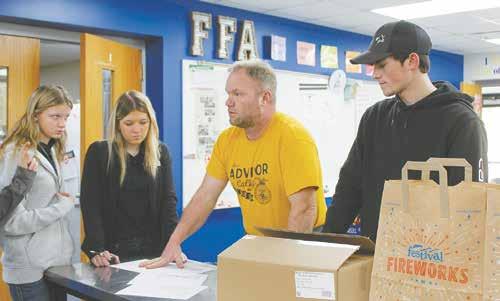
were able to go to the state Capitol and meet with staff members and elected ofcials to learn about things happening in our government that will affect us in the future.”
Students enjoy the memories as much as the farmers appreciate the gifts.
“There are a lot of great memories, visiting the different farms each year,” said junior Raymond Brummond. “Each year, you remember different things from the farms you go to. And,
the different farm dogs always make it interesting.”
Steve and Shelly Becker milk 75 cows near Auburndale. Their son, Coleman, is a member of FFA and participates by delivering treats on a different route. The Beckers were nishing up their morning milking when a trio of students pulled into the driveway with treats in hand.




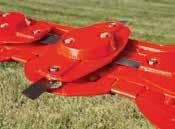


Page 2 • Dairy Star • Saturday, March 9, 2024 North America dealers. DAIRY ST R ISSN Print: 2834-619X • Online: 2834-6203 522 Sinclair Lewis Ave. Sauk Centre, MN 56378 Phone: 320-352-6303 Fax: 320-352-5647 www.dairystar.com Deadlines The deadline for news and advertising in the Dairy Star is 5 p.m. Friday the week before publication. Subscriptions One year subscription $42.00, outside the U.S. $200.00. Send check along with mailing address to Dairy Star, 522 Sinclair Lewis Ave., Sauk Centre, MN 56378. Advertising Our ad takers have no authority to bind this newspaper and only publication of an advertisement shall constitute nal acceptance of the advertiser's order. Letters Letters and articles of opinion are welcomed. Letters must be signed and include address and phone number. We reserve the right to edit lengthy letters. The views and opinions expressed by Dairy Star columnists and writers are not necessarily those of the Dairy Star / Star Publications LLC. The Dairy Star is published semi-monthly by Star Publications LLC, 522 Sinclair Lewis Ave., Sauk Centre, MN 56378-1246. Periodicals Postage Paid at Sauk Centre, MN and additional mailing ofces. POSTMASTER: Send address changes to Dairy Star, 522 Sinclair Lewis Ave., Sauk Centre, MN 56378-1246. © 2023 Star Publications LLC
Turn to AUBURNDALE FFA | Page 5
DANIELLE NAUMAN/DAIRY STAR
Farmers’ Implement Allenton, WI D & D Farm Supply Arcadia, WI Cherokee Garage Colby, WI Beaver Machine Coleman, WI Kalscheur Implement Cross Plains, WI Eron Equipment Junction City, WI Luxemburg Motor Co. Luxemburg, WI Riesterer & Schnell Shawno, WI Lulich Implement Mason, WI Lindstrom Equipment Menomonie, WI East Side Farm Equipment Monroe, WI Steinhart Farm Service Platteville, WI Gruett’s Inc. Potter, WI Gibbsville Implement Waldo, WI Carl F. Statz & Sons Waunakee, WI Midwest Machinery Co. New Richmond, WI Osceola, WI Invest in Quality ® www.kuhn.com Visit your local KUHN Hay & Forage dealer today! GMD PREMIUM & SELECT SERIES | Mounted Disc Mowers 5'3" – 10'2" working widths CLEAN , EVEN CUTTING • • ® • •
Auburndale FFA Chapter members — Kennedy Crane (from le ), Aydin Hintz, adviser Mark Cournoyer and Hunter Richardson — discuss routes for delivering farmer apprecia on gi s Feb. 23 in Auburndale, Wisconsin. The bags included dairy products, doughnuts, dried cranberries and a pair of gloves.

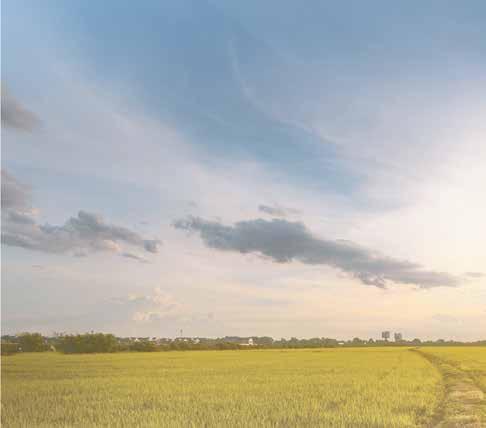




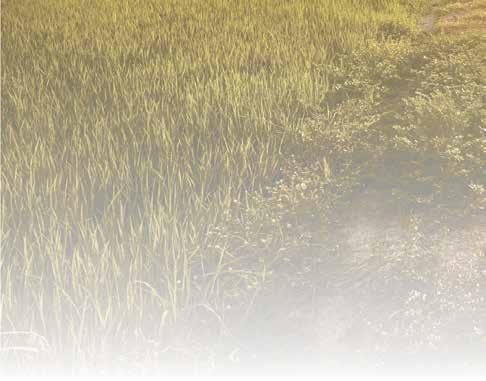
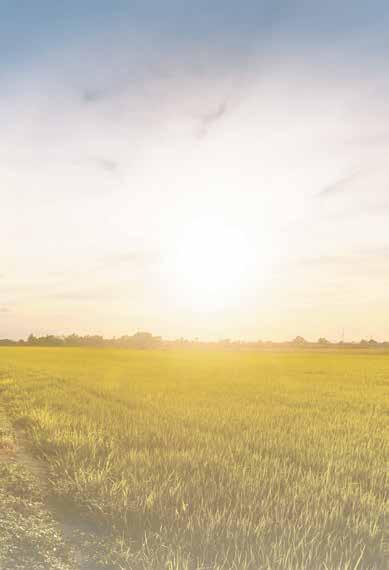
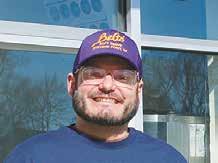


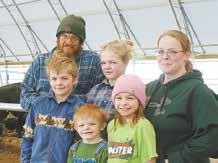
















For additional stories from our other zone, log on to www.dairystar.com Dairy Star • Saturday, March 9, 2024 • Page 3 Customers camp out in anticipation of Belts’ Soft Serve opening day Second Section: Page 8 Stevens Point, WI Kids Corner: The Williams family Third Section: Pages 12 - 13 Willard, WI Food stand offers fast service, low prices Second Section: Pages 13 - 14 Oshkosh, WI Why did you decide to serve as a board member, and how has that involvement beneted you? First Section: Pages 15 -16, 18 FROM OUR SIDE OF THE FENCE: Zone 2 Zone 1 The Day That Went Awry Second Section: Page 27 Stratford, WI Klinkner nds value in feed supplement First Section: Pages 12 - 13 Genoa, WI Women in Dairy: Emily Fincher First Section: Page 29 Marsheld, WI Geiger writes two historical non-ction books First Section: Pages 25 - 26 Reedsville, WI Consistent ration, attention to detail help Carncross achieve herd average over 34,000 First Section: Pages 20 , 23 Lodi, WI Columnists Ag Insider Page 10 First Section P Fir Fi s Ramblings from the Ridge Page 36 First Section R f Fi The “Mielke” Market Weekly Pages 10 - 11 Second Section Veterinary Wisdom Page 37 First Section Vet V W Pa P Firrs From the Zweber Farm Page 38 First Section F Zwe P Fir Country Cooking Page 38 Second Section y n C C P The NexGen Page 39 First Section Dairy Prole: Randy and Robert Nigh First Section: Pages 32 - 33 Viroqua, WI


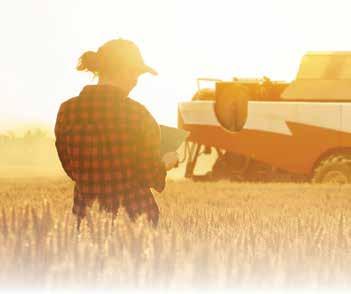



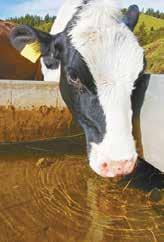




Page 4 • Dairy Star • Saturday, March 9, 2024 LET OUR TEAM DO A COMPLETE WASH ANALYSIS • Reduces equipment wear & replacement costs. • Reduces water, energy and chemical use. • Decreases cleaning time. •Increases production capability. BENEFITS $ Compare and Save! High Performance Single-Cycle CIP Acid Detergent FOR MORE INFO - CONTACT ONE OF THESE DEALERS... Lang’s Dairy Equipment, Inc. 2337 Millennium Rd. • Decorah, IA 52101 (563) 382-8722 295 East Main Street • Lewiston, MN 55952 (507) 452-5532 Precision Dairy Equipment 24548 IA-13 • Elkader, IA 52043 (563) 245-2560 Tri-County Dairy Supply, Inc. 4107 N US HWY 51 • Janesville. WI 53545 608-757-2697 Bob’s Dairy Supply 540 E. County Rd. A • Dorchester, WI 54425 (715) 654-5252 Eastern Iowa Dairy Systems 105 3rd Ave. NW • Epworth, IA 52045 (563) 876-3087 Farm Systems 58 Interstate Drive • Melrose, MN 56352 Brookings SD • (320) 256-3276 Leedstone 222 E Co Rd 173 SE, Melrose, MN 56352 (877) 608-3877 24260 Cty. Rd. 27 • Plainview, MN 55964 (800) 548-2540 1720 Freitag Dr. • Menomonie, WI 54751 (866) 467-4717 2580 9th St. E. • Glencoe, MN 55336 (877) 864-5575 Fuller’s Milker Center, LLC 423 U.S. 61 • Lancaster, WI 53813 900 US Hwy. 14 West • Richland Center, WI 53581 (800) 887-4634 Gorter’s Clay & Dairy Equipment 1400- 7th St. SE • Pipestone, MN 56164 (507) 825-3271 Redeker Dairy Equipment W12287 Liner Rd. • Brandon, WI 53919 (920) 346-5576 United Dairy Systems 210 N. Industrial Pkwy • West Union, IA 52175 (563) 422-5355 132 W 11th St. • Monticell, IA 52310 (319) 465-5931 Advanced Dairy LLC 9 State Rd. 29 • Spring Valley, WI 54767 (715) 772-3201 913 W. Main St. • Mondovi, WI 54755 (715) 926-5777 967 West Ave. N • West Salem, WI 54669 (608) 633-6690 2195 Hwy. 23 • Mora, MN 55051 (715) 772-3201 117 West Circle Dr. • St. Charles, MN 55972 (507) 932-4288 1449 Homecrest Ave SE • Wadena, MN 56482 (218) 632-5416 THE NEXT GENERATION IN ON-FARM WATER TREATMENT Chlorine Dioxide Technology Dirty Water? • Respiratory Issues • Scours • Crypto • Salmonella • E-coli GREATLY REDUCED: Pure 3000 CLEAN IT UP WITH Removes IRON, MANGANESE and SULFUR in water! HEALTHIER CALVES HEALTHIER COWS S. S. ONE SHOT HIGHLY EFFECTIVE AGAINST: Prototheca • Staph Aureus Mycoplasma • Pseudomonas Improve Footbath Accuracy and Reduce Costs! The AgroChem Footbath Dosing System delivers the results you’relooking for in a high-quality footbath program. • SIMPLY SET IT AND FORGET IT! AUTO-PROGRAM FEATURE SIMPLIFIES FOOTBATH PROCEDURE. • REPLENISH SYSTEM FEATURE AUTOMATICALLY ADDS WATER AND CONCENTRATE AS NEEDED. • SAVES MONEY BY REDUCING LABOR THROUGH AUTOMATION, MAINTAINING PROPER FOOTBATH CHEMISTRY AND ONLY ADDING FOOTBATH SOLUTION WHEN NEEDED. • SAFE - REDUCES EMPLOYEE INTERACTION WITH CHEMICALS • BEST WHEN USED WITH HEALMAX®, DURAHOOF, OR ULTRA 2N1 423 US Hwy 61 N Lancaster, WI 53813 900 US Hwy 14 W Richland Center, WI 53581 (800) 887-4634 | Dairy Supply Online: www.dairysupplyonline.com Visit StearnsBank.com/DairyStar or call (800) 247-1922 Member FDIC | Equal Housing Lender You’re working hard today for a better tomorrow. We’re here to lend a hand. With over a century of personal service, we’re ready to help you and all you are working toward. Equipment finance Farm & land lending Full-service banking options

DANIELLE NAUMAN/DAIRY STAR Dairy farmer Aaron Swenson (le ) receives a farmer apprecia on gi from Auburndale FFA Chapter members Allis Teska and Ray Brummond Feb. 23 near Auburndale, Wisconsin. Chapter members delivered gi s to 120 farms, including 70 dairy farms in celebra on of Na onal FFA Week.
“It’s really nice to be thought of and appreciated,” Steve said. “The dairy industry, or farming in general, isn’t a great place to be lately. Seeing these kids interested and trying to make a difference helps a little.”
Shelly agreed.
“Sometimes, it is the little things that make a big difference,” Shelly said. “A little positivity can go a long way.”
Students, past and present, agreed that the benets they reap from an event like the farmer appreciation project go
both ways and stay with them far beyond the Friday of National FFA Week.
“FFA was a great experience, and the credit goes to Mr. Cournoyer and the community of Auburndale,” said Jenna Knapp, a 2015 graduate and past chapter ofcer. “Being able to share what we were doing in our chapter — the trips, the conferences, the activities — with the farmers in our community while delivering them milk and doughnuts, and throughout the year, was a highlight of my time in FFA.”
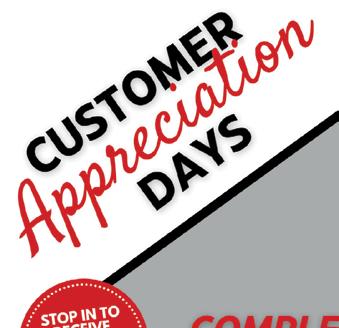










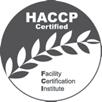


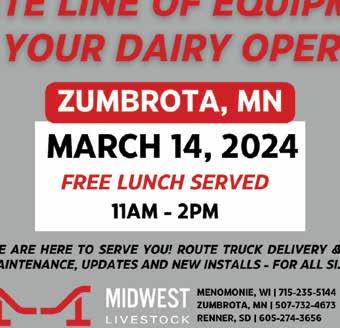


Dairy Star • Saturday, March 9, 2024 • Page 5 320-836-2145 or 800-450-2145 www.famofeeds.com Check out our newly redesigned website to nd a Famo Feeds dealer near you! At Famo Feeds, we strive to provide the best support for your operation and work to accommodate your specific needs. From calf to cow and everything in between! TRUST THE EXPERTS • Milk Replacers • Starter Feeds • Protein Concentrates • Premixes • Minerals • Animal Health Products • Lick Tubs FEED THEM FAMO! Con nued from AUBURNDALE FFA | Page 2

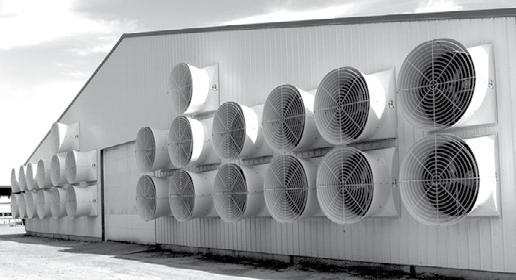

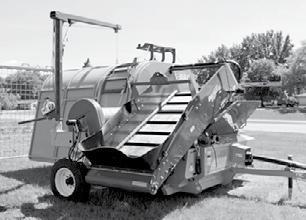
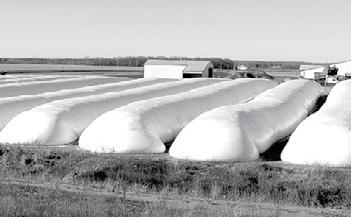


the Cooks transitioned to a parlor and then a robotic milking system in 2022.
“Of those three options, I like robots the best,” Adam Cook said.
freestall barn was built in 2013, and cows moved from loang sheds to their new accommodations. The herd grew to 145 milking while in the parlor.


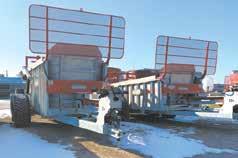




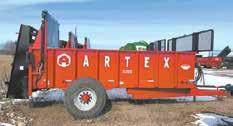
Cook and his dad, John, milk 120 cows with two Lely A4 robots and farm 400 acres near Morrison. Cook’s mom, Joyce, and his wife, Nicole, help as well.
“We have two little boys at home who keep my wife rather busy,” Cook said.
The Cooks bought two refurbished robots from a farm that had used the robots for seven years and wanted to swap them out for the A5 model.
“Buying used made it economical for us to get started,” Cook said.
The Cooks retrotted the robots into their former holding area in the exterior wall of the freestall barn. They also added an ofce and robot room.
“The retrot helped keep costs down a lot and lowered our investment in robotics,” Cook said.
The Cooks were milking 60 cows in a stanchion barn when Cook returned to the farm in 2012 after graduating from the University of Wisconsin-Platteville. He and his dad worked their way up to milking 90 cows in a barn with 22 stalls.
Tired of switching the barn four times over, the Cooks built a double-10 parlor in 2015. Before that, a
“The parlor offered greater efciency,” Cook said. “Trying to milk more in the stanchion barn wasn’t cutting it. It was very labor intensive. We were always running cows in and out.”
The parlor held its appeal for seven years, before the Cooks switched milking methods once again.
“My dad was doing 98% of the milking and spending lots of time in the parlor,” Cook said. “We needed to make a change. We looked at a couple of robot farms and thought they were pretty cool. Our vet at the time said robots were the best thing he ever saw for cow health and udder health.”
The Cooks’ parlor was a steppingstone to robots. The parlor is no longer in use, with all cows in the Holstein and Holstein-Jersey cross herd going through the robots.
“Robots let you take it a step further as far as getting more milk and being more efcient,” Cook said. “The data is astonishing. It has helped with repro and animal health. We really catch the sick ones a lot quicker.”
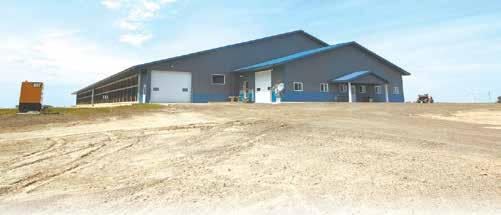



Page 6 • Dairy Star • Saturday, March 9, 2024 www.LangeAgSystems.com Specializing in Livestock Equipment and Construction, New and Used Bagging Machines, Silage Bags, Bunker Covers and Grain Storage! Call Us At (715) 223-3361 Or visit us on-line at www.cloverdaleequip.com N13835 County Rd. E - Curtiss, WI 54422 HOME OF THE CLOVERDALE MIXER Artex S200 CALL FOR PRICING New Hoosierland 1450 Spreader - CALL FOR PRICING Hoosierland 1300 spreaders $44,500 Artex SB600 CALL FOR PRICING New JBM Mfg T-1200DB Dirt Boss Dumper 12 ton dump wagon CALL FOR PRICE Electronic Dairy Board Repair Service Specializing in: WestfaliaSurge, BouMatic, & DeLaval pulsators & Takeoffs, circuit boards, Mueller milk tank circuit boards. Call: (c) 406-590-7764 www.circuit xer.wixsite.com/ boumaticboardrepair Repair vs. Replace BULK OR BAG Wood Shavings S&S Wood Products 35335 Green Street | Independence, WI 54747 800-234-5893 | 715-985-3122 320-836-2284 • 1-888-276-1751 29033 Co. Rd. 17, Freeport, MN In St. Rosa www.arnzenconstructioninc.com Your One-Stop Shop • Agricultural Building • Welding • Barn Parts • Equipment Con nued from COOKS | Page 1 Turn to COOKS | Page 7
STACEY SMART/DAIRY STAR Adam Cook looks at data generated by the robo c milking system on his computer Feb. 6 at his family’s farm near Morrison, Illinois. Cook said data from the robots helped him remove cows from the herd that were not mee ng producon and soma c cell count goals.
Con nued from COOKS | Page 6
Cook said behavior tracking has been a benet.
“If a cow is sick, we see a drop in rumination, and I get a message on my phone,” Cook said. “Also, the somatic cell count on the readers helps us manage our quality of milk better, and we’ve seen a drop in cell count compared to previous milking methods. We are able to keep track of everybody — who stays, who goes, who gets treated — which helps a lot.”
Cows average 2.9 milkings per day in the robots, and Cook said production has gone up.
“The robots helped us weed out cows that didn’t deserve to be here,” Cook said. “We weren’t testing milk in the parlor, and cows that we thought were doing good just took a long time to not give a lot of milk. We have also phased out cows with high somatic cell counts.”
When considering robots, Cook said dairy producers should visit other farms to get an idea of what works and what does not.
“If you’re going to go to robots, it’s a commitment,” he said. “Cow ow is key. Avoid odd placements of the robots.”
Cows at the Cook farm enter the robot from the right-hand side, and both robots face the same direction. Cows are housed in one group in a free-ow system.
“We have a fetch pen we use


twice a day; otherwise, we’re not fetching a lot,” Cook said. “It is mostly cows late in lactation or that have a sore foot as well as a few cows that are just lazy. The only thing I would have changed about our setup is to make the ofce bigger.”
Cook said having a nutritionist who knows how to feed a robot herd is crucial.
“The ration is balanced to feed a portion of energy through the robot to drive cows there,” he said. “That’s how you get the extra visits — by cows coming to look for the pellet. But you don’t want to feed more than you have to or it will increase feed costs.”
The Cooks also have an automatic feed pusher, which Cook said pays for itself, pushing up feed every hour except at 6 a.m. and 6 p.m.
“My dad sometimes misses milking cows, but it was a lot of hard years on his body,” Cook said. “He used to enjoy the stanchion barn when it wasn’t four turns at a time.”
The farm went through multiple phases to get to a point where father and son feel prepared for the future.
Cook is the second generation on the farm, which is owned by his parents. Cook owns 40% of the herd, and he and his parents co-own the equipment.
“The plan is for me to take over,” Cook said. “With robots, we’re in a real good position for the future.”







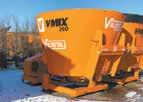


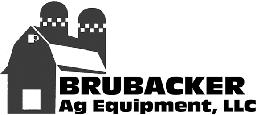


































Dairy Star • Saturday, March 9, 2024 • Page 7
CURTISS 715-613-7308 EDGAR 715-352-2011 BOSCOBEL 715-937-5190 Edgar Curtiss Boscobel Valmetal 400 2 speed, RH discharge Valmetal 280 side discharge Valmetal 280 end discharge EQUIPMENT IN STOCK Valmetal 5600 bale chopper, 1,000 RPM Valmetal 5600 Auto-Trac In-tank agitation, AR steel Valmetal Forage Blower 1,000 RPM Valmetal 630 1,000 RPM, front RH conveyor, rear door, 2 speed Valmetal 700 right and left discharge Ask about Valmetal’s NEW Financing program! Valmetal 530 Super Cart 542 Supercart Choose 3.99% for 24 or 36 months / Zero Down / Zero residual or 3.99% for 48 or 60 months / 25% down payment or trade / Zero residual
things. It is a mentality that has rewarded the family well.
Recognized for their achievements on a national level, Brody and Carolyn Stapel were one of four farmers to win the 2024 National Outstanding Young Farmer award Feb. 15-18 in Ferndale, Washington.
“It’s our name on that plaque, but it takes a family,” Brody said. “We farm with my brother and sister-in-law and my dad, and we couldn’t do this without them.”
The Stapels milk 260 cows and farm 1,000 acres near Cedar Grove. In addition, they run a custom planting and harvesting operation and two beef enterprises and are also in the midst of building an on-farm creamery.
One of 10 nalist couples, the Stapels were in the company of poultry, spinach and tomato farmers — like-minded, progressive problem-solvers like themselves — when they accepted the award.
“The farmers we met there were incredible, and we’re really honored we came out in the top four,” Carolyn said. “The program is designed to build friendships. You may arrive thinking they’re your competition, but you leave thinking you’ve gained new family.”
The National Outstanding Young Farmer program began in 1955, and farmers between the ages of 21-40 are eligible for the award. Winners must demonstrate entrepreneurship

launched Farm Stapels Feb. 1 and will offer
munity under this brand. and sustainable agronomy and are determined based on contributions in the following categories: progress in agricultural career; extent of soil and water conservation practices; and contributions to the wellbeing of the community, state and nation.
The Stapels have made headway on a farm they started in 2012. Brody and his brother, Jory, like to defy limits, which
set the farm on a fast track to success.
“I would encourage other young farmers to look into the National Outstanding Young Farmer program,” Brody said. “It gives you the ability to look back at where you’ve come from and see the progress and hardships you’ve experienced.”
Double Dutch Dairy is a 100% no-till farm that has ad-
opted other environmentally friendly practices as well, such as double cropping and interseeding. The Stapels are devoted to keeping the ground covered year-round.
“We’re seeing improvements in soil health and are able to pull back on inputs, saving on cost per acre,” Brody said. “We’re also feeding a lot of cover crops to animals.”
A knack for risk taking and
trying new ideas in the eld has resulted in better cow health and increased productivity.
The Stapels are working on becoming Regenerative Veried, a process that measures the impact of management practices by verifying and scoring soils.
“Based on years of regen practices, we’re decreasing our use of commercial fertilizers and other inputs,” Brody said.
On Feb. 1, the family launched Farm Stapels. Under this brand, the Stapels will offer dairy, beef, eggs and pork to the community. Brody and Carolyn and their six children live on the dairy where an onfarm creamery is being built to bottle milk in glass bottles for delivery to approximately 250 households per week.
“We hope to be up and running by the end of this year,” Brody said. “We want to keep the milk local and are trying to stick within a ve-county area. You can get fresh milk delivered to your porch, along with other products. All the staples from the farm will be available.”
The milk will be vat pasteurized and non-homogenized.
“We want it to be as close to natural as possible,” Brody said.

























Page 8 • Dairy Star • Saturday, March 9, 2024 Turn to STAPELS | Page 9
Con�nued from STAPELS | Page 1
PHOTO SUBMITTED
The Stapel family — Tierza (front); (middle, from le�) Gavin, Megan and Mallory; (back, from le�) Brody holding Toby, Carolyn and Clayton — poses for a picture September 2023. The Stapels
milk in glass bo�les, beef, eggs and pork to the com-

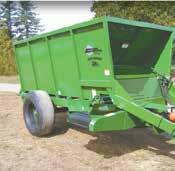


“If we can sell it, we will make it,” Brody said.
They also plan to offer eggnog and a drinkable yogurt and will produce yogurt and ice cream as well.
“Our end goal is long-term sustainability,” Brody said. “The farmer receives a very small percentage of the consumer dollar. We would like to be less dependent on the commodity markets and sell direct to the consumer. Farmers have always been price takers, but we like the idea of being able to set our own price.”
The Stapels are also working with retailers to get their milk on grocery store shelves and will continue shipping milk to Sargento.
“When you talk about sustainability, so many farmers think in the realms of soil and water conservation,” Carolyn said. “We think of social and economic sustainability — the relationship between farm, consumer and community. The creamery is an example of this for our dairy farm.”
The focus of Farm Stapels will be on locally produced goods offered through a subscription-based delivery route. The Stapels said their location gives them an advantage with close proximity to Milwaukee and its northern suburbs. The family is selling beef, honey and eggs under the Farm Stapels brand and said the sky is the limit for more production.
“We have a desire to get good-qual-
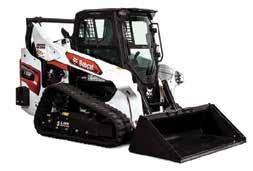
ity and nutrient-dense whole food onto people’s tables,” Carolyn said. “It was our dream to farm with family and sit down at the table and have good food and milk to enjoy every day. To share that goodness and those blessings with others is something we want to do for years to come.”
The Stapels also own and operate two beef operations. At Hand Creek Cattle, the family nishes approximately 1,000 feeder cattle per year. The Stapels also run a consumer beef operation where they raise Holstein-Angus crossbred cattle for direct beef sales.
Through involvement in their community, the Stapels are promoting agriculture and giving back. Brody serves as president of Edge Dairy Farmer Cooperative and president of Sheboygan River Progressive Farmers. He is also the town of Holland supervisor and engages in various community roles.
“As president of Edge, I have had the opportunity to advocate for dairy and agriculture on a federal level,” Brody said. “As a result, I’ve grown my knowledge of the industry, and I have a better understanding of what it takes to feed the world.”
Participating in the National Outstanding Young Farmers program was a humbling experience, Brody said.
“I don’t think I am any better of a farmer than my neighbors,” he said. “This award has reinforced in my mind that America is in good hands despite what you hear about farm numbers. There are a lot of people in this nation who care desperately about producing food for the world.”




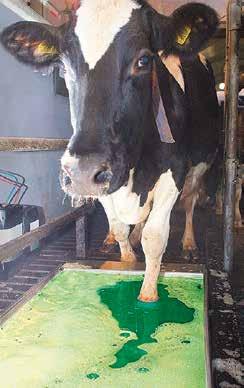








Dairy Star • Saturday, March 9, 2024 • Page 9 Footbath DOSING SYSTEM 423 US Hwy 61 N Lancaster, WI 53813 900 US Hwy 14 W Richland Center, WI 53581 (800) 887-4634 | Dairy Supply Online: www.dairysupplyonline.com “We looked at installing an automatic footbath to eliminate employees having to handle and mix the chemicals like they would with a traditional footbath. We are happy with the system, as it has proven to be easy and efficient to use. It has also helped us to save on chemical costs.” Daniel Kieler, Kieler Farms Inc. - 1,800 cows - Automatic Footbath installed January 2018 Stall Bedder Specialists with bidirectional belt fills all stalls on dead-end alleys! FRONT UNLOAD OR REAR UNLOAD “Custom Built Equipment, Built to Last” 360.354.3094 405 Birch Bay-Lynden Road, Lynden, WA 98264 info@whatcommfg.com www.whatcommfg.com Truck-mounted units available Straw Bedders Rear Discharge Stall Bedders Rear Unload Sand Bedders And much more! Visit our website for more pictures, options and specifications. Models up to 30 yard capacity Con nued from STAPELS | Page 8 Authorized Bobcat Dealer K & L Bobcat, Inc. Darlington,WI 13866 HIGHWAY F | DARLINGTON, WI | 608.776.4556 | www.klbobcat.com Bobcat® and the Bobcat logo are trademarks of Bobcat Company K & L Bobcat, Inc. Darlington,WI Customer Appreciation Day March 27, 2024 Special on Bobcat Parts Only 10% Discount on Cash Purchases 8% Discount on Credit Card Purchases The Stapels will offer whole white milk and chocolate milk. They would also like to venture into other avors, such as strawberry,
beer, mocha, red velvet and mint.
root
PHOTO SUBMITTED
Double Dutch Dairy is pictured July 26, 2023, near Cedar Grove, Wisconsin. The farm is 100% no- ll, and the Stapels also prac ce double cropping and interseeding and are in the process of building an on-farm creamery.

World Trade Organization ministerial ends without ag agreement
plan is needed to protect the bottom line.
Ag census continues trend to larger farms
Ag Insider
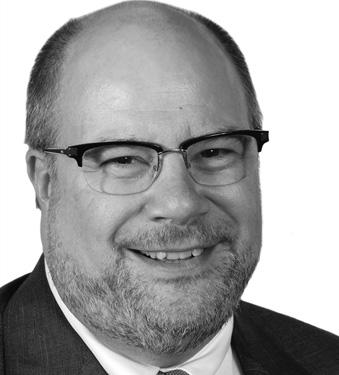
The Census of Agriculture reafrmed the trend toward larger farms. Farmers National Company Senior Vice President Matt Gunderson said the census is generating a lot of discussion. “It’s creating a conversation within production agriculture and internally in terms of what does that look like for the next generation, how does that look from a generational planning perspective and brings to the forefront the importance of estate planning,” Gunderson said.
Your Farm-Your Footprint

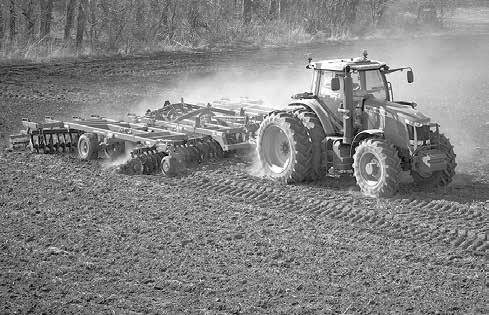

World Trade Organization negotiations went into overtime at its ministerial meeting in Dubai but failed to reach consensus on agriculture or any other major trade initiatives. In an apparent reference to the Hamas-Israel war and the RussiaUkraine war, WTO Director-General Ngozi Okonjo-Iweala said the summit occurred “against an international backdrop marked by greater uncertainty than at any time I can remember.” India pushed for an expansion of its public stockholding program, a policy used to purchase, stockpile and distribute food to needy people. This program is promoted as a food security measure, but the United States describes the public stockholding plan as an expansion of trade-distorting policy. The U.S. Dairy Export Council and National Milk Producers Federation were represented in Abu Dhabi, United Arab Emirates, to monitor and advise U.S. trade negotiators. “NMPF supports a holistic work plan on agriculture that includes an equal commitment to increasing market access and limiting domestic support,” said Gregg Doud, president/CEO, NMPF. Doud previously served as the chief agricultural trade negotiator during the Trump administration.
A volatile time for exports
By Don Wick Columnist
Professional Dairy Producers has launched a sustainability initiative called Your Farm-Your Footprint. “It’s a proactive move to continue to position U.S. dairy as a preferred supplier of global dairy customers who hope to reduce carbon emissions and cut methane by one-half by 2030,” said JJ Pagel, who is a PDP board member. “We’re talking about Nestle, Danone and Starbucks. They’ve been very upfront that they are looking to become more sustainable and cut their carbon footprint in half by 2030.” Pagel said he appreciates that this is a farmer-led initiative.
‘21 Rhino 3150-15’Batwing Mower
‘00 MF 6270, MFWD, loader ‘21 MF 2850, CAH, hydro, loader, ONLY 139 HOURS! IH 966, NICE!
MF GC2400, 60” deck, 500 hrs.
MF GC2400, 60” deck, 600 hrs.
‘21 MF GC1723, ldr., mower, 180 hrs.
CIH Farmall 45A, 649 hrs ‘09 MF 573, MFWD, Loader, 2200 hrs ‘07 JD 790 w/loader, 600 hrs.
‘19 Bobcat T770, SJC, 500 hrs.
‘20 Bobcat T770, CAH, highflow, SJC, 765 hrs.
‘20 Bobcat T770, SJC, 300 hrs.
‘18 Bobcat T770, SJC, 2,400 hrs.
‘17 Bobcat T770, foot, 1,000 hrs.
‘14 Bobcat S770, 3,200 hrs.
‘18 Bobcat T770, A91, highflow, SJC, 2,000 hrs. ‘12 Bobcat S650, 9,000 hrs.
‘18 Bobcat S650, SJC, 9,000 hrs.
‘16 Bobcat S590, 3,900 hrs. ‘20 Bobcat S570
‘18 Bobcat 3400 SideXSide, C/H, 6,700 hrs.
‘16 Bobcat E50, long arm, thumb, 1,510 hrs.
‘20 Bobcat V923 Telehandler, 1,100 hrs.
‘18 Bobcat E50 long arm, 700 hrs.
‘11 MF 8947 Telehandler, 3,000 hrs
The latest agribusiness review from Rabobank cites the ongoing conict on the Red Sea as causing global shipping capacity to tighten. Most shippers are avoiding that region and adding emergency risk surcharges. The report said this will be another year of volatility for anyone managing logistics. Uncertainties over the U.S. election and potential labor disruptions on both coasts are expected.
Ag trade needs to be a priority
The House Agriculture Trade Caucus has sent a letter to the Biden administration, urging them to make agriculture a priority in its trade agenda. Nearly 30 House members signed the letter calling for trade agreements that open markets and reduce trade barriers.
Emergency action sought for Class I mover formula
The American Farm Bureau Federation and National Farmers Union have sent a joint letter to U.S. Secretary of Agriculture Tom Vilsack asking for a change to the Class I mover formula. Rather than using the average of the Class III and Class IV prices, the two major farm groups want U.S. Department of Agriculture to use the higher of the Class III and Class IV prices. Without a change, the AFBF and NFU said milk checks would continue to crash and “each additional month without a change poses a threat to dairy farmers’ livelihoods.”
DMC enrollment begins
Enrollment is underway for the Dairy Margin Coverage safety net program. This USDA program compensates dairy farmers to offset milk and feed price differences. Rules have been changed to allow eligible dairy farms to make a one-time adjustment to their established production history. Sign up continues through April 29.
It’s not business as usual
Farmers are facing a very different economic landscape today. Commodity prices are lower and interest rates are higher. “It’s not business as usual,” said Tony Jesina, senior vice president of crop insurance, Farm Credit Services of America. “Farmers need to take a look at some different options than may have considered in the past.” Firstly, it is important to know the cost of production. Secondly, Jesina concentrates on the cost of production relative to the market. That data may require adjustments in the farming operation. “Maybe it’s how your debt is structured; maybe there’s a way to restructure or rebalance your debt so that the cash ow is more in line with where your revenue’s going to be going forward,” Jesina said. Ultimately, a risk management
Yogurt gains qualied health claim
The Food and Drug Administration has approved the rst-ever qualied health claim for yogurt. It recognizes the potential connection between the regular consumption of yogurt and a reduced risk of type2 diabetes. International Dairy Foods Association Senior Vice President of Regulatory and Scientic Affairs Roberta Wagner reacted by saying, “Dairy products continue to demonstrate they are central to healthy, balanced diets for all people of all ages.”
Wisconsin’s best burger
The Wisconsin Beef Council is promoting its rst-ever Best Burger Contest. Nominations can be made for Wisconsin restaurants with the best burger on the menu. Nominations will be taken through March 24.
Holstein association adds new board members
The Wisconsin Holstein Association has welcomed four new members to its board of directors. They are Brian Coyne of Monona, Patrick Crave of Waterloo, Brenda Murphy of Poynette and Todd Hoesly of Brodhead. They will serve a three-year term.
Compeer names new CIO
Bruce Feist will soon succeed Jerry Wiese as the chief information ofcer for Compeer Financial. Feist has been with Cargill for the past 15 years. Wiese is retiring in April.
Alice in Dairyland nalists
The six Alice in Dairyland nalists from Wisconsin have been named. They are Cierra Essock of Fox Lake, Halei Heinzel of Oconomowoc, Katrina Hoesly of Denmark, Machaela King of Big Bend, Kiley Pagel of Kewaunee and Lauren Siemers of Kiel. The 77th Alice in Dairyland will be named April 4 in Sturgeon Bay, Wisconsin.
Trivia challenge
The average American consumes 180 slices of pizza per year. That answers our last trivia question. For this week’s trivia, how many gallons of milk does the average American consume every year? We will have the answer in our next edition of Dairy Star.
Don Wick is owner/broadcaster for the Red River Farm Network of Grand Forks, North Dakota. Wick has been recognized as the National Farm Broadcaster of the Year and served as president of the National Association of Farm Broadcasting. Don and his wife, Kolleen, have two sons, Tony and Sam, and ve grandchildren, Aiden, Piper, Adrienne, Aurora and Sterling.
Page 10 • Dairy Star • Saturday, March 9, 2024 REISERIMPLEMENT Waukon,IA 563-568-4526 AfterHours: Ken563-380-3137•Dave563-380-8680 www.reiserimpl.com CHECKOUTTHE 7700SERIES Used Equipment PLANT/TILLAGE MISCELLANEOUS TRACTORS ‘20 Kinze 3660, 16R30, bulk fill ‘12 CIH 1250, 16R30, bulk fill ‘97 Kinze 2600, 31R15” DMI 530B Disc Ripper JD 712 9 shank disc chisel CIH MRX690, 5 shank disc ripper disc JD 980 Field Cult., 44’ w/harrow CIH 4800 30’ Field Cult, w/3 bar coil tine harrow BUILT TO KEEP GOING. BECAUSE A FARM NEVER SLEEPS. Kory 185 Gravity Box, 250 bu w/gear Brent 640 Gravity Box Loftness 20’ Stalk Shredder, NICE!! ‘08 AGCO 3000 corn head, 8R30, poly ‘19 Bobcat 3400 SideXSide, C/H, 9000 miles JD 146 loader w/bucket Skid Loaders HAY & FORAGE ‘16 Anderson Hybrid X, Custom Operator Pkg ‘14 MF 9770 SP, w/9196 double conditioning rolls, 1,200 hrs Hesston 565A Round Baler CHI 8465 Round Baler, w/mesh ‘20 MF 3983 Hicap Rake, 12 wheel ‘19 Kuhn GA7501 Rotary Rake ‘22 MF 1393, 13’ Disc/Mow Cond. ‘16 Pottinger NovaCat Triple Mower w/rolls ‘17 JD 835 9’ MoCo, center pivot JD 946, hyd. swing, rubber rolls ‘14 CIH DC112 Disc Mow/Cond. Gehl 2450, 15’ hydro swing JD MX7 3PT Brush Mower Patz Bale Chopper
CAH, 2900 hrs. ‘19 Bobcat S570, CAH, SJC,
hrs. ‘14 Bobcat S570, ACS, CAH, 4,800 hrs. ‘13 Bobcat S570, CAH, 3,400 hrs. ‘15 Bobcat T550, ACS, Open Station, 1,855 hrs. ‘23 Bobcat NW56 Toolcat, 225 hrs. ‘02 Bobcat S300 ‘15 Gehl R190, 1,900 hrs. ‘20 Gehl R220, 1,000 hrs. ‘13 Mustang RT2100 track 3000 hrs ‘23 NH L318, C&H, 1400 hrs. ‘21 Bobcat S76, SJC, 1,500 hrs. ‘22 Bobcat S76, 95 hrs. ‘20 Bobcat S76, 233 hrs. ‘22 Bobcat S64, 4,100 hrs. ‘21 Bobcat S76, CAH, SJC, 600 hrs. ‘21 Bobcat T76, SJC, 600 hrs. ‘21 Bobcat S76, CAH, SJC, 1,800 hrs. Bobcat T76 ‘21 Bobcat S64, SJC, 2,700 hrs. ‘22 Bobcat TL619, 1,000 hrs. ‘20 Bobcat T870, A91, 600 hrs. ‘22 Bobcat T770, 200 hrs. ‘20 Bobcat T770, 240 hrs. tfn Les Kuehl Repair Service 30+ Years Experience No Emergency Charges--Ever! • Sealed silo parts & service • Best chains on the market • Used and rebuilt unloaders • Stainless steel roofs • Stainless steel conveyor chains 320-760-2909 Eve. 320-762-1827 YOUR CENTRAL MINNESOTA GOLIATH REPAIR SERVICE! • All parts needed to service your Goliath Unloaders Not af liated with the Harvestore brand Call for early maintenance specials Tell the advertisers you saw their ad in the Dairy Star!
,
2100
Dairy Margin Coverage enrollment is open
The enrollment period for the 2024 Dairy Margin Coverage program began Feb. 28 and ends April 29.
DMC is a safety net program offered through the U.S. Department of Agriculture. For those who sign up for 2024 coverage, payments may begin as soon as March 4 for any payments that triggered in January.
The Farm Service Agency has revised the regulations for DMC to allow eligible dairy operations to make a one-time adjustment to established production history. This adjustment will combine previously established supplemental production history with DMC production history for those dairy operations that participated in Supplemental Dairy Margin Coverage during a prior coverage year.
DMC is a voluntary risk management program that offers protection to dairy producers when the difference between the all-milk price and the average feed price (the margin) falls below a certain dollar amount selected by the producer. In 2023, DMC payments triggered in 11 months including two months, June and July, where the margin fell below the catastrophic level of $4 per hundredweight, a rst for DMC or its predecessor Margin Protection Program.
FSA has revised DMC regulations to extend coverage for calendar year 2024, which is retroactive to Jan. 1, and to provide an adjustment to the production history for dairy operations with less than 5 million pounds of production. Dairy producers can establish one adjusted base production history through DMC for each participating dairy operation to better reect the operation’s current production.
Dairy operations that established supplemental production history through Supplemental Dairy Margin Coverage for coverage years 2021-23 will combine the supplemental production history with established production history for one adjusted base production history.
For dairy operations enrolled in 2023 DMC under a multi-year lock-in contract, lock-in eligibility will be extended until Dec. 31. In addition, dairy operations enrolled in multi-year lock-in contracts are eligible for the discounted DMC premium rate during the 2024 coverage year. To conrm DMC lock-in coverage or opt out in favor of an annual contract, dairy operations having lock-in contracts must enroll during the enrollment period.
DMC offers levels of coverage, even an option that is free to producers, minus a $100 administrative fee. The administrative fee is waived for dairy producers who are considered limited resource, beginning, socially disadvantaged or a military veteran. To determine the appropriate level of DMC coverage for a specic dairy operation, producers can use the online dairy decision tool.
Payments are calculated using updated feed and premium hay costs, making the program more reective of actual dairy producer expenses. These updated feed calculations use 100% premium alfalfa hay.
For more information, visit the DMC webpage or contact your local USDA Service Center.
“Accurate results, it’s safer and less stressful on the cow.”
What do you like about the DHIA Pregnancy Tests?
We like the milk pregnancy test because it has accurate results, it’s safer and less stressful on the cow, it’s safer for us, and we have less vet bills.
How long have you been using the DHIA pregnancy test? Since it came out, maybe around 2013. We switched 100 percent to it and haven’t looked back.
Why did you choose to use it? We chose to use it because we didn’t like separating cows every month for pregnancy checks.
What are some other tests you use through DHIA? We do the normal monthly testing, and manure sampling yearly.
Why is testing with DHIA valuable to your dairy?

The value we get out of it is seeing the performance on a cow level, making culling decisions based on SCC, fat, protein etc. Also, the record keeping of cow and heifer events has helped better our management.

















Charlie Dicke
Dicke Century Farm • Goodhue, MN • 200 cows
Tell us about your farm. I farm with my dad, Lyle, and mom, Shannon, on about 800 acres. We like trying new rotations of crops and utilize no-till practices. I have a sister in Buffalo, New York and a brother in Idaho dairy farming. We milk in a double-9 parallel parlor, with sandbedded free stalls. We raise our own replacements, utilize Cowmanager on all animals, and sell our milk to First District Association.

763.682.1091 www.mndhia.org
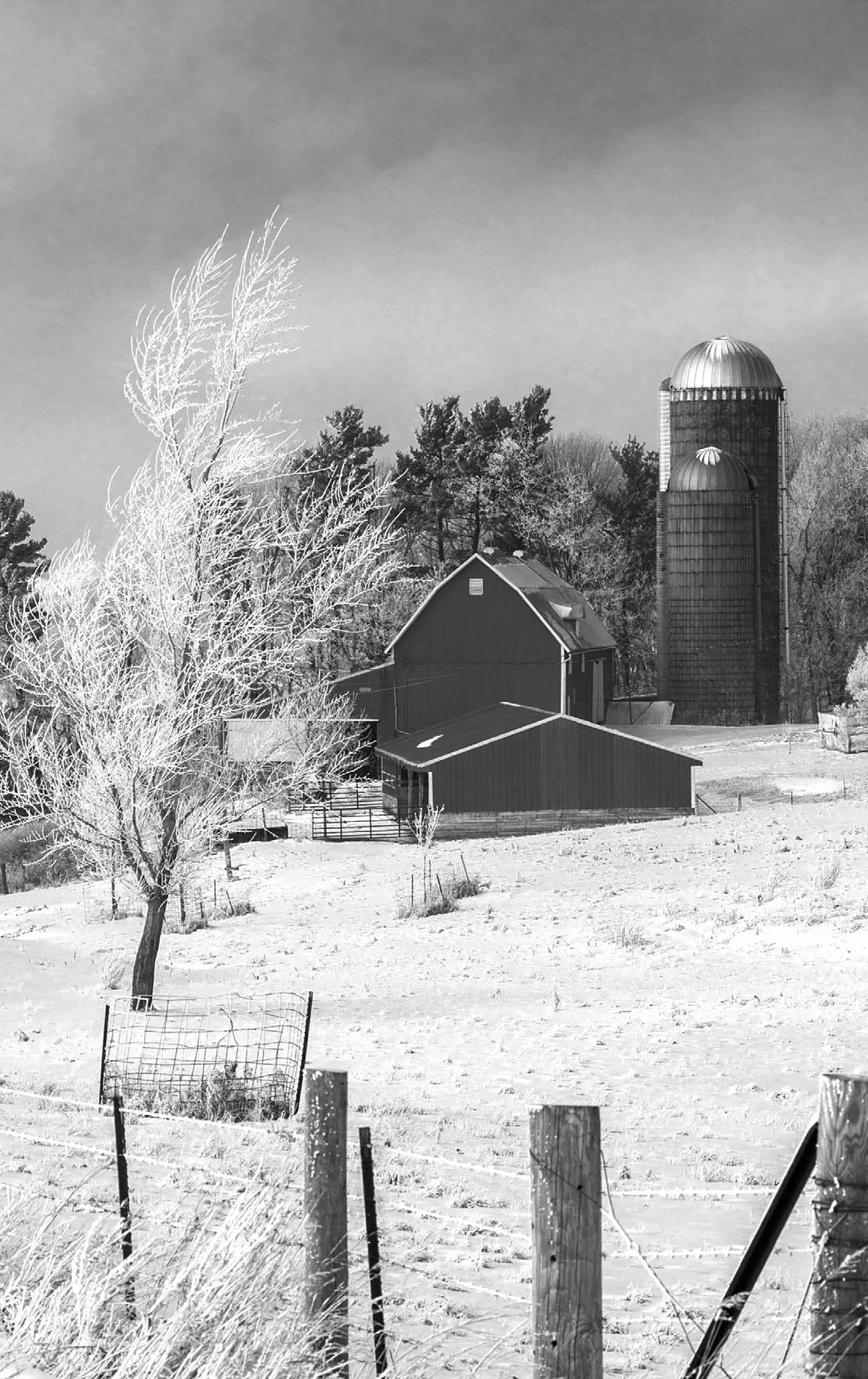
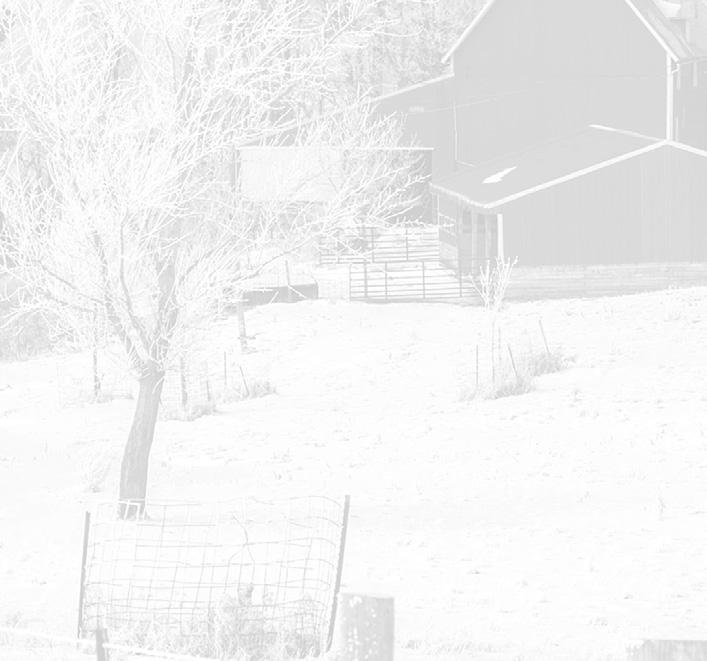







Dairy Star • Saturday, March 9, 2024 • Page 11 Who do you call? The Best Service Crews, The Best Replacement Parts, The Best Service... That’s The Osakis Silo Advantage To You!!! 320-808-3936 300 E Main St., Osakis, MN • 320-859-5340 Visit us online at www.osakissilo.com IF YOU HAVE A PROBLEM CALL US TODAY! It’s 30 below zero and you break an auger. Who do you call? You’re lling your silo and you blow up your distributor or ll pipe. Who do you call? You’re running feed out and your gear box fails. Are you going to fork the feed out? It’s chore time, you throw the power switch and nothing happens. Who do you call? An electrician will not climb up there or be out in a timely manner. Osakis Silo will answer the call and handle these problems year round! We will get you up and running anytime and under any conditions. 24 Hours 7 Days A Week Call Anytime l WE FIX ALL SILOS! Quality Consistency KLC Farms Roasting, Inc. 320-352-3326 Visit www.roastedbeans.com Preferred By Bovines Everywhere Guess where your feed dollars are going? Our soybeans have the energy, protein, amino acids and bypass protein for your cows! Incorrectly roasted soybeans?
Sauk Centre, MN Buffalo, MN
DHIA: Now MORE
ever
than
A proactive approach to greenhouse gas reduction
Klinkner nds value in feed supplement
By Abby Wiedmeyer abby.w@dairystar.com
GENOA, Wis. — As an organic dairy farmer, Travis Klinkner sees himself as a conservation-minded person. When a representative from Neutral, a milk company, partnered with his dairy cooperative, Westby Cooperative Creamery, to help patrons reduce greenhouse gas emissions, Klinkner was rst to join the discussion.
“The National Milk Producers Federation (was part of) an initiative that the dairy industry would be net zero by 2050,” Klinkner said. “It’s an entirely voluntary situation, but I think this is coming down the pipeline. We can either be mandated on what we need to do, or we, as an industry, can take the rst steps in saying this is what the standard is and this is how we are going to achieve it voluntarily.”
Klinkner milks 60 cows with his wife, Krista, and their six children. The couple
bought the farm from her parents and aunt and uncle in 2015 and have maintained the organic operation. They crop 220 acres and grow most of their feed.
Klinkner worked with the representative from Neutral, and together, they decided to reduce GHG emissions on his farm by using Agolin, a feed supplement with essential oils. The product is added to the mineral mix at a ratio of 6 pounds per ton, which Klinkner adds to his total mixed ration.
The product is designed to stop methanogens from producing methane. Methanogens are microorganisms in the cow’s rumen that break down the sugars and produce methane. When those sugars are not broken down, the cow no longer produces methane. Because the cow is not producing methane, all the other bacteria that produce butterfat and milk get to feed on those sugars.
The results can vary, but farms are projected to produce 8.4% less methane by

using the product. Additionally, cows either consume 5% less dry matter intake while maintaining milk production,
or they consume the same amount of feed but produce 5% more milk.
Klinkner began feeding
the product in January 2022 and saw reduced feed intakes with steady milk production in three weeks. He noticed improved body condition on his cows and consistent components throughout the summer months when they are normally more volatile.
“I’m getting benets besides the greenhouse gas emissions,” Klinkner said. “The added bonus is that when I get scored, I’ll have a lower carbon intensity.”
Klinkner has worked with his nutritionist to adjust the ration because the cows are now more efcient with intake. Klinkner said he has had to pull corn from the diet so stools do not get too loose and cows lose milk production.
Because he is utilizing the product as a trial, Neutral is compensating Klinkner for his participation.
“The awesome thing about working with Neutral is they’re taking advantage of the carbon credits now as a part of the milk ow


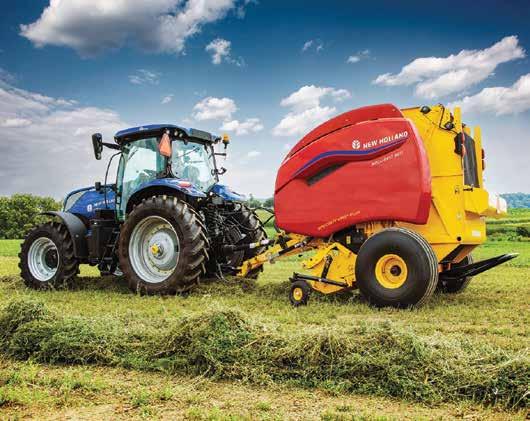






Page 12 • Dairy Star • Saturday, March 9, 2024 Come in and Save! www.modernfarmequipment.com ∙ SAVE 10% ON PARTS ∙ SAVE 10% ON FILTERS ∙ SAVE 10% ON BATTERIES ∙ SAVE 10% ON TILLAGE WEAR PARTS ∙ SAVE $10 PER ROLL OF NET-WRAP ∙ SAVE $2 PER BALL OF TWINE PLEASE JOIN US FOR OUR OPEN HOUSE MARCH 18-23, 2024 SPECIAL FINANCING AVAILABLE! Ask us about shipping options GET 10% OFF LABOR ON SERVICE AND REPAIRS, ALONG WITH 50% OFF TRUCKING Schedule your spring maintenance inspections before March 31 and you may also be eligible for 6 extra months of parts warranty on repairs we complete! NO INTEREST FOR 120 DAYS* ON QUALIFYING PURCHASES OF $750 OR MORE** Interest will be charged to your account from the end of the 120 day promotional period if the promotional balance is not paid in full within the promotional period. Offer valid on new genuine New Holland or remanufactured parts and related services. Purchases must be made on the CNH Industrial Capital Productivity Plus® Account within 14 days of the Event at a participating New Holland dealership located in the United States. * Subject to credit approval. Terms and conditions apply. Ask an associate for details. With credit approval. After the promotional period, the standard variable information and additional details. Offer valid for Accounts in good standing; see dealership for details. Minimum payments required. May not be combined with any other credit promotional offer. ** Purchase requirement before taxes, fees and other discounts and must be made in a single transaction. At the Pierz and Sauk Centre locations! Turn to KLINKER | Page 13
ABBY WIEDMEYER/DAIRY STAR
Travis Klinkner takes a break Feb. 16 at his farm near Genoa, Wisconsin. Klinkner milks 60 organic cows with his wife, Krista, and their six children.
Con nued from KLINKER | Page 12 stream,” Klinkner said. “So, they’re actually paying me to feed this product. It’s not paying for the product in full, but with the added benets that I’m getting, I could’ve easily paid for the product and then some.”
While Neutral is no longer purchasing milk from Westby Cooperative Creamery, Klinkner has remained in partnership with their representative to brainstorm ideas to work toward the net zero initiative.
The pair plans to plant trees in the pastures to create silvopastures, a symbiotic relationship between trees and grazing cattle that improves carbon sequestration. The trees will be nitrogen producing varieties like honey locust.
 ABBY WIEDMEYER/DAIRY STAR
ABBY WIEDMEYER/DAIRY STAR

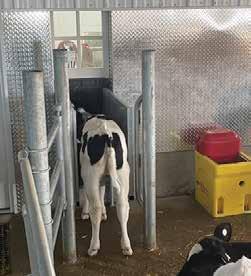

“My goal is to provide shade in the back of my pasture where my cattle tend to not spend a lot of time,” Klinkner said. “The trees over 30 years will continue to pull in carbon and sequester carbon. So, it’s going to be a benecial practice.”
Klinkner is also looking at options with manure. Since digesters are not a practical option for a farm of his size, he is researching manure storage additives that reduce GHG emissions. Another idea is to compost the bedded pack on elds to recycle and reuse nutrients on crops so they are not lost.
Further changes that Klinkner hopes to make involve solar energy.
“As we nd some of these new
technologies, there’s plenty of opportunities to reduce greenhouse gases as a byproduct of becoming more efcient,” Klinkner said. “Right now, the way the dairy industry is, we’re not going to get paid more for our milk. So, the greatest opportunity is going to be to minimize our input costs. Some of the ways we can become more efcient will result in producing less greenhouse gases.”
Klinkner said that while he does not believe the dairy industry to be the cause of climate issues, he does see opportunities to be part of the solution.
 ABBY WIEDMEYER/DAIRY
ABBY WIEDMEYER/DAIRY






Dairy Star • Saturday, March 9, 2024 • Page 13 Calf Zone Melrose, MN Brock Zierden bzierden@Leedstone.com 320.293.6192 Glencoe, MN Paul Becker pbecker@Leedstone.com 320.510.0200 Plainview, MN Keith Fuerstneau kfuerstneau@Leedstone.com 507.273.3367 Menomonie, WI Darren Pieper dpieper@Leedstone.com 715.307.5750 CONTACT YOUR LEEDSTONE REP TODAY! Leedstone.com/equipment-team • • Family & veterinarian owned since 1994 for the latest barn equipment news from Leedstone! GET THE BEST IN CALF FEEDING & HOUSING • Data analysis app for management support • Scales for weight measurement • Automatic animal monitoring & alerts • Individualized feed programs • Removable sidewalls provide pen-to-pen isolation & disease prevention • Fully customizable; various wall lengths back wall options, & bucket & bottle holder options • Easy to clean Talk to us about all your calf feeding needs! Raised Calf Zone pens are also available! Automatic Calf Feeder Freestanding Pens CalfExpert
Travis Klinkner measures the mineral mix for the total mixed ra on Feb. 16 at his farm near Genoa, Wisconsin. Klinkner uses an essen al oil supplement in the mineral mix that causes the cows to produce less methane.
STAR
Travis Klinkner pushes up feed Feb. 16 at his farm near Genoa, Wisconsin. Klinkner is taking a proac ve approach to reducing greenhouse gas emissions by feeding an essen al oil supplement to his herd.



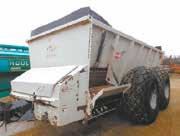

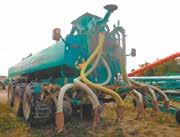

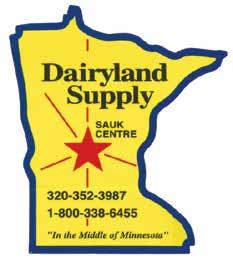

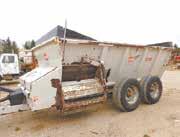

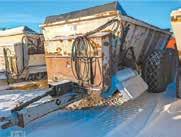
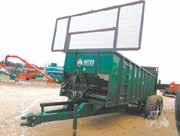







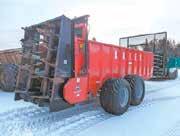

Page 14 • Dairy Star • Saturday, March 9, 2024 SAUK CENTRE, OFF I-94 ON THE CORNER OF HWY. 28 & 71 SOUTH M i n n e s o ta ’s LargestFeeding and ManureHandli n g D e a rel Ifyouhavea barn, we haveasolution. www.dairylandsupply.com Holy Used Slinger Spreaders! KUHN KNIGHT 8141 # 22124 - $38,500 2009 HOULE EL84-5000 # 2342- $39,500 KUHN KNIGHT SLC150 # 2364 - $79,900 2009 HOULE EL48-6D6100 #2285 - $38,500 KUHN KNIGHT 8124 # 23112- $24,500 H & S 3143 #2379 - $19,900 KUHN KNIGHT PS160 #2403- Call KUHN KNIGHT 8141 # 22132 - $41,500 MEYER 9530 #2351- $95,900 NEW HOLLAND 195 #2359- $18,900 2018 ARTEX SB600 # 23121- $49,000 KUHN KNIGHT SLC126 #2291 - $42,900 2020 HAGEDORN HYDRA-SPREAD SERIES II 2277 #2382 - $38,900 H & S HP550VB # 2393- $31,500 NEW HOLLAND 195 #23110 - $18,900 2015 ARTEX SB600 #2402- $49,000 KUHN KNIGHT 8150 #2284 - $59,500 The most versatile spreader on the market! More Used Spreaders
from our side our side OF THE FENCE THE
Why did you decide to serve as a board member, and how has that involvement benefited you?
Peter Mlsna
Hillsboro, Wisconsin
Vernon County
834 cows
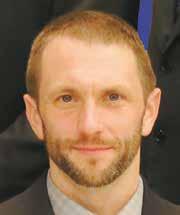
Which boards do you serve on, and how long have you served? I started coaching middle school wrestling in 2008, which comes with a seat on the youth wrestling board. In 2013, I started on the United Cooperative board by way of the Hillsboro Farmers Cooperative warehouse merger.
Why did you decide to serve on these boards? In both cases, someone already involved with the program asked and encouraged me to get involved.
How do you nd time for meetings and duties amid dairy farming? My family has been very helpful and supportive along with our great team of employees. My 16-year-old nephew comes in early, before school, to help on the days when I have a morning meeting. Tell us the best experience you’ve had since being appointed to these boards. The people are the best part. Engaging with the fellow board members and network of people involved to work for bettering the organization and community has been the most rewarding aspect.
How has being involved within these organizations beneted you? Seeing the inner workings of these organizations helps to inspire ideas for my day-to-day life.
What do you enjoy most about these roles? It is refreshing to be surrounded by so many driven and innovative minds and positive energy.
Tell us about your farm and your plans for your dairy this year. At Ocooch Dairy, we harvest milk in a double-16 parallel parlor. We have a longtime relationship supplying milk for Grande Cheese Company, and we have been lucky to have a continuous ow of dedicated and distinguished truck drivers responsible for hauling our milk each day. We have sand-bedded free stalls in both a naturally ventilated and a tunnelventilated barn. It takes a lot of good people to make the farm function. My sister and her legion of learners lead the charge with enthusiasm and optimism for the future. At 74, our father has a steady hand on the reins. Our farm family consists of 28 employees, with neighbors and a niece and nephews fueling the machine. We team up with custom operators for nutrient applications and harvesting of 750 acres of corn and 650 acres of alfalfa. This year, we're hoping to continue improving cow comfort by renovating our free stalls to better t our cows’ size.
 Linda Ceylor Catawba, Wisconsin Price County
Linda Ceylor Catawba, Wisconsin Price County
40 cows
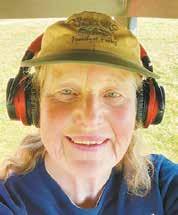
Which boards do you serve on, and how long have you served? I serve on the Wisconsin Farmers Union board where I represent District 1, a group of 15 counties in the northernmost part of Wisconsin. I am also board secretary. I am now serving my second term and have served for ve years. I also represent Wisconsin Farmers Union on the Wisconsin Beef Council, having served as a director for two years.
Why did you decide to serve on these boards? It is important to invest the time in these organizations, to be a part of the solution to the problems we face in agriculture.
How do you nd times for meetings and duties amid dairy farming? I have outstanding help on the farm. I am the sole owner of my farm, Hillside Dairy. That allows me to attend not only meetings, which always involve travel, but also state and national conferences, which will have me absent for several days.
Tell us the best experience you’ve had since being appointed to these boards. I have had so many positive experiences. Overall, getting to know the other extremely committed individuals who take time to serve on these boards and give voice to the hard-working farmers and rural citizens in Wisconsin is the best part. I appreciate their approach to solving some of the common problems we face throughout the state.
How has being involved with these organizations beneted you? I enjoy learning more about issues that we face and being a potential part of helping to solve these issues. I like to talk to district members to hear what issues they face in their communities and see how my role as a board member can advocate for solutions. All in all, with the learning and representation, I have the opportunity to make a difference.
What do you enjoy most about these roles? I like to share (probably too much) with whomever asks the benets of both organizations and advocate for them. I like the thought and discussion of meetings and the ability to both participate in discussion and to bring ideas and policy of both organizations to the other to educate and promote.
Tell us about your farm and your plans for your dairy this year. We milk in a double-4 herringbone parlor with a cover-all freestall barn that can house 60 cows. Alex Briske and Caleb Kopecky both help on the farm. After my husband’s sudden death in 2019, I am blessed to have a very supportive community. We farm about 375 acres of owned and rented farm ground. All of the land is in grass and clover, either for rotational grazing, baleage or both. We ship certied organic, grass-fed milk to Organic Valley.

Theodore Scholze
Humbird, Wisconsin
Clark County
550 cows
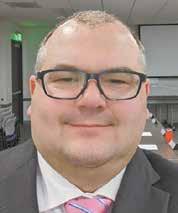
Which boards do you serve on, and how long have you served? I am president of my local school board — the Alma Center, Humbird and Merrillan school district. I have been on the board for seven years. I was also just elected to the board of directors of Foremost Farms USA.
Why did you decide to serve on these boards? My brother and I farm together, and we believe that we have a duty as community members to be involved in the community whether it be volunteer work, local government or other ways to be part of the fabric of the community. He was asked to be on the town board and I on the school board.
How do you nd time for meetings and duties amid dairy farming? We have a great team of employees who share our values and beliefs, so we are able to leave the farm in good hands while we are at board meetings. This can get busy as our children are also active in school activities, but we, as a team, all pull together for each other so things get covered.
Tell us the best experience you’ve had since being appointed to these boards. These experiences have helped me to expand my network and expand it into circles that I wouldn’t otherwise be a part of. I have met some great people and been exposed to new ideas that have been good to take back to the farm.
How has being involved within these organizations beneted you? It has helped me to be a more compassionate person as it has exposed me to struggles of others and helps me to not be so self-centered. I realize that there is a greater community that I am part of, and I need to be willing to be part of it.
What do you enjoy most about these roles? The people I meet and the things that I learn.
Tell us about your farm and your plans for your dairy this year. We milk 550 cows in a double-10 herringbone parlor. Cows are housed in freestall barns on sand bedding. We raise our replacement calves and farm approximately 2,000 acres of various crops including hay, corn, soybeans and wheat. Our milk is shipped to Foremost Farms USA. We also have about 300 beef cattle that we raise and sell primarily direct to consumer via a website or one of our two retail locations.

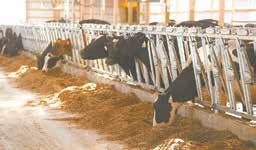
Dairy Star • Saturday, March 9, 2024 • Page 15 Turn to OUR SIDE | Page 16
www.norbco.com 67962 State Hwy 55, Watkins, MN 55389 • 320-764-5000 MA KING COW COMFORT OUR PRIORITY Curtain SystemsVentilation SystemsFreestall SystemsHeadlocks
Angela and Nathan Wiese
West Rosendale, Wisconsin
Fond du Lac County
220 cows
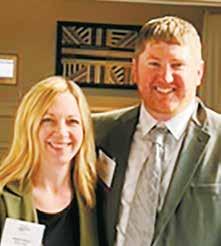
Which boards do you serve on, and how long have you served? This will be my third year serving on the FarmFirst Dairy Cooperative board as the Young Cooperator chair. During my rst year, I served as president of the chair, and for the last two years, I have served as vice president of the chair. The vice president has more responsibilities and sits in on board meetings. I don’t get to vote, but I can put my two cents in. With help from two other board members, I also set up young cooperative events. I am also a delegate for the FarmFirst board, and I attend the annual meeting where we break into districts and vote on bylaws for the co-op that we want to push for at the national level. Furthermore, I am on the advisory board for the young cooperative at the National Milk Producers Federation. We hold a couple virtual meetings with people from all over the country and three in-person events each year, and we are expected to attend two of the three. One of the events takes place in Washington, D.C., and we meet with legislators from our state.
Why did you decide to serve on these boards? My dad is on the Country Visions Cooperative LLC board, and he encouraged me to do it. I’ve been a delegate for a while at FarmFirst and moved up in rank. I like sitting in on board meetings and would like to run for a district position soon. I got involved with NMPF when the annual meeting was going to be held in New Orleans, Louisiana. Another couple backed out, and I received a phone call asking if my wife and I wanted to take their place on the trip.
Jeff Hammerand
Bankston, Iowa Dubuque County
170 cows

Which boards do you serve on, and how long have you served? I am on the District 8 Iowa Holstein Association Board and Iowa Holstein Association board of directors. I have served for 20-25 years. For the local board, duties include planning and scheduling meetings, making agendas for meetings, partaking in execute meetings, and hosting and planning state conventions, picnics and state shows. State board duties include carrying out state business, and helping plan and host two national Holstein conventions. I also co-chaired the Dairy Bar for the 2014 National Holstein Convention. My wife, Tammy, and I have also been chairs of the Iowa Junior Holstein Association for 15 years. Duties there include running food stands, meetings and state junior conventions as well as coaching juniors for national convention contests. For the Iowa State Dairy Association Princess Board, I just completed a six-year term. Duties there include organizing and improving princess contest and trying to make each princess appearance more impactful, informative and educational for consumers.
Why did you decide to serve on these boards? As a family, we believe it is important to give back and encourage the youth of our industry. If you are going to give back, you might as well do something you are passionate about. I am passionate about teaching young people, so they have a more informed future and will pay the passion forward.
How do you nd time for meetings and duties amid dairy farming? I am the herdsman and feeder for our dairy. We have three full-time employees who do all the milking. When I have to attend meetings, my dad covers for me on the farm. For the FarmFirst board, I usually have to drive to Madison, Wisconsin, once a month for the day. I get up an hour earlier, feed the cows and then take off. My dad nishes anything I didn’t get to. When I go away for overnight trips, my dad does the feeding as well as my other chores. If you want to serve on a board, you will nd the time. It basically just takes away from your sleep.
Tell us the best experience you’ve had since being appointed to these boards. Getting to meet other farmers has been the best experience. Through FarmFirst, I meet farmers from Wisconsin and beyond and have the chance to see what they’re going through. I like face-to-face contact, and networking is another opportunity the board provides. Through NMPF, I meet farmers from all over the country and have met couples who we keep in touch with. Some of them are facing struggles that you don’t even think about, but we all have the same problem when it comes to milk price and labor. I also enjoy getting to see other places, such as Washington, D.C., New Orleans and Colorado.
How has being involved within these organizations beneted you? Getting to know how a co-op is run helps you gure out how to run your own farm. Attending board meetings has given me the idea that I want to run for board member, so I have the right to vote.
What do you enjoy most about these roles? I enjoy meeting and talking to people and knowing what’s going on with the FarmFirst board and the industry. I also enjoy gaining leadership skills and doing interviews with media outlets.
Tell us about your farm and your plans for your dairy this year. I am the third generation on my family’s farm. We went from milking 40 cows when I was in high school to expanding to 120 cows in a stanchion barn after I nished technical college. We built a double-6 parlor and freestall barn in 2008. Seven years ago, we built an automated calf barn. A couple years after that, we built a shop. We farm 950 acres, and we ship our milk to Agropur. When we expanded, I took over the main responsibilities from my dad, and now I am the master of all trades. I farm with my parents, Bill and Tammy, and my mom is the calf feeder. My wife, Angela, and I have three kids, Brody, Drew and Mika, who also help.
How do you nd time for meetings and duties amid dairy farming? It is a family affair. My wife does a lot of chores. Also, I have my daughter and son-in-law’s help. We get stuff done as a family. You have to be willing to make the extra effort.
Tell us the best experience you’ve had since being appointed to these boards. Watching our juniors as their friendships and passion grow throughout the years. Also, seeing them earn national championships in dairy bowl and jeopardy isn't too bad either. Being co-chair of the Dairy Bar for the National Holstein Convention was a challenging yet worthwhile experience, which we are receiving compliments on 10 years later.
How has being involved within these organizations beneted you? It has given us a chance to serve and meet many incredible people as well as help grow the youth of our industry and ignite their spark. The chance to network and learn from others has been quite valuable. We use some of the pieces of information learned along the way from other directors on a daily basis. There is a sense of satisfaction in being able to serve others.
What do you enjoy most about these roles? Relationships. The opportunity to meet people with our same passion and build upon that is priceless. Watching the juniors join at 9 years old, a little apprehensive, and then not only grow up but also grow in condence. Along the way, watching them become lifelong friends gives me great pleasure. Working side by side with the District 8 Holstein group; they have become some of our very best friends.
Tell us about your farm and your plans for your dairy this year. We milk 170 cows with my brother and niece in his swing-11 parlor. We concentrate on breeding good registered Holstein and Brown Swiss. Our milk is shipped to Scenic Central Milk Producers. We have recently started using some of our heifers for embryo recipients to improve and diversify our genetics even further. Tammy is employed by the neighbors as a calf care giver. We also own 110 acres in Bankston, our home location, that serves as the feed for our dry cows and youngstock.




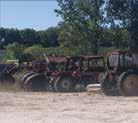
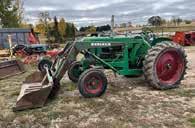

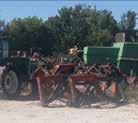



Page 16 • Dairy Star • Saturday, March 9, 2024 Con nued from OUR SIDE | Page 15 CALL FOR A QUOTE TODAY 605.368.5221 OR VISIT US AT equipmentblades.com Loader Edges Grader Blades Snow Plow Blades Custom Edges Skid Steer Blades Box Scraper Dozer Blades Wear Steel N6503 Pit Road Mount Calvary, WI, 53057 920-922-9966 americanimplement920@gmail.com IMPLEMENT INC White 2-135, duals, front weight - Call for Pricing WE BUY SCRAP METAL! Oliver Super 77 3,372 hours - $4,000 USED PARTS AVAILABLE! Glenco soil finisher Call for price Turn to OUR SIDE | Page 18
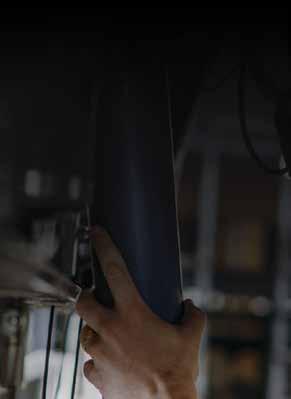



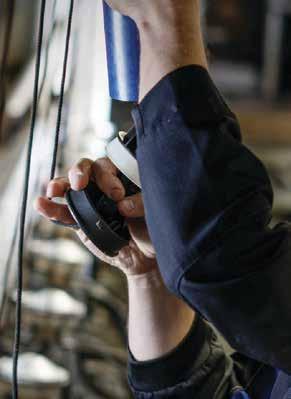

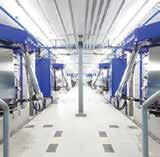

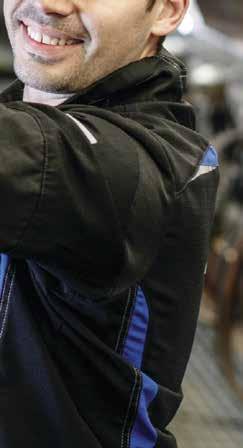


















Dairy Star • Saturday, March 9, 2024 • Page 17 JOIN OUR TEAM Now Hiring Service Technician Intern Apply Now! SCAN ME bit.ly/3fwYBl6 Paid Internship +1-800-636-5581 | Proudly serving you from Brookings, SD; St. Peter, MN; and Melrose, MN! DEALER Cutting-Edge Milking Equipment | Supply Delivery | Preventive Maintenance Herd Advisory & Software Support | Manure Management Services | Feed Management farm-systems.com © 2022 Farm Syststeems. All rig ts hts rese e rved. A-3386648395 Need Service? Keep your operation up and running with Farm Systems Your Local Milking, Manure and Feed Management Solutions & Service Provider
Virgil Haag
Mount Horeb, Wisconsin
Dane County
265 cows
Which boards do you serve on, and how long have you served? I have served on the Dairy Farmers of Wisconsin board for four years and the Mount Horeb FFA Alumni Board of Directors for 10 years. On the DFW board, I am a director representing dairy farmers in Dane and Jefferson counties. I am on the audit and channel committees. On the audit committee, we review the nancial information of the organization. On the channel committee, it is about where and how the dairy product is being moved throughout the system. On the FFA Alumni board, we pick the award winners for the chapter, oversee the major fundraiser of the annual toy show and mentor the members. We meet about four to ve times a year.

Why did you decide to serve on these boards? I have a responsibility to promote the dairy industry and agriculture. By being involved on boards, I can better educate myself, share that information with others and better tell our story to consumers.
How do you nd time for meetings and duties amid dairy farming? Since this is important to me, I work with my family and others to accommodate the time needed for my meetings and duties. On our farm, we all believe in the importance of off-farm involvement, so we cover for each other as we all serve in some organization.
Tell us the best experience you’ve had since being appointed to these boards. One great experience was traveling to Atlanta, Georgia, for the International Dairy Deli Bakery Association show. I got to see how Wisconsin dairy is perceived by people in the food and grocery sector. It was amazing to see their positive reactions to our products. I have learned so much from being on the DFW board. I have met many knowledgeable people in the dairy and promotions industry. It is truly the world-class people I have met that is the greatest experience.
How has being involved within these organizations beneted you? I have gained a much broader and deeper understanding of the global dairy industry. As I mentioned before, meeting great people and getting to see how consumers view our industry has been benecial. It has opened my eyes. I also want to share what I have learned with other farmers so they can gain a better understanding of where their checkoff dollars are going and what a difference it is making for the dairy industry.
What do you enjoy most about these roles? Getting to meet people in the industry who are passionate about Wisconsin dairying and sharing in that passion is what I enjoy most. I also enjoy networking with other Wisconsin dairy farmers. We come from diverse farming operations but all care deeply about dairying.
Tell us about your farm and your plans for your dairy this year. Our operating limited liability company consists of my wife, Dawn, and I and our son, Kody, and our daughter, Karsen. It is truly a family dairy. In late 2023, we moved into our new 240-cow tunnel-ventilated robotic barn. This project has been in the process for a couple of years. So, the goal for 2024 is to maximize the potential of that new facility. We own part of our crop acres, rent others and work with neighbors to cover our feed needs. We are fortunate to ship our milk to Klondike Cheese Co.


Keith Welgraven
Ruthton, Minnesota
Pipestone County
100 cows
Which boards do you serve on, and how long have you served? I have been the treasurer of Aetna Township for 30 years. I have been on the Pipestone County American Dairy Association board for about ve years, a trustee on our church board for two years and a FarmFirst Dairy Cooperative delegate for several years.
Why did you decide to serve on these boards? I like to be involved. I enjoy visiting with and meeting people.

How do you nd time for meetings and duties amid dairy farming? Getting time to serve can be challenging as my cows take most of my time. I do enjoy getting things accomplished and meeting new people.
Tell us the best experience you’ve had since being appointed to these boards. I would say that my best experience is serving on our county ADA board, because we try to be active with our community to tell the dairy story. I’ve been blessed to meet and work with many nice people and gained many good friends.
How has being involved within these organizations beneted you? The main benet has been seeing old friends and making new ones. It’s fun to have an inside look at how things are run. I have an excuse to get away from the farm for a little while when the board meeting is located far away.
What do you enjoy most about these roles? I enjoy being involved with our local community. I help the ADA serve ice cream at the Pipestone County Fair. It’s great to see the smiles on kids’ faces when you serve them ice cream. We had 13 avors last year, and some people came back several times in a day so that they could try them all. I guess we are all kids when it comes to ice cream.
Tell us about your farm and your plans for your dairy this year. Our farm has Milking Shorthorn and Holstein cattle. We farm about 450 acres and raise corn, alfalfa, soybeans, oats and rye. We have a parlor and freestall setup. The farm was started by my dad and mom, Bert and Alvina, in 1968. My wife, Jeanna, and I operate it now. Our daughter, Katelyn, is a freshman at the University of South Dakota in Vermillion, South Dakota.

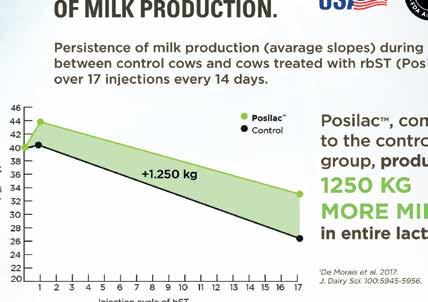



Page 18 • Dairy Star • Saturday, March 9, 2024 Con nued from OUR SIDE | Page 16
+2,755 lbs
LBS MORE MILK!
2,755
Bongards’ Creameries
Has been a quality market for MN dairy farmers for over 100 years. MN producers provide one of the country’s most distinctive brands of cheese that is still made using the same Old World craftsmanship and has been combined with cutting-edge technology to produce cheese that delivers unforgettable taste with unparalleled quality. MN Dairy farmers and Bongards, quality that stands the test of time. We offer a competitive base price, premiums, and the best eld representatives in the industry.
13200
Bongards, MN 55368 (952) 466-5521
Fax (952) 466-5556
110 3rd Ave. NE
Perham, MN 56573 (218) 346-4680
Fax (218) 346-4684
J-Bunks

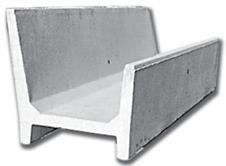
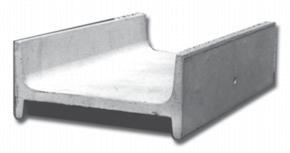
“They







“If you don’t have cow comfort, nothing else seems to matter. We minimize stresses at calving on her feet and legs, making sure she has feed and water and a good place to rest, she’s clean and she’s dry.
“That leaves the udder as the next thing to take care of, and with Udder ComfortTM they transition a lot more smoothly,”
Maynard, Iowa, milking 750 95 pounds of 4.2 fat milk.
“For 10 years we used Udder Comfort periodically. At the 2022 World Dairy Expo, they talked me into trying the Udder Comfort Battery-Operated Backpack Sprayer. I didn’t think it insisted, and they were right!
SCC fell from 165 to 137,000.
“We also notice any clinicals that do show up, clear faster, and don’t
“Now, we continue to use it 3x/day on all fresh cows for a week after calving. If we have a mastitis cow or high SCC, or anything not perfectly normal, we spray it on
“With fresh cows, we see a lot more udder texture at 2 weeks in milk as edema is pulled out. You can They’re up moving around more. They eat. They drink. They make more milk and higher quality milk.
“The Udder Comfort Backpack Sprayer made us more compliant on our udder health. It’s more user-friendly
It charges fast and holds the charge, always ready for use in parlor, headlocks or freestalls.”



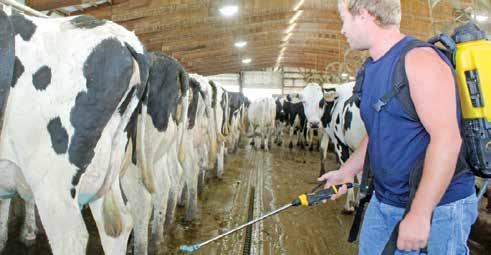

























Dairy Star • Saturday, March 9, 2024 • Page 19
better...
more milk and higher quality milk.”For external application to the udder only, after milking, as an essential component of udder management. Wash and dry teats thoroughly before milking. Her Comfort is Our Passion! Softer udders Faster milking Better quality MORE MILK 1.888.773.7153 uddercomfort.com uddercomfort.blog Call to locate a distributor near you. Quality Udders Make Quality Milk Helping reach their potential since 1998! 750 Registered Holsteins, 95 lbs/cow/day 4.2F 3.2P, SCC 137,000 See us at CentralPlainsDairyExpo Sioux Falls, Mar. 19-21 Wisconsin Farm Show Oshkosh, Mar. 26-28 CONCRETE PRODUCTS 1-800-982-9263 Serving Minnesota, Iowa and Wisconsin Since 1965 www.alsconcreteproducts.com AL’S FEED BUNKS • Fence line feed bunk with slanted back • 15” feed trough depth • 24” high front side (Also available in 18-1/2” height for smaller cattle) • Deep Feeding Capacity • Long Service Life & Cattle Safe • Available in 12”, 14” and 16” depths • 38” wide, 34-1/2” high on back side • 24” high on front side • 20” deep feed trough • 6” feed saver lip ALSO AVAILABLE: • Cattle Slats • Holding Tanks • Cattle Guards • Bunker Silo Pictured with optional guard rail post mounted on the inside of the bunk or can also be placed outside.
Line Feed Bunk H- Feed Bunk Super High Capacity Fence Line Bunk
insisted, and they were right! SCC fell... Fresh cows feel
They make
Fence
& H-Bunks available for large and small animals
Co. Rd.
51
TOP PERFORMERS
Craig Carncross, of Wargo Acres
Consistent ration, attention to detail help Carncross achieve herd average over 34,000
How many times a day do you milk, and what is your current herd average, butterfat and protein? We milk three times a day. Our herd of registered Holsteins average 34,620 pounds of milk, 4.26% butterfat, 1,474 pounds of butterfat, 3.38% protein and 1,169 pounds of protein. We have one cow over 400,000 pounds of lifetime milk, three cows over 300,000, and more than 20 cows over 200,000. Our fastest cow to get to over 300,000 is 7 years old. She made 40,000 pounds of milk as a 2-year-old and has been making 45,00050,000 pounds ever since.
Describe your housing and milking facility. Our cows are housed in sand-bedded free stalls and milked in a double-8 herringbone parlor. We built this barn in 2007 and switched to milking three times a day in 2009. Cows are organized by age and size more than production. We have a 2-year-old pen, a younger mature pen, and an older mature pen or high group. We feed one ration to the milking herd, and in total, we feed three rations: one for milk cows, one for dry cows and one for post-fresh cows. Most of our heifers are on-site, but all of our pregnant heifers are sent to a custom heifer raiser.

Craig Carncross pauses for a photo Feb. 22 in the freestall barn on his farm near Lodi, Wisconsin. Carncross milks 459 cows three mes a day and has a herd average of 34,620 pounds of milk, 1,474 pounds of bu erfat and 1,169 pounds of protein.
Who is part of your farm team, and what are their roles? I own and manage the farm. My parents are invested in the dairy but
are retired now, which is a recent change. My dad continues to drive tractor and haul cattle. Ryan O’Leary helps me with
the day-to-day management of the farm, including herdsmanship duties and crops. Ryan runs our repro program as well. He
also helps manage our team of employees. Jimmy Rodriguez is another key employee. He is our feed mixer and is a talented guy in the shop, and some of our success comes from him doing a good job mixing feed and his attention to detail. We also have seven other employees, some of whom are cross trained in more than one area.
What is your herd health program? We work with vets from Lodi Veterinary Care to conduct a herd health check every other week. On Mondays, we do pregnancy checks, and on Wednesdays, we do lung ultrasounds on young calves. Both days also provide an opportunity to take care of any miscellaneous issues. We run an aggressive vaccination program and give boosters with all of our vaccines. Milk cows receive multiple modied live vaccines and a general broad-spectrum clostridium vaccine. Every cow receives at least three J-5 vaccines for mastitis prevention per lactation. We try to pass all the immunity from dry cow vaccines on to the calves through colostrum.














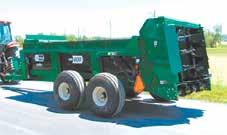







Page 20 • Dairy Star • Saturday, March 9, 2024
| Columbia
|
| Lodi, Wisconsin
County
459 cows
STACEY SMART/DAIRY STAR
| Page 23
Turn to TOP PERFORMERS
Over 85 employees to serve you 24/7/365 and to keep your herd comfortable and pro table.
service all brands of milking equipment.
to help, just give a holler!
YOU
BEING A DAIRY FARMER Dorchester, WI 715-654-5252 Spring Valley, WI 715-772-3201 West Salem, WI 608-633-6690 Mondovi, WI 715-926-5777 Mora, MN 320-703-9752 Pierz, MN 320-468-2494 St Charles, MN 507-932-4288 Wadena, MN 218-632-5416 Main: (715) 772-3201 advanceddairy@wwt.net Business Hours, all locations: Mon - Fri 8:00 am - 4:30 pm, Sat & Sun Closed Call For An Appointment - 24/7 Emergency Service Available from all locations CURTISS 715-613-7308 EDGAR 715-352-2011 BOSCOBEL 715-937-5190 Edgar Curtiss Boscobel PikRite HP500 Coming Soon PikRite HR550 Coming Soon PikRite HR400 Rental Unit PikRite HR550 Rental Unit Call us for your Spreader needs! PIKRITE SPREADERS Custom Color Options 2 Year Warranty
We pride ourselves in great, respectful service every time we step onto your farm. We also
We’re here
THANK
FOR







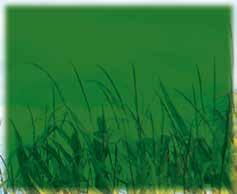



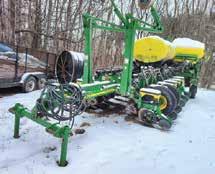



JD
JD
JD
JD
JD
Case
JD
JD








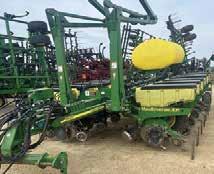

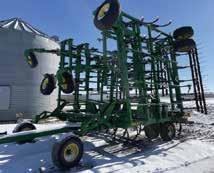








JD 1760 2008, 12 Row, 30 in. Spacing, #577255
JD 1760 2011, 12 Row, 30 in. Spacing, #577544
JD 1770 2001, 24 Row, 30 in. Spacing, #571373 ......................................
JD 1770 2000, 12 Row, 30 in. Spacing, #571891 ...................................... $24,000
JD 1775 2018, 12 Row, 30 in. Spacing, #570817 ....................................
JD 1775 2022, 12 Row, 30 in. Spacing, #574581 ....................................
JD 1795 2023, 24 Row, 20 in. Spacing, #573347 ....................................
Case IH 2150 2019, 12 Row, 30 in. Spacing, #575403............................ $139,900
JD 7200 1994, 12 Row, 30 in. Spacing, #576034 ...................................... $15,500
JD 7200 1995, 12 Row, 30 in. Spacing, #577205 ...................................... $12,900
JD 7200 1993, 12 Row, 30 in. Spacing, #578066 ...................................... $12,700
JD 1770NT 2012, 24 Row, 30 in. Spacing, #562337 .................................. $71,900
JD 1770NT CCS 2014, 24 Row, 30 in. Spacing, #571366 ........................... $97,900
JD 1770NT CCS 2013, 24 Row, 30 in. Spacing, #571367 ......................... $109,900
JD 1770NT CCS 2008, 24 Row, 30 in. Spacing, #574675 ........................... $89,900
JD 1775NT 2022, 24 Row, 30 in. Spacing, #549842 ................................ $389,900
JD 1775NT 2022, 24 Row, 30 in. Spacing, #565368 ................................ $269,900
JD 1775NT 2023, 24 Row, 30 in. Spacing, #566196 ................................ $369,900
JD DB60








JD DB66 2003, 24 Row, 22 in. Spacing, #577083 ...................................... $63,500
JD DB80 2012, 24 Row, 30 in. Spacing, #571885 .................................... $232,900
Wil-Rich PT2200, 24 Row, 22 in. Spacing, #572626 ................................ $32,100
INTEGRAL PLANTERS
JD 1710 2000, 12 Row, 30 in. Spacing, #564510 ...................................... $15,500
JD 1720 2003, 24 Row, 30 in. Spacing, #567177 ...................................... $37,000
JD 1720 2005, 24 Row, 30 in. Spacing, #569419 ...................................... $41,500
JD 1720 2009, 24 Row, 30 in. Spacing, #569760 ...................................... $41,500
JD 1720 CCS 2019, 12 Row, 30 in. Spacing, #569017 ............................... $89,900
JD 1720 CCS 2019, 12 Row, 30 in. Spacing, #569018 ............................... $79,900
JD 1725 CCS 2023, 24 Row, 30 in. Spacing, #564619 ............................. $184,900
JD 1725 CCS 2022, 24 Row, 30 in. Spacing, #572638 ............................. $154,900
Moore Built 24 22, 24 Row, 22 in. Spacing, #576259 ............................. $34,500
Moore Built 24R22 2000, 24 Row, 22 in. Spacing, #566760 ................... $25,000
PULL-TYPE SPRAYERS

Redball 580, #576038............................................................................. $12,500
Redball 680, #569340............................................................................. $10,000

Wil-Rich
Wil-Rich
Case
DMI
Case
Case


DRAWN PLANTERS
JD 1760 2008, 12 Row, 30 in. Spacing, #568124
JD 1760 2008, 12 Row, 30 in. Spacing, #577068

JD
JD
JD
JD
JD
Row, 22 in. Spacing, #576258 .................................... $479,000





Dairy Star • Saturday, March 9, 2024 • Page 21 Equipment and pictures added daily • Go to www.mmcjd.com Locations throughout minnesota & western wisconsin! CALL TODAY! (320)365-1653 SEE OUR COMPLETE INVENTORY WITH PICTURES AND DESCRIPTIONS AT: www.mmcjd.com 2021 John Deere 2680H #574795 $79,900 Financing subject to pre-approval through JD Financial. Some restrictions apply. See dealer for details. FLEXIBLE FINANCING OR CASH DISCOUNTS ON QUALIFIED PLANTERS & TILLAGE FIELD CULTIVATORS Case IH 200 2013, 60 ft., 5-Section Folding, #563382 ............................. $49,900 Case IH 255 2022, 60 ft., 5-Section Folding, #575440 ........................... $164,900 JD 980 2002, 41 ft., 3-Section Folding, #559043 ...................................... $15,900 JD 980 1997, 42 ft., 3-Section Folding, #560834 ...................................... $13,500 JD 980 1998, 30.5 ft., 3-Section Folding, #577904 ................................... $12,500 JD 985 1998, 50 ft., 5-Section Folding, #574207 ...................................... $10,900 JD 2200 2002, 54 ft., 5-Section Folding, #556959 .................................... $19,500 JD 2200 2002, 55.5 ft., 5-Section Folding, #575710 ................................. $19,500 JD 2210 2012, 45.5 ft., 3-Section Folding, #573269 ................................. $42,900 JD 2210 2017, 65 ft., 5-Section Folding, #574527 .................................... $84,300
2210 2004, 41 ft., 5-Section Folding, #575153 .................................... $37,500
2210 2014, 53 ft., 5-Section Folding, #575187 .................................... $55,100
JD
JD
2210 2005, 27 ft., 3-Section Folding, #576023 .................................... $30,500
2230 2019, 60.5 ft., 5-Section Folding, #555708 ............................... $114,900
2230 2023, 60.5 ft., 5-Section Folding, #573361 ............................... $156,900
2230 2023, 60.5 ft., 5-Section Folding, #573362 ............................... $156,900
56 ft., 5-Section Folding, #574134 .................................. $134,900
2230 2021,
IH 4300, 38 ft., 3-Section Folding, #560870 .................................... $11,000
2230FH 2022, 56 ft., 5-Section Folding, #576394 ............................. $169,000
2230FH 2022, 56 ft., 5-Section Folding, #576395 ............................. $169,000
QUAD 5 1999, 46 ft., 5-Section Folding, #564834 ..................... $13,900
QUAD X, 40.5 ft., 5-Section Folding, #575373 ........................... $16,900
$40,900
IH Tiger Mate 200 2012, 50.5 ft., 5-Section Folding, #561242 ......
........................... $15,900
Tiger-mate 2, 50 ft., 5-Section Folding, #563708
$32,900
IH Tigermate 200 2008, 50.5 ft., 5-Section Folding, #576132 .......
$17,900
IH TigerMate II 1999, 55 ft., 5-Section Folding, #563481 ..............
...................................... $29,500
...................................... $39,900
...................................... $34,500
$52,500
......................................
$31,500
$108,000
$139,000
$419,900
2013, 24 Row, 30 in. Spacing, #550243 .................................... $149,900
DB60 2017, 24 Row, 30 in. Spacing, #562192 .................................... $249,900
DB60 2020, 24 Row, 30 in. Spacing, #569113 .................................... $349,900
DB60 2010, 24 Row, 30 in. Spacing, #569759 .................................... $151,500
JD
JD
JD
DB60 2018, 24 Row, 30 in. Spacing, #573437 .................................... $289,900
DB60 2017, 24 Row, 30 in. Spacing, #574768 .................................... $315,000
DB66 2012, 24 Row, 22 in. Spacing, #556901 .................................... $195,900
DB66 2019, 24 Row, 22 in. Spacing, #572188 .................................... $379,900
DB66 2023, 24 Row, 22 in. Spacing, #574902 .................................... $532,900
JD
JD
DB66 2007, 24 Row, 22 in. Spacing, #575704 .................................... $129,900
DB66 2022, 24
Farm King 1200 2013, #574125 ............................................................. $13,500
#573665 ........................................................................
#574077
Fast 7420 2005,
$11,900 Fast 9508,
................................................................................. $17,900
#576431 ........................................................................
2016, #554246 ......................................................................
Fast 9613N 2013, #574904 .....................................................................
#568081 ...................................................
2021 Kinze Mach-Till 261 #571167 $99,900 $44,900 2012 John Deere 2210 #561176 $43,000 2007 John Deere 2210 #574413 $133,500 2009 John Deere 1770NT CCS, #576764 $71,900 2012 John Deere 1770NT #562337 $299,900 2019 John Deere DB60 #551039 $199,900 2021 Case IH 2150 #569307
Fast 9524 2012,
$48,000 Fast 9518T
$63,900
$29,900 Hardi Navigator 4000 2012,
$18,900






















Rock Valley, IA 712-476-9290
United Dairy Systems, Inc. West Union, IA 563-422-5355
Monticello, IA 319-465-5931
WISCONSIN
Advanced Dairy Spring Valley, WI 715-772-3201
Bob’s Dairy Supply Dorchester, WI 715-654-5252
Ederer Dairy Supply Plain, WI 608-546-3713
DeLaval Dairy Service Kaukauna, WI 866-335-2825
Joe’s Refrigeration Inc. Withee, WI 715-229-2321
Mlsna Dairy Supply Inc. Cashton, WI 608-654-5106
Professional Dairy Services Arlington, WI 608-635-0268
Redeker Dairy Equipment Brandon, WI 920-346-5579
The Scharine Group Inc. Whitewater, WI 800 472-2880
Mt Horeb, WI 800-872-3470
MINNESOTA & SOUTH DAKOTA Farm Systems Melrose, MN 320-256-3276
Brookings, SD 800-636-5581
Advanced Dairy Mora, MN 320-679-1029
Pierz, MN 320-468-2494
St. Charles, MN 507-932-4288
Wadena, MN 218-632-5416













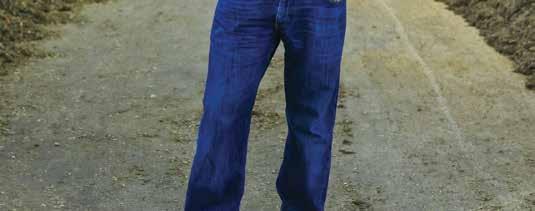

































Page 22 • Dairy Star • Saturday, March 9, 2024 Contact one of the following dealers to learn more: IOWA
Supply
Prairie Land Ag
Inc.
is a registered trademark of Tetra Laval Holdings & Finance S.A. and “DeLaval” is a registered trade/servicemark of DeLaval Holding AB. © 2024 DeLaval Inc. DeLaval, 11100 North Congress Avenue, Kansas City, Missouri 64153-1296. DeLaval does not claim that the results reflected herein are typical and this information does not constitute a warranty nor guarantee of service or performance. Actual performance and improvement will depend on a number of factors, including milking practices, type of cows, farm and herd maintenance practices. Services described herein are not intended or implied to be a substitute for professional veterinary advice, diagnosis, consultation, or treatment. Only a professional veterinarian can diagnose a medical condition. Your use of these products and services is governed by the terms and conditions set forth at www.delaval.com/legal. s c. c. es nt FIND COWS IN HEAT delaval.com With DeLaval Plus Behavior Analysis you have a tool that seamlessly integrates into your operation to give you and your team total visibility and oversight of your cows 24/7. Find out more about DeLaval Plus Behavior Analysis - it could be what’s next for your farm. H is a registered trademark of Tetra will depend on a number of factors, not intended or to be a subst prod & A titu p ion duc a Laval Holdings Congres does not cons ncluding itute profess se of these pro DeLaval Plus Behavior Analysis DeLaval Plus - Your Performance Portal PO Box 160, Albany, MN • (320) 845-2184 • Fax (320) 845-2187tfn Catch the Dairy Star’s Mark Klaphake with Joe Gill at 6:45 a.m. the 2nd & 4th Fridays of the month on KASM! Joe Gill • Farm Director SERVING CENTRAL MINNESOTA FOR OVER 50 YEARS FARM INFORMATION STATION Proud to be your Hometown Lumber Company since 1971! For all your Agricultural, Residential & Light Commercial needs: Planning/Drafting | New Construction | Updating | Portable Buildings Traditional Values. Continuing Excellence. Paynesville, MN | 320-243-7815 | BorkLumber.com
What does your dry cow and transition program consist of? Our dry cows are housed in a separate barn from the milking herd. Mature cows are dry for 50 days, and 2-year-olds are dry for 60 days. Dry cows are on a diet that we cut with a fair amount of wheat straw and use anionic salts to run a little negative balance for the animal, mostly for our fresh cow preventative program and calcium metabolization. Once cows are dry, we try to leave them alone. Hoof trimming and vaccines are done beforehand. We try to stay out of the dry barn and not create additional stress. The dry barn is close to the parlor, and we have people do a loop around the barn to check for fresh cows when bringing in cows for milking. We practice just-in-time calving, moving cows from sand-bedded free stalls to the maternity pen when ready to calve. Cows are placed in a post-fresh group for two weeks after calving. We step up the diet for post-fresh animals and feed a more energy-dense ration but not to the level of the milking herd. We try to move them in with the rest of the herd by three weeks post-calving.
What is the composition of your ration, and how has that changed in recent years? We feed a simple ration of mostly homegrown forages, shell corn and protein mix. We grow low lignin alfalfa and brown mid-rib corn silage as well as conventional corn silage. We don’t feed straight BMR silage because we don’t want to put all of our eggs in one basket out in the eld. We have had luck blending the two. We focus on having a consistent ration, balanced for amino acids. We try to check dry matter on forages every week. Our ration also includes byproducts such as cottonseed and malt sprouts, which we feed alongside alfalfa to stretch our forages. Furthermore, we add oat hulls in the dry cow ration to make it more palatable and get more roughage without adding more pounds of straw. We need every acre of alfalfa and corn silage to feed our cows, and there is not much left over.
Tell us about the forages you plant and detail your harvest strategies. We have 200-300 acres of corn silage, and most of it gets chopped. We try to get all the corn in the ground in a short window and work hard to be consistent. We chop at the
right moisture and process it well. We’ve dialed in to get our corn silage and process as close to perfect as possible. This has helped us get more pounds of milk. We switched to low lignin alfalfa ve years ago. We haven’t changed our cutting strategy, but we’re not getting as excited if we don’t have the right weather window. Sometimes we wait ve days or even seven days. We try to be patient and not worry about owers showing up. We let it put on more growth so as not to short us on tonnage. We used to put up more potent forage with a relative feed value of 200. Now, we strive for consistency versus high-power feed. Low lignin alfalfa tests lower but feeds better. We went 35 days between cuttings last year because it was dry here. The last couple of years, we have been at a relative forage quality of 150 and a RFV of 135145. It doesn’t seem to have hindered our ability to get milk out of the cows. With more heifers and a barn full of cows, we need the tonnage. We are not adding enough land to match the mouths we have to feed. Our goal above all else is to be consistent. Low lignin helped make our rst-crop hay more similar to third and fourth crop. We try not to have four unique forages and only make minimum ration adjustments. When we went for higher quality, we fell short on that. We would knock it out of the park on one crop and stumble on the next. We have a better window to get it right with low lignin. We start hay around Memorial Day and are done with four crops by the beginning of September. Low lignin is put into the best alfalfa genetics; therefore, we are growing a lot better plant compared to 10-20 years ago.
What is your average somatic cell count, and how does that affect your production? We ship our milk to Grande Cheese Company, which places an emphasis on quality, and having a somatic cell count under 150,000 is always our goal. We have spent a lot of time on employee training, and last year was the rst year that our cell count was under 100,000 for 12 months in a row. Currently, it is at 85,000. It is rare for us to treat a case of clinical mastitis. Three to four years ago, we got it down to 2-4 cases per month. Now, that’s our number for every six months. We try to screen heavy in the post-fresh pen. For the past four years, we have done selective
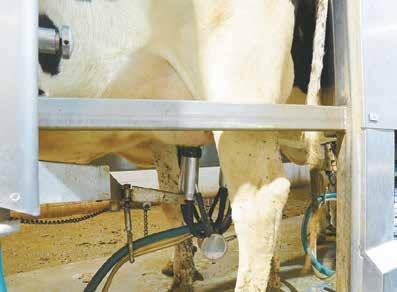
A cow is milked in the double-8 herringbone parlor Feb. 22 at Wargo Acres near

dry cow therapy. There is some risk to that, but we use teat sealant on those cows. We are committed to training and retraining milkers, and it is creating good results. We have dropped our antibiotic use over 70% in dry cows. We only treat cows that have had a SCC over 200,000 on any test. Now, only 35% of the cows get antibiotic dry cow treatment. When SCC stays low, there are less cows on that list to treat. As soon as we get lax on training, we fall behind. Production has improved quite a bit by not having clinical mastitis cases, which are such a crash on the lactation. If a cow is milking under 75 pounds a day, she better be pregnant and not far from dry off. Five years ago, that number would have been 60 pounds a day, and 10 years ago, it would have been in the 40-pound range. Our next number is probably going to be 80 pounds. We get a lot of production out of our 2-year-olds as well as our mature cows. We’ve closed the gap a lot between rst to second lactation. I’m proud of keeping cows around a long time, and cows in their third to fth lactations are our best milkers.
What change has created the biggest improvement in your herd average? Feeding a consistent ration has had the biggest impact on our herd average. Feeding a ration with higher ber digestibility has also helped. We have big frame Holstein cows that are perfect for eating a lot of pounds of forage. For that kind of diet, consistency is key. How cows come out of the transition period and bounce back from the stress of calving has also made a difference in our herd average. We try to leave cows alone, and getting out of their way has been successful. We have no extra pen moves and only handle cows when they are up for a vet check. We are also consistent with vaccination and repro activities. Employees are doing a good job
in the parlor, so we don’t have to see a cow in the sick pen.
What technology do you use to monitor your herd? We have mechanical takeoffs and no electronics in the parlor, but it’s on our radar to consider. If we get bigger, that will become more important. We had monitoring collars for seven years but stopped using them. We use feed software for ration mixing, and it works really well. Our feeder likes seeing 98%-99% accuracy, and we can zone in and see how he is doing. This software also helps us track feed inventory. We don’t have a scale here, but we bring in a lot of feed. This way, we can monitor what got into the farm and monitor shrink. It has helped with feed consistency.
What is your breeding program, and what role does genetics play in your production level? We breed our herd for production and components with a heavy dose of type. I want the full package: a pretty, healthy, long-lasting cow that can milk. We look for bulls that are at least 1,000 pounds of milk with a good udder composite. Hundreds of bulls t those parameters, but then we eliminate bulls based on SCC, daughter pregnancy rate and productive life. That leaves us with 20-40 bulls to pick from. We then have a third tier of traits we look at, including health traits, a bull’s conception rate and A2A2 preference. Longevity is also a big deal to us. Genetics plays a huge role in production; however, Holstein genetics are light years ahead of management. I enjoy chasing cuttingedge genetics, but the idea of getting milk that way seems foolish as it takes so long from conception to the milking string. From a management standpoint, we do a better job than we used to of unlocking the genetic potential of each animal.
List three management strategies that have helped you attain your production and component level. The rst is attention to detail with cows. I am quick at knowing if something is not quite right. It has taken time and effort to get others on the same page as me. Secondly, we follow through with protocols. We train and re-train so that everyone is working toward the same goals and knows what we’re trying to do on a day-to-day basis. Finally, we place a priority on calf health. This is a focus for us, and we have spent a lot of effort and time on that area in the last few years to raise a better calf. We’re turning pneumonia cases into what we did with mastitis. It has gotten better, but we need to keep working at it. We’re seeing the results in that our 2-year-old pens are now lled with these calves that have grown up, and they are doing well.
Tell us about your farm and your plans for the dairy in the next year. I am the third generation on this farm, which my grandparents bought in 1946. Wargo Acres was incorporated in 1975. We farm 500 acres, which is mostly alfalfa and corn, and a little wheat. There are two cow families that most of our cows descend from, and we sell about 100 head per year. We’ve unlocked our component level. This winter, we had a 4.5% butterfat and almost 3.5% protein. Our focus is more on total pounds of solids per day than pounds of milk. We have been consistently over 7 pounds for quite a few years, and we have even gotten to 8 pounds. We are looking at doing a modest expansion soon with a larger expansion plan in the works to better utilize our workforce and direct load capabilities. We are in the beginning stages of talking about our next barn and even possibly adding on to the parlor.
Dairy Star • Saturday, March 9, 2024 • Page 23
nued from TOP PERFORMERS
20
Con
| Page
PHOTO COURTESY OF ANDREW HETKE PHOTOGRAPHY
This pair of ET sisters pictured in 2021 at Wargo Acres near Lodi, Wisconsin, are classied Excellent and have each produced more than 1 ton of bu erfat in a lacta on and are over 200,000 pounds of life me milk to-date. Both cows represent the kind of ca le Craig Carncross strives to breed.
STACEY SMART/DAIRY STAR
Lodi, Wisconsin. Employee training is a focus on the farm and a contribu ng factor to success in achieving high produc on and components.
from Parlor to Processor…

Advanced Dairy Spring Valley, WI; Mondovi, WI; West Salem, WI; Mora, MN; Pierz, MN; Wadena, MN; St Charles, MN
Central Ag Supply Juneau, WI; Baraboo, WI
J. Gile Dairy Equipment, Inc. Cuba City, WI
Redeker Dairy Equipment Brandon, WI
Stanley Schmitz Inc. Chilton, WI

Tri-County Dairy Supply Janesville, WI
Fuller’s Milker Center Lancaster, WI; Richland Center, WI
Eastern Iowa Dairy Systems Epworth, IA
Sioux Dairy Equipment Rock Valley, IA; Colton, SD
United Dairy Systems
West Union, IA; Monticello, IA
Gorter’s Clay & Dairy Equipment Pipestone, MN
Leedstone
Melrose, MN; Glencoe, MN; Plainview, MN; Menomonie, WI
Monroe Westfalia Surge Monroe, WI
Lely Center Monroe Monroe, WI
Total Dairy Service Kewaunee, WI
Midwest Livestock Systems
Zumbrota, MN; Renner, SD; Menomonie, WI; Kaukauna, WI; Weston, WI
Page 24 • Dairy Star • Saturday, March 9, 2024 1-800-MUELLER | PAULMUELLER.COM
Penning a farm family story
Geiger writes two historical non-ction books
By Stacey Smart stacey.s@dairystar.com
REEDSVILLE, Wis. — Corey Geiger grew up hearing stories about his family and ancestors on the dairy farm he called home — a farm with family ties dating to 1867.
Geiger listened attentively when his elders spoke, storing the details in his memory, not realizing then that this information of his family’s past would one day ll the pages of two books.
“We were a farm family that had victories and struggles and moments you might want to redo,” Geiger said. “These were tough days of life, and there are a lot of themes I like to feed people in my books.”
Geiger, an international agricultural journalist, spent 28 years on the editorial team at Hoard’s Dairyman magazine, including 13 years as lead editor. Currently, he works at CoBank where he serves as the lead dairy economist.
Geiger’s rst book, “On a Wisconsin Family Farm: Historic Tales of Character, Community and Culture,” was released in 2021 and is a National Indie Book Awards winner.
His second book, “The Wisconsin Farm They Built: Tales of Family and Fortitude,” came out last year and contains a foreword written by Jerry Apps, a Wisconsin author.
“They’re a good read,” Geiger said. “These people would be good characters in a ctional book, except this is a non-ction book, and they’re real. Their stories help you dig back and understand history.”
Geiger transports his readers back in time through storytelling containing vivid details of the past. The books feature a series of short stories in which Geiger captures the history of his family’s farm. The stories are complemented by numerous historic photographs saved by his grandmother.
“Busy, hardworking farm folk or retired people were
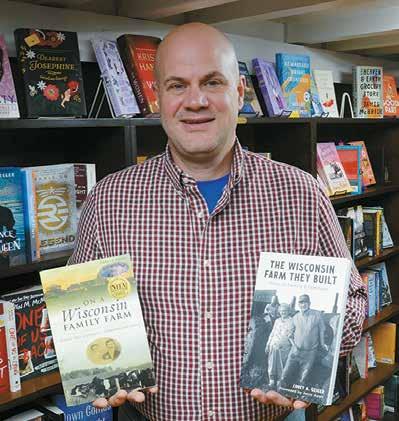
Author Corey Geiger holds a copy of each of his books Feb. 7 at Literatus & Co. bookstore in Watertown, Wisconsin. Geiger’s historical non-c on books, “On a Wisconsin Family Farm: Historic Tales of Character, Community and Culture,” and “The Wisconsin Farm They Built: Tales of Family and For tude,” were wri en to capture the history of his family’s dairy farm.
the audience I had in mind when writing, and this is why I did it in short sections,” Geiger said. “You can pick it up and read in short spurts,
put it back down and pick it up again 10 days later. There are people who told me they haven’t read a book in 10 years, but they read mine.”

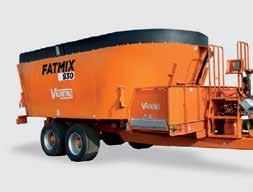




Geiger’s books can be found in 215 stores throughout Wisconsin and the Upper Midwest. In addition, the books are sold on Amazon and on Geiger’s website. Geiger’s rst book has been sold to all 50 states.
“My books are doing well at ‘mom and pop’ bookstores,” Geiger said. “Many authors enjoy the writing part, but I equally enjoy getting out and talking about my book and interacting with readers. When my rst book was published, I drove all over the state and introduced myself.”
The farm in Reedsville where Geiger and his sister, Angie, grew up is the setting of both books. Geiger and his family milked 65 cows in a tiestall barn and farmed 375 acres.
“We had a nice herd of registered Holsteins,” Geiger said. “Our farm was our life. We didn’t go on vacations when I was a child. As an adult, I worked up there almost every weekend, even when I was working at Hoard’s. I took my vacations there too.”


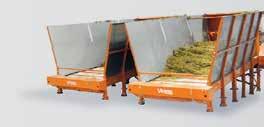



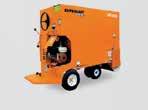






Dairy Star • Saturday, March 9, 2024 • Page 25 Anibas Silo & Equipment Inc. Arkansaw, WI KBS Plainview, MN Chippewa Farm Service LLC Chippewa, WI Field’s Mount Horeb, WI Ruf’s Farm Service Inc. Darlington, WI Fritsch Equipment Corp. De Pere, WI Hoover Silo Repair, LLC Withee, WI Brubacker Ag Equipment Curtiss, WI • Edgar, WI Boscobel, WI K&R Equipment Fountain, MN
STACEY SMART/DAIRY STAR
Turn to GEIGER | Page 26
Geiger’s parents, Randy and Rosalie, bought the farm in 1981.
“My grandma’s heart was at the farm,” Geiger said. “She and my grandpa visited often, and there would always be a story. I was very close to my grandparents.”
Geiger’s six-generation family farm turned 150 years old in 2017. Geiger wanted to have a party to celebrate but could not convince his parents. Instead, he decided to have a party in the local paper, The Brillion News, by writing a series of stories known as the Homesteaders’ Hope.
“I told the newspaper I would like to write about 20 stories, but it turned into 99 stories,” Geiger said. “Using our farm as characters, I also talked about local history.”
The series was a success, as the paper picked up subscribers from 37 states who had heard about Geiger’s column.
“I began receiving emails from readers, and I thought maybe this should become a book,” Geiger said. “Many of the stories in these books were told through the eyes of women because the farm went through the women in my family. They were meticulous notetakers.”
John and Anna Burich, Geiger’s great-grandparents, are the main characters in his rst book. Anna, who was born in 1877, became owner of her family’s homestead in 1905. She married John Burich in 1906. Geiger’s grandparents, Elmer and Julia Pritzl, are the stars of the second book. The Pritzls purchased the farm in 1939.
The books’ beginnings contrast — one enveloped in happiness, the other in sadness.

The rst book opens with a marriage proposal of Geiger to Krista Knigge, which took place on his family’s farm in 2006. The second book opens with a tragic story describing the death of Geiger’s great-grandmother, Anna Pritzl, who was killed by a train in 1932 while on her daily outing to pick up milk.
Elmer Pritzl was only 16 when his mother died. Forced to become an adult before his time, he got a job at the foundry and was promoted to foreman by 18. Five years later, he fell in love with a farmer’s daughter, Geiger’s grandmother. Elmer had no farm background, but his mother-inlaw entrusted him and his wife with the farm.
Geiger tells not only of his fam-
ily’s history but also weaves in historical happenings of the times. From lime to cheese, the rst book describes how these two industries took off in Wisconsin. In the second book, Geiger details the rise and fall of the Allis Chalmers company in West Allis. The books also describe Geiger’s Bohemian heritage with ancestors who came from the Czech Republic.
Geiger was in the middle of writing his rst book when his father passed away in 2019. Work on the book came to a screeching halt. Geiger negotiated a new deadline with his publisher and completed the manuscript one year later.
The cows were sold in the spring before his father’s passing. Geiger continues to crop half of the land and
rent the other half and works with neighbors doing custom work. His mother lives in the original farmhouse — the same house built in 1916 that is mentioned many times in the books.
Geiger is not done writing and has ideas for two more books.
Geiger hopes his journey encourages others to record their family’s past, sharing the history and stories that make their farm unique.
“One reader told me my books are a family conversation starter,” Geiger said. “That is the best compliment I ever received. It gets children and grandchildren talking to their parents and grandparents and inspires other people to capture their farm history.”






Page 26 • Dairy Star • Saturday, March 9, 2024 United Dairy Systems 563-422-5355 • West Union, IA 319-465-5931 • Monticello , IA Looking to upgrade your bulk tank or cooling system? Call and ask about the NEW Digital E-Star HiPerForm with maximum energy & cooling e ciencies TOP PRICES PAID & CONTRACTING AVAILABLE Your Market For: Holstein Steers • Fed Dairy Cows • Lean Dairy Cows Your local area buyer for MN, IA and WI. Long Prairie Buying Station Bruce Belter • 507-429-0359 Holstein Steers • Lean Cows • Bulls • Fed Cows Tyrel Lembke • 877-300-9298 Long Prairie, MN Lean Cows • Bulls Dean Derricks • 920-655-4730 Green Bay, WI Holstein Steers • Fed Cows • Lean Cows Chad McQuade • 605-668-4275 Yankton, SD Lean Cows • Bulls Mike Baczwaski • 800-445-0042 Gibbon, NE Fed Cows • Lean Cows • Bulls Cody Ritter • 320-293-5212 • 320-732-8358 Long Prairie, MN Green Bay Dressed Beef
Con nued from GEIGER | Page 25
PHOTO SUBMITTED
This aerial view of Corey Geiger’s family farm near Reedsville, Wisconsin, was taken in 2017. Geiger and his family milked 65 cows on their farm, which is at the center of two books wri en by Geiger.
Happy, healthy cows are fertile cows
Reducing stress, mitigating response increases reproduction efciencies
By Danielle Nauman danielle.n@dairystar.com
EDGAR, Wis. — Stress affects dairy cattle in many ways. Minimizing the stressors that cause impact is important.
University of Wisconsin-Extension Marathon County educator Heather Schlesser discussed how stressors affect reproductive health and efciency during the UW-Extension’s Repro Roadshow Feb. 21 in Edgar.
“Stress is a biological response, and strain is the animal’s individual response to that stress,” Schlesser said. “Even though the stress is equally applied to the animals, the strain they exhibit is individual to that animal.”
Schlesser said that while stress cannot be eliminated from the lives of dairy cows, reduction of the stress cows are exposed to should be a priority, along with managing the strain each animal portrays.
“Selecting animals that are more resistant to certain stressors that are in our environments is one way to help manage that,” Schlesser said. “Some animals are more resistant to or tolerant of heat stress. Selecting those animals into our herds will help minimize the effects heat stress plays on our herd.”
Because cattle are a prey species, Schlesser said they experience both metabolic and behavioral changes in response to stressors. In turn, that affects overall health and efciency, including reproductive efciencies.
“Our goal is to minimize that stress, creating an environment that optimizes the ovarian and uterine function of our cows,” Schlesser said. “We can measure our success by ensuring each cow resumes cyclicity postpartum, has production and ovulation of a fertile ovum, and that her uterus is able to accept an embryo and sustain that pregnancy. If she can do those three things, we know we are successful in our goal.”
Schlesser said stressors affecting dairy cattle could be categorized as environmental, disease, production, nutrition and psychological.
Heat stress falls in the category of an environmental stressor that is applied equally to all animals, Schlesser said. Each animal’s response — elevated body temperature — is dependent on the animal and its genetic makeup.
“Heat stress impacts overall fertility, ovarian function, and ovum and embryonic development,” Schlesser said. “We need to keep in mind that heat stress doesn’t just affect the animal but future offspring as well. There is an epigenetic effect of heat stress.”
According to Schlesser, the greatest effects of heat stress can be seen in cows at the onset of estrus through the early postbreeding period. This impacts the developing ovum, which is what affects fertility.
Incidents of uterine disease, mastitis or other infections can negatively impact reproduction for several reasons, Schlesser said.
“Disease can result in damage to developing embryos and cause early CL regression, which creates a prolonged follicular phase,” Schlesser said. “That means the cow will be open longer than we want her to be.”
Increased body temperature due to a fever negatively affects the ovaries and also impacts the follicular development and oocytes produced.
Cows suffering from disease typically have decreased feed intakes, which creates a negative energy balance and leads to issues
with reproduction. Immune system responses can initiate the release of endotoxins and cytokines, affecting the production of hormones required for cyclicity.
“Uterine diseases like metritis, endometritis and purulent discharge all affect reproduction,” Schlesser said. “We need to make sure we are paying attention to calving pen management and hygiene as these can play into the incidence of uterine disease.”
Herds that experience issues with uterine health can expect to have decreased conception with increased incidence of early embryonic loss and cows that are less likely to maintain a pregnancy, Schlesser said.
“Uterine disease affects follicular development,” Schlesser said. “Fertility may be compromised even after the uterine disease has been resolved.”
While uterine disease comes to mind when thinking of reproductive struggles, Schlesser said mastitis may not.
“Studies have shown that incidence of clinical mastitis in the days immediately before A.I., and up to 32 days after, negatively impact reproduction through embryonic loss,” Schlesser said. “It’s not just clinical cases either. Cows with high (somatic cell counts) may have poorer conception rates and greater early embryonic loss too.”
Similarly, Schlesser said lameness affects reproductive efciency as well.
“If a cow is lame, she will have altered feeding behavior and estrus expression,” Schlesser said. “We will not see that increased locomotion or mounting behavior. Not eating well can result in delayed cyclicity, greater incidence of ovarian cysts and overall poorer fertility.”
The correlation between nutrition and efcient reproduction are closely tied, Schlesser said. Dairy farmers should be cognizant that their cows are getting enough feed to refrain from entering a negative energy balance. Cows with a negative energy balance experience errors in heat detection, delayed ovulation, retained placenta and endometritis.
“Acidosis can cause a chain of metabolic and hormonal reactions that will lead to suppression of the hormones GnRH and (luteinizing hormone), which are both needed for proper follicular function,” Schlesser said. “Acidosis decreases the synthesis of Prostaglandin-F2alpha, needed to progress the estrus cycle.”
Body condition scores are useful for monitoring cows to maintain reproductive efciency, Schlesser said.
“Minimizing the loss of body condition in the transition period helps decrease the amount of time before a cow’s rst estrus and ovulation post-calving,” Schlesser said.
Cows that lose less than a half-point of body condition score show their rst heat in an average of 30 days, while a half to full point is an average of 36 days. Cows losing more than a full point may take up to 50 days.
Allowing cows to be cows minimizes the psychological stressors cows experience, Schlesser said.
“Give them enough time for eating, resting and socializing,” Schlesser said. “Minimize the time spent doing things she doesn’t like: moving pens and waiting to be milked.”
Optimizing rst-service conception rates reduces the amount of handling cows experience.
“If she settles on the rst service, we can leave her alone,” Schlesser said.
Overall, Schlesser said there are a number of things that can be done to boost reproduction numbers.
“Properly following breeding protocols, promoting low-stress animal handling, being vigilant of disease and proper nutrition increase conception and pregnancy rates,” Schlesser said. “We can’t eliminate all of the stressors affecting cows, but we can reduce the incidence and minimize the effects.”








Dairy Star • Saturday, March 9, 2024 • Page 27 538-60 AGRI TELESCOPIC HANDLER A&C Farm Service, Inc. Jct. Hwys. 55 & 23 • Paynesville • 320-243-3736 www.acfarmservice.com The JCB 538-60 Agri is a highly ef cient EcoMAX-powered telescopic handler. It sits on a chassis that’s designed for load-bearing and stability. The side-mounted JCB engine combines with JCB axles and transmission to ensure a reliable drivetrain performance from well-proven components. OUR BEST CAB OUR BEST FUEL EFFICIENCY OUR BEST SAFETY FEATURES D R I V E W A Y G R A D E R COMMITMENT • QUALITY • DURABILITY • RESULTS Visit www.silverstarmetals.net for details and options on attachments Dealer Inquiries Welcome • No More Potholes • Heavy Duty • Adjustable Blades • Optional Tooth Bar • 6 foot or 7 foot • Adjustable Finishing Blade MAKE YOUR DRIVEWAY NEW AGAIN SILVER STAR METALS LLC N15435 Frenchtown Ave., Withee, WI 715-229-4879 • • • • • • THESE QUALITY ATTACHMENTS ALSO AVAILABLE: • Concrete Chuter • Brush Cutter • Roto-Tiller • Pallet Fork • Wood Splitter • Brush Grapple • Dirt Buckets • Rock Buckets • Bale Bedders • Mini Attachments • Trailer Mover

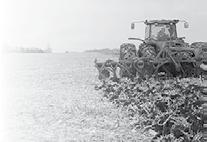








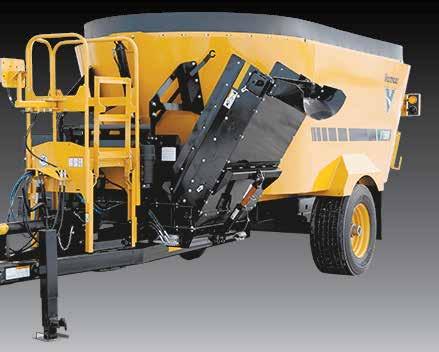




Page 28 • Dairy Star • Saturday, March 9, 2024 FARMERS IMPLEMENT AND IRRIGATION Brookings, SD • www.farmersii.com FABER’S FARM EQUIPMENT Inwood, IA, Watertown, SD www.fabersfarm.com GORTER’S CLAY & DAIRY EQUIPMENT Pipestone, MN • www.gortersclayanddairy.com BREEDEN SALES Maquoketa, IA • www.breedensales.com BRUNKAN EQUIPMENT Worthington, IA • www.brunkans.com MARK’S TRACTOR & IMPLEMENT Osage & Dumont, IA www.markstractor.com METTLER IMPLEMENT Menno, SD • www.mettlerimplement.com ANIBAS SILO & EQUIPMENT, INC. Arkansaw, WI • www.anibassilo.com ALDRICH TRACTOR Verndale, MN • www.aldrichtractor.net WOLLER EQUIPMENT Swanville, MN • www.wollerequipment.com A&C FARM SERVICE Paynesville, MN • www.acfarmservice.com HAMMELL EQUIPMENT Chatfield, Eitzen, Harmony & Rushford, MN www.hammellequipment.com CONTACT YOUR LOCAL DEALER TODAY! Vermeer, the Vermeer logo and Equipped to Do More are trademarks of Vermeer Manufacturing Company in the U.S. and/or other countries. © 2024 Vermeer Corporation. All Rights Reserved. Now through April 30, 2024, qualified buyers can receive low-rate financing or cash back on select new Vermeer equipment through Vermeer Credit Corporation (U.S.) or De Lage Landen Financial Services, Canada Inc. (Canada). See your local Vermeer dealer or additional details on this and other special offers from Vermeer. Maximum finance amount up to 100%, depending on payment plan and credit approval. Minimum transaction $2,500. Financing offer valid in U.S. and Canada only. U.S. rate listed, Canada may be different. All rates, terms and conditions are subject to change and credit approval. 0% FINANCING FOR UP TO 36 MONTHS ON VERTICAL MIXERS Take Advantage Today Now through April 30, 2024, quali ed buyers can receive as low as 0% nancing for up to 36 months or cash back on the purchase of Vermeer vertical mixers. FEED MORE DRIVE-THRU ELECTRIC GATE Call for a FREE Catalog Watertown, SD 1-800-658-3998 www.koehnmarketing.com Adjustable 13’ - 19’ Standard Adjustable 18’ - 24’ also available SPRING LOADED GATE www.dhfieldservices.com D&HFIELD SERVICES, INC . Darrin Herickhoff 320-760-0848 • Liquid Manure Handling • Solid Manure Handling • Trucking • Pushing & Packing
IN DAIRY women
Tell us about your family and farm. With my ancé, Dan Quinn, and two children, Jeffery and Dylan, we operate a 130-acre crop farm where we grow corn, soybeans, wheat and hay. We custom combine another 500 acres. I work on a 400-cow dairy where I work with fresh cows in the maternity area and feed calves.
What is a typical day like for you on the dairy? On a typical day, I start out by doing the laundry and prepare for the day. I get the milkers ready. I check for calves and check everything out. Then, I take care of milking and feeding calves.
What decision have you made in the last year that has beneted your farm? The best decision I have made is to invest in my education to continue improving my skills and what I can offer employers. I’m currently taking a calving management class at MidState Technical College, and I attend workshops in the area as frequently as I can.
Tell us about your most memorable experience working on the farm. I have enjoyed learning about caring for dairy cattle and also watching my kids have the opportunity to grow up exposed to the industry and farm life.
What have you enjoyed most about dairy farming or your tie to the dairy industry? Dairy farming is an active occupation, and I am an active person. I enjoy that every day brings something new. There is a special feeling of accomplishment when you complete a job well.
What is your biggest accomplishment in your dairy career? I didn’t grow up on a dairy farm. I have family involved in farming, but I grew up three hours away from their farm. I rst started working on a dairy farm
Emily Fincher
Marshfield, Wisconsin Wood County
because, as a single mother, I needed employment. I knew only the very basics. I have learned nearly everything on the job, and I have learned a lot and become very procient at caring for animals.
What are things you do to promote your farm or the dairy industry?
I am active on social media, writing posts about how and why we do things on the farm. I use my non-farm background to look at things from that point of view in addition to the dairy farm point of view. I have had conversations with people who have told me I have impacted the way they view the dairy industry. That is an amazing feeling.
What advice would you give another woman in the dairy industry? As someone who entered the industry from the outside, my advice would be to just walk into it, get there, ask questions and be ready to learn. Don’t be afraid to make mistakes. Just make sure you learn from those mistakes.
What is a challenge in the dairy industry you have faced, and how did you overcome it? The biggest challenge I have faced in the dairy industry is my non-farm background. I was willing to take the challenge and accept a job where I knew the bare basics, but I openly and actively sought to learn new skills. When I started working on a dairy farm, I had never even seen a calf being born. Now, I can look at a cow or calf and know if something is wrong with her and follow the steps to determine what the problem might be.
When you get a spare moment, what do you do? I enjoy spending time with my kids and playing games with them. We enjoy playing catch or Frisbee and visiting different places like county parks and museums.









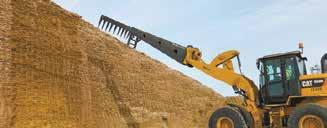
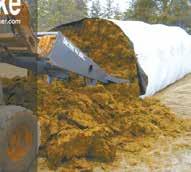
Dairy Star • Saturday, March 9, 2024 • Page 29 Lake Lillian, MN 1-800-THE-SILO CONTACT YOUR LOCAL DEALER TODAY! IOWA Post Equipment 712-476-4500 WISCONSIN Dorner Equipment Green Bay • 920-655-3215 St. Joseph Equipment Lacrosse • 608-769-7796 Swiderski Equipment Wausau • 715-551-7893 Ritchie Equipment Cobb • 608-623-2331 easyrakefacer.com SILAGE FACER www.easyrakefacer.com SILAGE FACER www.easyrakefacer.com PATENT #7,588,203, #8,011,608, #8,336,795 NO MOVING PARTS MAINTAIN CUT LENGTH STAY IN THE HEATED CAB CALL FOR YOUR ALL DEMO TODAY
DANIELLE NAUMAN/DAIRY STAR
Emily Fincher enjoys a sunny day on her family’s crop farm March 3 near Chili, Wisconsin. Fincher works with fresh cows and calves on a nearby 400-cow dairy farm.
www.extension.umn.edu/dairy




Tune-up for farm vaccine protocols
I attended the Carver County Dairy and Beef Expo looking to reunite with colleagues, learn about highlighted topics and network with producers.
While sitting through the packed Beef Quality Assurance training, I thought, “I bet there are things dairy producers could use a refresher on. What are forgotten behaviors that could use a tune-up?”

Like anyone with a daily routine, tasks around the dairy become rote and repetitive. These comfortably slip into the “we’ve always done it this way” category. This article will remind herd managers about important practices regarding vaccine handling.
By Dana Adams University of Minnesota
A safe place to start is to read labels. It is not ashy or new, but it remains true. The vaccine labels change and always contain directions for use, storage guidelines, administration and dosage. This guidance can change, and the label is the place to ensure you get what you are paying for. The label outlines the drug’s temperature restrictions, mixing directions and expiration dates. It is worth taking 3-5 minutes to know what all that money you spent requires you to do for that drug to be benecial for your animals.
One of my favorite parts of this training is practical and applicable suggestions for producers. All of us have been in the situation, debating, “Can I put the vaccine on the window sill by the chute? It’s just for a minute.” The best practice is not to expose vaccines to conditions outside the labeled temperature ranges. It may be 31 degrees outside the barn, but on the dashboard of the farm truck, where your vaccine was placed, it was 85 degrees. I also know that many producers would not pause when placing a vaccine in a band of sunlight next to the calf pen. Though it is easy, this is not advisable. Well, what is a herdsman to do? A convenient plastic foam cooler can be used to protect your vaccines from light, freezing and thawing. By lining it with ice packs and using a towel or cardboard as a divider, products can be protected from slushing or freezing.
Cow-side is far from the only place these vaccine temperature uctuations can occur. Everyone is familiar with the farm fridge. It has three rusty corners and is frequently 25 years old, leaving the house because it could not keep things cold. If the fridge cannot

USED TRACTORS
CIH 9330, FWD, PTO, 3 pt., 2,800 hrs. .$125,000
CIH 8940, FWA, 1,800 hrs. ..................Coming In
CIH 8920, 2WD, 3,500 hrs ......................$84,000
CIH 8920, 2WD, 6,700 hrs. .....................$65,000
CIH 8920, 2WD, 7,900 hrs. .....................$59,000
CIH 8920, 2WD, 4,100 hrs ......................$72,000
CIH 8920, FWA, 2,600 hrs ....................$110,000
CIH 7240, FWA, 5,737 hrs., sharp ..........$85,000
CIH MX240, 4,700 hrs .............................$85,000
CIH MX220, FWA, 3,600 hrs. ...............Coming In
CIH MX120, 2WD, 3,800 hrs. ..................$72,000
CIH C90, 4,000 hrs. ..............................Coming In
IH 5488, 6,600 hrs. ..................................$38,000
IH 5288, 4,700 hrs. ..................................$40,000
IH 5088, 7,100 hrs. ..................................$26,000
IH 1466 restored, new 20.4x38
Firestones ..............................................$38,000
IH 1486, 2,500 hrs. ..................................$35,000
IH 1456, cab ............................................$22,000
IH 1086, 9,700 hrs. w/ldr. ........................$23,000
IH 1066, no cab .......................................$13,500
IH 1086, 5,000 hrs. ...............................Coming In IH 686 ......................................................$14,000
TILLAGE
CIH Speed Tiller 475, 21’ ........................$90,000
CIH 330 Turbo disc..................................$35,000
CIH Tigermate II, 26’ ...............................$28,000
CIH Tigermate II 26’ w/rolling basket.......$32,000
CIH Tigermate 200 w/basket, 34’ ............$42,500
CIH Tigermate 200, 28’ w/rolling basket..$40,000
CIH Tigermate 200 28’ w/basket .............$37,000
CIH RMX 340 28’ w/mulcher ...................$44,000
Mandako
Land Rollers
All Sizes
maintain a consistent temperature, is it worth the risk of damaging expensive vaccines or the downstream effect on your milking string?
Producers should be encouraged to place a thermometer in the refrigerator to gauge performance and consider equipment that is more reliable. It is also important to note that some animal health products cannot be frozen and thawed safely — read the vaccine’s label to know the danger zone. When they go through that process, they release endotoxins, which can be harmful and cause serious complications, including death. It is rather easy to treat vaccines like they are indestructible but that is not the case.
Many farmers are familiar with how to prepare vaccines. Keep in mind that shaking vigorously can damage the product, releasing endotoxins. Aggressive mixing can be swapped out for rolling it between your hands, swishing it around in the vial, both clockwise and counterclockwise, and turning it upside-down several times. If the vaccine or animal health product needs to be mixed, mix only what can be used in an hour or less. Some prod-
Dana Adams adam1744@umn.edu 320-204-2968
Joe Armstrong armst225@umn.edu 612.624.3610
Luciano Caixeta lcaixeta@umn.edu 612-625-3130
Gerard Cramer gcramer@umn.edu 612-625-8184
Marcia Endres miendres@umn.edu 612-624-5391
Les Hansen hanse009@umn.edu 612-624-2277
Brad Heins hein0106@umn.edu 320-589-1711
Nathan Hulinsky huli0013@umn.edu 320-203-6104
Karen Johnson ande9495@umn.edu 320-484-4334
Emily Krekelberg krek0033@umn.edu 507-280-2863
ucts are viable for a limited time once mixed. Mixing it as you use it helps ensure its effectiveness and reduces product waste when unforeseen delays happen, and as every farmer knows, that is not the only time delays happen.
Lastly, make sure to clearly label syringes and have separate syringes assigned to specic products. In the moment, it is all too easy to mix up syringes, and labeling, simply put, helps. While on the subject of reusable equipment, sanitize using heat, never with detergents where residues can damage or destroy medication products. Needles are another often-overlooked issue. The best practice is to change needles every 10-15 animals and every time the needle is relled from the bottle. Making these practices standard prevents needles from becoming contaminated, dull, developing a bur or bending. Needles are cheap, compared to the cost of vaccines and animal health.
Vaccines are a tool in every producer’s toolbox. Each of these can yield the desired outcome with an understanding of when, where and how to use the tool best.
Claire LaCanne lacanne@umn.edu 507-332-6109
Brenda Miller nels4220@umn.edu 320-732-4435
Isaac Salfer ijsalfer@umn.edu 320-296-1357
Jim Salfer salfe001@umn.edu 320-203-6093
Mike Schutz mschutz@umn.edu 612-624-1205
Melissa Wilson mlw@umn.edu 612-625-4276
Isaac Haagen hagge041@umn.edu 612-624-7455
Michael Boland boland@umn.edu 612-625-3013
Sabrina Florentino slpore@umn.edu 507-441-1765
J&M 385, red .............................................$5,000
Killbros 387 ................................................$9,000
M&W 260 gravity box ................................$1,500
MISCELLANEOUS
New Red Devil 8’ Snowblowers.............On Hand
Brillion XL32 32’ packer ...........................$36,000
H&S 3137 370 bu. manure spdr ..............$23,000 IH 1250 w/scale .........................................$3,000
Various Sizes of Rock Wagons On Hand



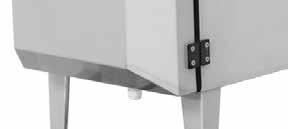

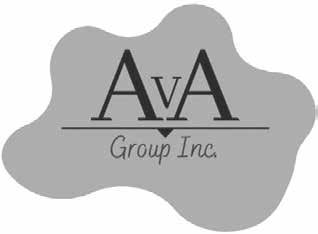
Page 30 • Dairy Star • Saturday, March 9, 2024
GREENWALD FARM CENTER Greenwald, MN • 320-987-3177 WWW.GREENWALDFARMCENTER.COM Twine, Wrap & Net Wrap IN STOCK! GREAT SELECTION OF USED GRAVITY BOXES ON HAND! CIH 25’ 3900 disc ....................................$15,000 CIH 3800 16’ disc ......................................$9,500 CIH 527B .................................................$17,500 CIH 530C Ripper, nice.............................$38,000 JD 2700 5-shank ripper ...........................$17,000 DMI Tigermare 26’ field cultivator ............$16,000 DMI 900 ripper ................................................Call DMI 530B lead shank ..............................$16,500 Glencoe 7400 8-shank disc chisel .............$9,000 HAYING & FORAGE EQUIP. Sitrex QR12, QR10, QRS rakes ....................New Many sizes of rakes available All Sizes of Sitrex Rakes ........................On Hand GRAVITY BOXES & GRAIN CARTS Many Sizes of Gravity Boxes...................on Hand Demco 450 ..............................................$12,500 Demco 550 ..............................................$14,500 Brent 657 gravity box, green & black.......$23,000 Brent 644, green ......................................$17,500 Brent 644, tarp & fenders ........................$21,000 J&M 540 box, red ....................................$13,500 J&M Green 385 gravity boxes ...................$5,000
CIH
RMX 340 25’ disc w/mulcher ............$41,000
GETTING CALVES OFF TO A profitable start WITH Calf Health blog www.avagroupinc.us Contact: avagroupinc.us@gmail.com We’re great with calves, because calves are all we do Getting Calves Through Times of Variable Weather >
Top 5 most viewed robotic milking episodes
For three years, starting in January 2021 and ending in December 2023, we hosted a dairy producer using robotic milking systems once a month for an informal virtual discussion.
We all learned a lot from these producers, and we are grateful they were willing to join us and share their experiences. We recorded the episodes and uploaded to our YouTube channel.
Our top 5 most-watched episodes were: Nos. 8, 17, 1, 19 and 5, in that order.
What are some of the key messages and management practices they shared?
 By Marcia Endres University of Minnesota
By Marcia Endres University of Minnesota
Episode 8: This farm in North Dakota has a robotic 60-stall GEA DairyProQ robotic milking carousel. Jon indicated that the reason they chose a rotary rather than box systems was because they did not want to reinvent the wheel and wanted to keep management the same. They have one person in the parlor and one person bringing cows to the holding pen. Jon told us they have 11 additional modules — the robotic milking units — that they can swap in 15 minutes with one that needs to be repaired as needed. He indicated that good feet and leg health are key to make sure cows can use the rotary efciently. About 10% of their herd is manually attached, primarily cows in late lactation, but this is not very much labor in their experience. In the type of system they have, the same teat cup does the pre-

dipping, milking and post-dipping, so all the worker has to do is attach each quarter. Their dairy also has sort gates that help with using their automated foot bath system and breeding cows, etc. The barn has a robotic feed pusher and automatic scrapers. They have waterbeds with green separated manure solids on top. Cows also have collars that monitor rumination, activity and feeding time, which is helpful in identifying cows that need attention.
Episode 17: This is a smaller herd with two Lely robots in Minnesota. Sam, a young Ph.D. nutritionist, along with his wife and his wife’s parents, decided to build this new 120-cow dairy. They have a naturally ventilated freestall barn with fans and sprinklers, deep-bedded sand stalls, automated manure scrapers and a robotic feed pusher. They bed every 5-10 days and use a skid loader rake to level stalls every ve days. Those same ve days, they run cows through a long foot bath at the end of the barn. They decided on free-ow cow trafc for simplicity and fetch about 5% of their cows daily. He indicated that having a large, open area in front of the robots helps timid cows get milked and reduces fetching. They do not use custom formulated pellets. Instead, cows are supplemented in the robots with corn gluten pellets and ne-ground, farm-grown corn. Cows average 2.8 milkings and 1.3 refus-
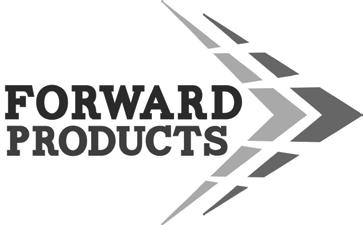
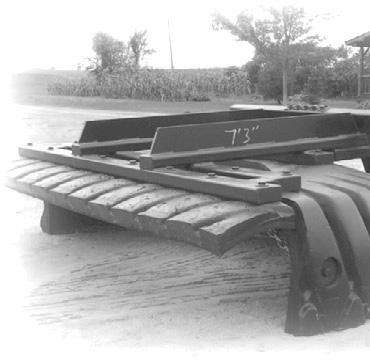
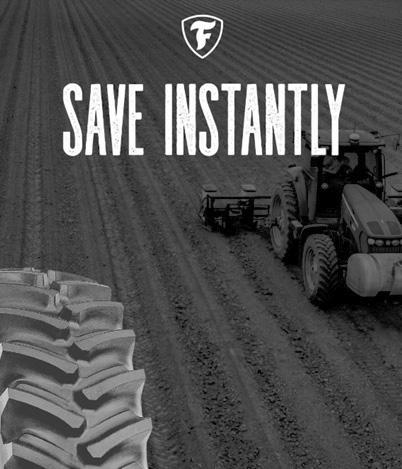
als per day. Milk quality sometimes can be a challenge in robotic systems, but they installed somatic cell count testers which help identify cows that are high, which they conrm with the California mastitis test. They hope to do on-farm culture.
Episode 1: We were pleased that Dave from Minnesota agreed to be our rst guest. They milk their cows with eight Lely robots. They expanded from four to eight robots as it was a labor challenge having the older parlor and robots at the same time. After transitioning all cows to robots, they have only three full-time employees to do everything except heifers from 3 months of age until they come back prior to calving. This dairy pre-trains heifers twice a day by manually bringing them to visit a robot and giving them a small amount of feed. Heifers get used to the sounds and to being in that box, which has helped improve adaptation to the robots after calving. Dave indicated they traded labor for parts, maintenance, repairs and supplies, and they are on call 24/7. Finding and managing people was very difcult. Dave focuses on identifying problem cows daily, sorting them and taking care of them as soon as possible.
Episode 19: A unique aspect of this dairy in Minnesota is the retrot they used for their barn. One pen has two Lely robotic milking systems and the other has ve robotic milking systems. The smaller pen houses the fresh cows and is also used to train heifers. This pen usually has 55 cows
per robot, whereas the large pen has 65 cows per robot. It will be hard to describe all the details here, as they use a unique sorting system with Grazeway gates. Watch the episode for more details on their cow management. The dairy has a manure separation and composting system inside the barn. Brad told us that milk production increased by 15 pounds after they transitioned to robotic milking. This dairy uses robotic manure collectors that not only vacuum the manure but also spray water which makes the oors less slippery. They have a robotic feed pusher they named George.
Episode 5: This dairy in Chile is the largest robotic box milking system in the world with 90 DeLaval robots. When Odriom was our guest, they had 72 robots. They have a barn built in 2014 with eight VMS robots and one robot per pen. They retrotted their freestall barns with either two robots — tandem — or three robots — toll booth — per pen in different phases afterward. One major message he had was that the toll booth conguration is much better for cow ow, and it is what they recommend for retrots. The cow ow in the tworobot barn is quite unique. Again, hard to describe here, so watch the episode. They chose guided-ow cow trafc because of labor management. They use one robot for fresh cows and training heifers for 20 days after calving using a batch milking approach.

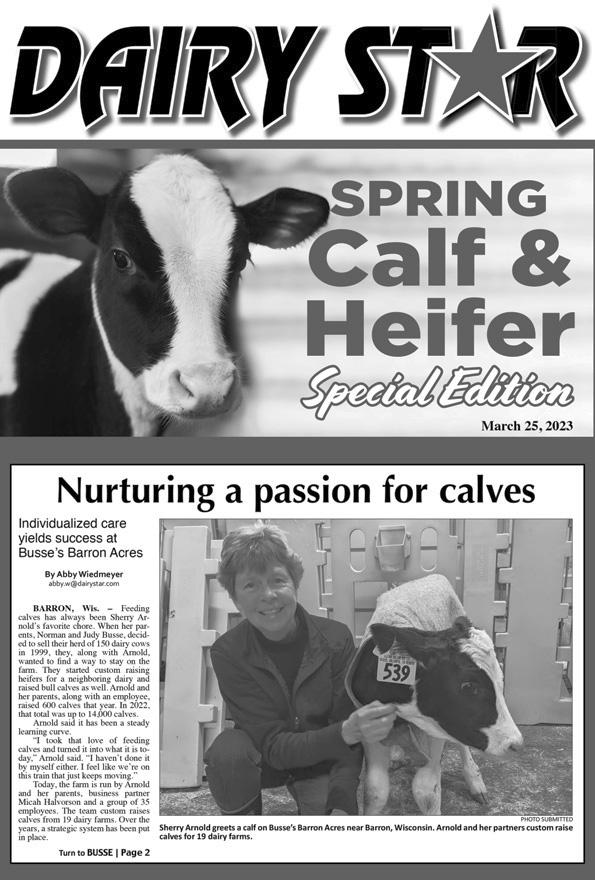



Dairy Star • Saturday, March 9, 2024 • Page 31 Friedrich’s Tire & Oil Sauk Centre, MN (320) 316-3701 Rule Tire & Auto Willmar, MN (320) 403-2783 Contact your local dealer today! WHEN YOU BUY TWO OR MORE FIRESTONE AG TIRES $200 off all eligible non-AD2 radial tires $300 off all eligible AD2 radial tires Get ready for planting season with farm tire deals. Our Firestone Ag radial tires with Advanced Deflection Design (AD2) technology are IF- and VF-designated tires that can carry more load at the same pressure (up to 20% or 40% respectively). Through May 31, 2024, save on eligible AD2 radial and non-AD2 radial tires at your local Firestone Ag Dealer. 608-524-9958 » www.forwardfarmlines.com RUGGED, RELIABLE, and ECONOMICAL
Advertise in the 2024 SPRING CALF & HEIFER EDITION 522 Sinclair Lewis Avenue • Sauk Centre, MN 56378 P: 320-352-6303 | ads@dairystar.com | www.dairystar.com The Calf & Heifer Edition helps producers, nutritionists, and veterinarians make sure that every heifer calf enters the herd yielding at her highest potential. Advertising your products in this section will help them achieve the high-producing, healthy cows the dairy industry strives for. Don’t miss this opportunity to reach more customers! Publishes April 27, 2024 Ad Deadline is April 16
How did you get into farming? We were born into it. Our father passed away when Randy was 15 years old and Robert was 7 years old. We continued going to school and farming and are still at it.
What are the most signicant ways your farm has changed since you started farming? We added a robotic milking system in 2016. That was a signicant change from when our father built the original barn on our home farm in 1956. When we took over, we had about 25 cows, 5 acres of tobacco and 60 acres of crops. We milked in cans. We made progress as time went on by adding on to the barn, installing a pipeline and bulk tank, and then building a parlor in 2000. Transitioning to robots was the biggest change because we more than doubled our cows and moved to a new site.
What was a challenge you faced in your dairy farming career, and how did you overcome it? We suffered a barn re June 12, 2015. It demolished everything. We ended up losing 12 cows. One cow came out of the inferno with burning plywood
DAIRY PROFILE
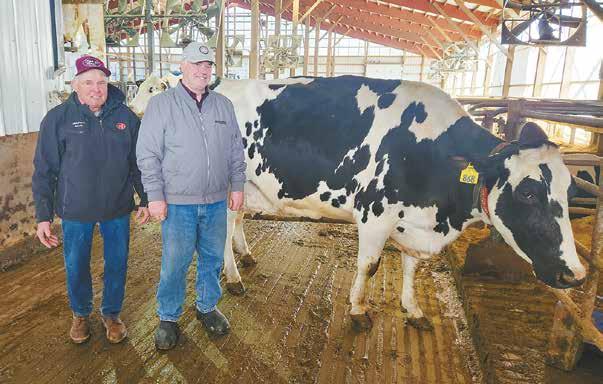
and straw on her back, but she survived and went on to milk for quite a while. Her ear tag number was 911. We moved the cows to two different places after the re. Our neighbors had just built a dry cow facility and allowed us to house our milk cows there


while we built a new facility. We were lucky to have them help us. The re was devastating, but it brought the opportunity to rebuild. That is when we built our robotic facility on a new site about 3.5 miles from our home farm.
What is the best decision you have made on your farm? Making the decision to not stay the same but to keep changing and progressing. That led us to sand bedding, a total mixed ration, silage piles and robots. It has led us to where we are today.
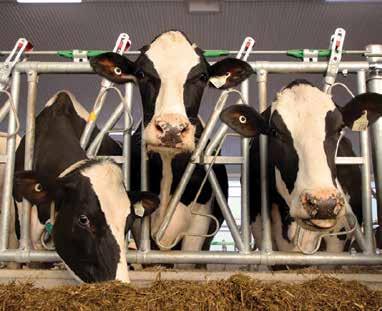

What are three things on the farm that you cannot live without? The TMR because the cows have to eat rst. The activity collars on the cattle. We have started putting them on our heifers, too, and it has been a game changer as far as reproduction. Finally, our registered cows. They have given us recognition that allowed us to make friends and contacts in the industry. We have been fortunate to sell bulls for the A.I. industry, which has served us well.
What are your thoughts and concerns about the dairy industry for the next year? Randy: We need a better export market. That would inevitably lead to a better milk price. Robert: Transitioning to the next generation. We are looking at the greatest transfer of wealth and opportunity with the baby boomers retiring.
What strategies do you use to withstand the volatile milk prices? Capital expenditures are minimized. We try to pay down debt during good times so we have cash or a line of credit available.
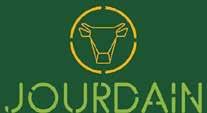




Page 32 • Dairy Star • Saturday, March 9, 2024 Midwest USA Sales: Todd Burkhalter Cell: 608.343.8936 Email: todd.burkhalter@dairylane.ca DLS Office: Komoka, Ontario Toll-Free: 1.800.361.2303 Web: www.dlsbarnsolutions.ca Social: @dairylanesystems Jourdain Gates and Panels Jourdain Headlocks DLS Curtains Jourdain Free Stalls QUALITY that lasts for the LONG RUN Dealer Inquiries Welcome! Turn to DAIRY PROFILE | Page 33
Randy and Robert Nigh of Lirr Dairy | Viroqua, Wisconsin | Vernon County | 185 cows
ABBY WIEDMEYER/DAIRY STAR
Randy (le ) and Robert Nigh stand by the oldest cow in their herd Feb. 29 at their farm near Viroqua, Wisconsin. The cow is a maternal sister to a bull from the brothers’ herd, Dempsey, who was recognized on the Wisconsin Holstein Associa on Wall of Fame.
Con�nued from DAIRY PROFILE | Page 32
How do you maintain family relationships while also working together? After all these years, we kind of know what the other one is thinking, to the point it is almost scary. We have like-minded goals and always think of everything as “we.” People ask how often we have meetings, and it is daily. We talk through things as they come up. A positive attitude and a smile goes a long way.
What do you nd most rewarding about dairy farming? Randy: It is rewarding to watch the little things happen and see how good an individual cow can be just by being productive and reproducing. Robert: I love to watch cows eat, which translates to putting up really good feed. It is fun to walk the cows. We are not pushing them since installing the robots, so we can just walk through and keep an eye on them and visit.
 ABBY WIEDMEYER/DAIRY STAR
ABBY WIEDMEYER/DAIRY STAR
The Nigh family milks 185 cows with three Lely robo�c milking units on their farm near Viroqua, Wisconsin. Brothers Randy and Robert Nigh have been farming together their whole lives, and now Robert’s son, Ryan, is transi�oning into the farm.

Tell us something special about your farm. The Holstein USA Association has a progressive genetics award, and we are one of 16 herds in the U.S. that have received the award every year since its inception (33 years). One bull, Drew Dempsey, made it on the Wisconsin Holstein Association Wall of Fame. Our oldest cow on the farm is a maternal sister to Dempsey, and she is 11 years old.
What are your plans for your dairy in the next year and ve years? Robert’s son, Ryan, is on the farm full time, and his wife, Kelsey, helps when she is not working off the farm. They manage the calves together, and Ryan does a lot of maintenance and daily chores. Our plan within the next year or so is to transition the farm to them. We
also plan to update two of our robots. We have two A4s and one A5. We plan to upgrade to all A5s.
How do you or your family like to spend time when you are not doing chores? We spend time with our kids and grandkids at their activities and events. The grandkids like to come to the farm and spend time with us here.












































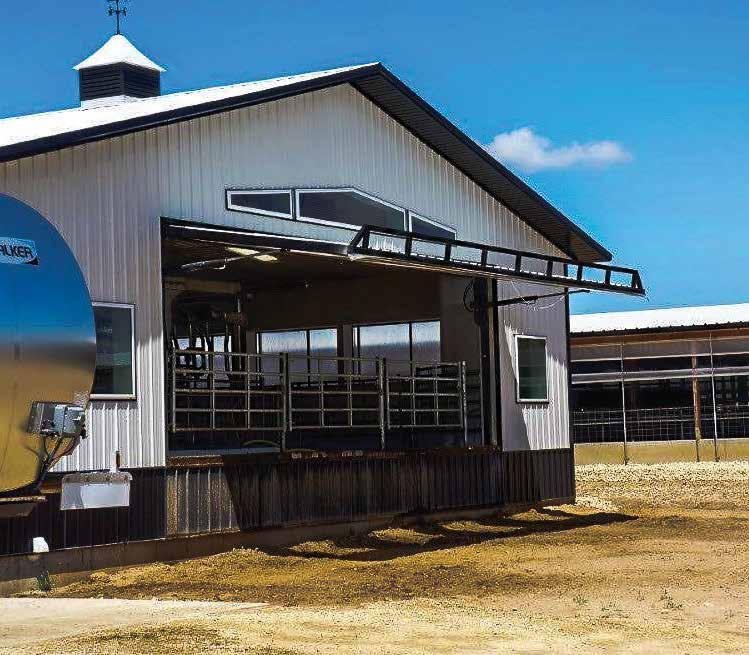
Dairy Star • Saturday, March 9, 2024 • Page 33 Get your lawn equipment ready for Spring! We work on all makes & models: ATVs, side by sides, snowmobiles, snow blowers chainsaws, lawn mowers & lawn care equipment, etc. www.sunriseagrepair.com ELECTRIC MOTOR SALES & SERVICE REPAIR Hwy 25 • Pierz • 468-2168 LITTLE ROCK, MN 320-584-5147 PIERZ, MN 320-468-2168 LASTRUP, MN 320-468-2543 BUCKMAN, MN 320-468-6433 FOLLOW US ON FACEBOOK! MOWERS BA9-1B-BL Jos 218-639-5993 or Ron 320-224-8812 or Kari 320-630-4786 Purina Wind & Rain Mineral Booking Available! ATTACHMENTS B CONTACT Now through March 15! CHICK ORDERS! PLACE YOUR S A L E ! ANNUAL MEETING March 19 | 11 am Pierz Ballroom GRAVELY JSV 6400 NAPA Filter SALE! M O r lter Hydraulic Doors By the most trusted name in the industry 855.368.9595 Best Warranty in the Industry Zero Headroom Loss
ABBY WIEDMEYER/DAIRY STAR
A cow waits her turn for the robot Feb. 29 at Randy and Robert Nigh’s farm near Viroqua, Wisconsin. The family installed a robo�c milking system in 2016 when they built a new facility a�er suffering a barn re at their home farm.




















Seniors!



Strategic Farming webinar series discusses thirsty cover crops
University of Minnesota Extension
Cover crops are thirsty, but they also protect the soil surface and provide other benets. How does this push-pull relationship play out in a drought year?
Dan Smith, nutrient and pest management outreach specialist at the University of Wisconsin, dug into their 2023 cropping systems study for some answers in June.
Corn plants from the full tillage treatment were taller, but the roots and soil were powder dry. Some soil moisture was retained in no till, but it was still very dry.
“What surprised me the most was that there was soil moisture and good soil structure in the top 2 inches of the planting green treatment,” Smith said.
In this treatment, corn was planted into 12-inch cereal rye. Rather than stealing all of the moisture, the rye helped retain more soil moisture instead.




planter adjustments, such as upgrading the double disc openers and closing wheels. Other tools, like hydraulic down pressure, air down pressure, variable air ride and row cleaning wheels may also be helpful.
Because the gauge wheels ride on top of the residue, the planter seeding depth may need adjustment. To make sure it is operating correctly and rows are getting closed, tie up the closing wheels, run the planter for 10-15 feet, then examine the row for proper seed spacing and 2-inch corn seeding depth.
Cereal rye should be planted by mid-September in Minnesota for optimal seeding success and biomass production. Once into October, successful establishment and biomass production declines.
Deciding when to terminate a cover crop is challenging. If the goal is to maximize biomass, competition could compromise both the cash crop and soil moisture in a dry year. Wisconsin studies looked at three rye termination times in both corn and soybeans: two weeks before, at planting and two weeks after planting.
Corn grain and silage yields were reduced when rye was terminated at and after planting. However, when rye was terminated two weeks before planting, yields were equal with those in conventional tillage and no till. As a result, Smith said to terminate rye before planting to avoid competition in a dry year.
Soybeans yielded only slightly less at high levels of biomass. Soybeans seem to be impacted less by cover crops and soil moisture concerns than corn is.
In a similar planting green study in soybean in Minnesota, yields were signicantly reduced with late rye termination. However, Dr. Anna Cates, state soil health specialist, said it was due to planting and other issues rather than the biomass itself, since little had been produced. In ve of six study sites, preplant termination protected soybean yield.
In heavy residue systems, planter issues can follow, particularly in a dry year when planting at the right depth is challenging. However, unless a planter is severely worn out, Smith does not recommend buying a new one for cover crops. Instead, he suggests making


Seeding rate studies are ongoing. In Wisconsin, Smith seeds a bushel of rye to maximize biomass, but if the goal is to simply protect soil, 20 pounds of rye per acre after crop harvest may be adequate. Minnesota studies suggest that seeding rates above 60 pounds per acre are not needed.
Why cereal rye?
“It’s reliable for both establishment and getting decent growth in the short corn-soybean rotation window,” Cates said. It’s also relatively inexpensive and usually readily available.”
Diverse mixes are more appropriate with a longer window, such as after corn silage or small grains, or when interseeding into corn. A mix with a brassica, oats or a legume has the added advantage of not needing to terminate a grass in the spring.
Develop a plan to manage soil structure, soil fertility, crop pests and variety selection to increase long-term resilience under dry conditions. Consider incorporating cover crops, reducing soil disturbance and adding other crops into the rotation to build soil health and resilience.
If 2024 remains dry, Smith said to terminate cover crops 10-14 days before planting to reduce competition with the crop.
Cates agreed.
“If you’re going to err, it might be wise to err on the early side,” Cates said.
For more information from University of Minnesota Extension, visit extension.umn.edu/crop-production.


Page 34 • Dairy Star • Saturday, March 9, 2024 Premium features without the premium price! www.wollerequipment.com Call Josh 320-573-2341 | 4054 50th Ave Swanville, MN 56382 5125 Tractor & Loader $91,290 NELSON’S AGRI STRUCTURES Dean Nelson • Central and Northern Minnesota • Grove City, MN • 320-857-2633, Cell 320-699-3297 RIVERSIDE HOOP BARNS, INC. US Hwy. 75 At IA/MN Stateline • Steen, MN • 507-392-2870 • Fred A. Tilstra & Sons THE NO COMPROMISE FABRIC STRUCTURE DAIRY, MACHINERY & HAY STORAGE Commercial Agri Buildings Single and Truss Arch available from 20’-120’ wide Flo-Coat® Galvanized Steel Tubing Supplied by Allied Tube & Conduit Heaviest gauge steel in the industry Pre-engineered truss buildings ASK US ABOUT GOVERNMENT FUNDING FOR HAY STORAGE WE ALSO SELL REPLACEMENT TARPS! LAKESIDE HOOP STRUCTURES, LLC Eastern Minnesota and Wisconsin • Harris, MN • 651-248-6302 • Craig Moline
we
CELEBRATING OUR Do you know a high school senior currently living or working on a dairy farm? Please send the senior’s contact info to: mark.k@dairystar.com We would like to feature them in the May issues of Dairy Star!
The best educators have 4 legs
Being raised on a dairy farm is a special gift. Countless lessons are taught — an appreciation for life, an understanding of death and a respect for everything that comes in between. On a dairy farm, those lessons are best and most frequently taught by four-legged educators.
March 13 marks the birthday of one of my earliest — and most favorite — educators. Licorice was born 41 years ago, when I was 8 years old, at my grandpa and grandma Kroning’s farm in Soldiers Grove, Wisconsin.
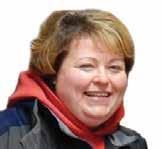 By Danielle Nauman Staff Writer
By Danielle Nauman Staff Writer
Licorice’s birth was long-awaited. My dad had promised me that if our cow, Lea, had a heifer calf, it would be mine.
Those were the days before sexed semen and ultrasound, so I remember spending a lot of time trying to be good so Lea would have a heifer calf for me.
When the phone call from Uncle Rick came, telling us Lea had indeed produced a heifer calf, my excitement bubbled over as I told him I was going to name the calf Licorice. He told me she could not be named Licorice; she was not black enough.
That was the day Uncle Rick learned that being a black calf was not necessarily a requirement for the name Licorice, and the 8-year-old won out.
Licorice was an eye-catching, correct calf. She earned a spot with the rest of the show heifers at my grandparents’ farm, housed in a barn on the farm next door.
That barn was struck by lightning and caught re that summer. My grandparents lost a few heifers and all the bulls they were raising to sell as herd sires. Fortunately for Licorice and I, the show heifers spent the night outside, and she was spared harm.
Even though I was not present to witness the re, that night is the reason I cannot sleep during lightning storms. I sit and watch the barn, and I keep a set of sharp bolt cutters hanging where they will be easy to access.
That summer also marked my rst time showing anywhere other than our county fair. Licorice and I made the trip to the District 3 Holstein Show in Lancaster, where we placed third in a large class of over 30 March calves. It was the rst time I met Ray Kuehl, as he judged the show. Ray would come to be someone I would look up to and hold in great respect.
My parents started milking cows on their own that fall, and Licorice made the trip with the rest of our cows to our newly rented farm in Norwalk. Having Licorice with me every day was the most wonderful thing I could think of at that time, and our bond began to grow.
I turned 9 and was able to join 4-H. I was excited for the prospect of showing Licorice at our county fair. She was a big junior yearling, and I had not grown nearly as much as she had. I had trouble keeping her head up, but she was my pride and joy.
Getting ready to go to the ring, my dad cautioned me not to set my expectations too high, but I have always been the competitive type. I grabbed the lead strap and headed to the ring telling him, “We’re gonna win.” And, win Licorice did.
Licorice calved in the next spring, of course, with a bull calf, but she became a good cow. My dad decided we would try our hand at taking a few cows to our District 2 Holstein Show. As fate would have it, Licorice came in heat the day of the show. She jumped me in the ring and knocked me down, and my dad came to take over. Dr. David Dickson was the judge and later said he couldn’t believe he’d missed the commotion. Licorice won her class at the district show that day, and we en-
tered her for the Wisconsin Championship Show to be held later in July, where she placed fourth in the junior 2-year-old class.
In 1988, Licorice was due to calve in July during a hot and dry summer. She picked July 15 to calve, overdue several days. That day still holds the record for the high temperature. She calved late that afternoon, with a heifer calf who came upside down and backward. We managed to save the calf, and I thought to name her Lucky.
Despite everything we did to keep her cool, Licorice suffered from heat stress. By about 11 p.m., my dad was satised that we had Licorice headed on the right path, and we left her to rest for the evening. He checked her at 2 a.m., and while she had not cleaned yet, she was
up and eating hay. When we went to the barn to start chores at 4:30 a.m., we found Licorice dead.
To say I was heartbroken is an understatement. Those two days are days that I remember each year. I renamed my little calf and called her Little Licorice.
The lessons I learned from Licorice are many. I learned the magnitude of the gift God gives us through his creation. I learned the importance of caring for that gift, on the good days and the bad. I learned of the love the animals have for you, as their caretaker, and the joy experienced when those animals are successful. I learned of the unspeakable pain when you lose that animal you have poured your heart and soul into. Ultimately, I learned how to cherish the gift, holding the memories of each experience close to your heart.

Select Sires’ Herd Health Profit Dollars® (HHP$®) is the premier index to enhance your dairy’s sustainability. It is designed to create healthier, longer-living cows that reduce your herd turnover while lowering your carbon footprint.


14HO16755
14HO16677
7HO16644 RIMBOT* 1,2511,217177
7HO15807 GEORGE MILLER 1,2461,073137


250HO16691 TRANSFER* 1,2461,145168
7HO16808 OLWEN* 1,2441,207177
7HO16820 FIONN* 1,2431,163177
14HO16337 KELSO 1,2431,170166





Dairy Star • Saturday, March 9, 2024 • Page 35 Editorial disclaimer: The views expressed by our columnists are the opinions and thoughts of the author and do not reect the opinions and views of Dairy Star staff and ownership. Phone: (320) 259-6680 Web: www.cobaselect.com YOUNG SIRES HHP$CM$CFP 14HO16673 ENDEAR 1,3321,254195 7HO16485 SUNDANCE* 1,3271,272159 7HO16276 SHEEPSTER* 1,3251,215204 250HO16812 CRIMSON* 1,2841,241195
BAMBAM 1,2811,210193
MCCLUNE* 1,2771,214212
SMOKE SIGNAL* 1,2721,155195
HOBART 1,2671,136170
HAYK 1,2651,050161
SUNDOWN* 1,2611,211171 Contact your SSMC representative today to protect your herd’s health and your bottom line! YOUNG SIRES CONTINUEDHHP$CM$CFP
SCAR* 1,2591,153193
ANDRI* 1,2571,223169
7HO16148
250HO16715
7HO16607
7HO16984
7HO15977
14HO16834
14HO16827
7HO16825
SOCKS* 1,2561,129156
BREESE 1,2541,161188
* Denotes NxGEN sires. 12/23 CDCB-S Genomic Evaluations. HHP$, Herd Health Profit Dollars and NxGEN are registered trademarks of Select Sires Inc., Plain City, OH. BAMBAM, MCCLUNE and KELSO are carriers for Early Onset Muscle Weakness Syndrome. Photo by Farmgirl Photography. 7 = Select Sires, 14 = Accelerated Genetics, 250 = GenerVations
Quality Alfalfa Hay & Straw For Sale 3x4 Bales • 1st, 2nd & 3rd Cutting Hay WE DELIVER Heavy Oats Also For Sale Honeyland Farms 1-320-250-8805 or 1-204-347-5780 Mike www.honeylandfarms1.com
Teamwork makes the dream work
“Teamwork makes the dream work.”
This line oozes with cheesiness. It is one of those you hear coaches saying to pump kids up and get them playing better. You can hear the silly rhyme in your head when it takes more than one person to accomplish anything. This useful slogan also makes its way into the lingo around our farm.
Peter likes to pump up the boys to get them to work alongside him in the barns. He will look at Henry with a grin and a twinkle in his eye and say, “Come on, man. Teamwork makes the dream work. We need your help.”
It usually does the trick.
Mondays and Tuesdays are my heavy cow move days in the barn. On Monday mornings, after the guys are done helping my dad with the weekly business of herd health, they help me.
Adrian peeks at where I am with the sorting in the parlor and gets all the gates set up to run the cows through the hospital parlor to dry them off. We get started, and Dustin pops in after helping Dad. Depending
on all the other chaos of the day, sometimes Dustin and Adrian grab their lists from me and sort the dry cows that need to be moved into the transition pen while I nish drying cows off by myself. Either way, we have all of the cow drying and moving done by roughly 11:30 a.m. A smile, thank you and high ve are all around as we accomplish our Monday goals.
Every other Tuesday morning, our hoof trimmer makes his appearance, and that adds a necessary degree of cow organization and chaos to the daily grind. I have the clipboards lled out Monday nights so that Dustin and Jaime don’t have any reason to wait for me before nding cows. It is positively ridiculous how much I enjoy moving cows with Dustin and Jaime. These guys make moving cows fun. I run the gate, and their movements are pure stealth. They can walk both sides of a pen and guide the necessary ladies back to me, the self-proclaimed Queen of the Gate. There is no yelling and minimal talking. The cows stay calm. When it is a trim day, we move 100 cows around before noon. I

often nd myself saying to them, “Teamwork makes the dream work,” and meaning it. I’m not angry from chasing cows, and the cows aren’t slipping, falling and covering me with nature’s face mask. It is a pleasurable experience.
Last week, I had the privilege of observing the beginnings of an all-day quilting bee. I snuck over to my friend Ruth’s house and witnessed teamwork at its nest. She had two quilt frames set up in her living room with designs drawn on them. Young and old alike took their places around them with needles and thimbles at the ready. The murmurs of chatter were just beginning as I popped in to see how it all works. If the cows hadn’t needed me, I may have tried my hand at quilting for the day. Not only did this day serve as a way to get two beautiful quilts stitched, but it was also a wonderful way to bond.




The main team of girls in the calf barn work fabulously as a team. They have a way of boosting morale by stepping into the hospital barn and asking how they can help. Mackenzie is the newest vital part of our crew. She is not afraid to step in and learn a task. More importantly, she asks questions to clarify instructions. She has a no-nonsense attitude, which ts in well with us outspoken ladies. Jaime has been with us for years and is conscious of making sure all the girls have input on how we run things in the calf barn. This simple act creates a team environment. There is a crossover with the guys in the parlor helping in the calf barn, and they bring smiles and helpful hands as well. One of the best ways to create a workplace that makes everyone feel good about their effort is the frequency of a genuine, “Thank you.”
I once again found myself involved with National FFA Week. I help advise the FFA chapter, and National FFA Week was a urry of activities. Kids made root beer oats at the bank, served ice cream in the elementary school and coordinated Ag Olympics for the student body. Then, there was the Friday breakfast. The members of our chapter served about 140 people at the rst community breakfast honoring FFA week in years. It was such a joy to see the kids working together as a team. They communicated about what jobs needed to be done, which guest needed milk or juice, and kept on top of the coffee rells. They were in ofcial dress, so they looked like a team, and they busted a move the whole morning. Let us not forget that the ofcer team also helped deliver two 50-pound piglets to the elementary school to be kissed by the principal. That was a memorable experience.
In the barn, in the school, among friends. Teamwork really does make dreams work. Even when part of your team is looking at you like you are a complete lunatic for hauling piglets into a gymnasium full of howling elementary students after said piglets have pooped in the foyer of the school, it still worked. Even when you have to use what little rudimentary Spanish-speaking skills you possess to get the point across to move cows, it still works.
I hope you have a team surrounding you to make your dreams work.
Jacqui Davison and her family milk 800 cows and farm 1,200 acres in northeastern Vernon County, Wisconsin. Her children, Ira, Dane, Henry and Cora, help on the farm while her husband, Keith, works on a grain farm. If she’s not in the barn, she’s probably in the kitchen, trailing after little ones or sharing her passion of reading with someone. Her life is best described as organized chaos, and if it wasn’t, she’d be bored.
Page 36 • Dairy Star • Saturday, March 9, 2024 LEEDSTONE Melrose, MN 800-996-3303 Glenco, MN 877-864-5575 Plainview, MN 800-548-2540 Menomonie, WI 866-467-4717 ZUMBRO AG SOLLUTIONS LLC Zumbrota, MN 651-380-2856 sioux dairy equipment Rock Valley, IA 800-962-4346 MIDWEST LIVESTOCK Zumbrota, MN 507-732-4673 Menomonie,WI 715-235-5144 Renner, SD 605-274-3656 Central ag supply Juneau, WI 920-386-2611 Baraboo, WI 608-356-8384 OLSEN IMPLEMENT, INC. “Serving you for 70 Years” P.O. Box 28 • 2015 Hwy. 9 West • Osage, IA 50461 • 641-732-4301 2019 NH C245 Track loader, 1,600 hrs 2004 NH LS185.B skid loader, cab, heat 2017 NH L228 skid loader, cab, heat, air conditioning, 3,000 hrs 2002 JD 5320 with 541 loader 2014 NH DB313 disc mower conditioner, 13 feet NEW Kelly Ryan Bale Storm 3 pt bale processor Call for prices and more info EQUIPMENT ON HAND
Jacqui Davison
Ramblings from the Ridge
By
Columnist
Warm barns
In my neighborhood, a warm dairy barn used to mean a tiestall or stanchion barn, and those barns had temperatures well above freezing even on the coldest winter days. As freestall barns became the norm, almost all were designed to be cold. Cold usually means natural ventilation with an open ridge and open eves. On very chilly winter days, the temperature in those barns might only be 10 degrees warmer than the outside temperature, for example.

Cows did not seem to mind, unless the sand in the stalls froze, were covered with snow or alleys developed signicant buildup of frozen manure. Humans mostly did not like cold barns in the winter. We had to wear so many clothes that we could no longer get through the pass-throughs. Some of us could barely t through normal-sized doors. Plus, we needed thick gloves or those big chopper mitts, which really made it hard to draw up 2 cc of GnRH and inject it into the neck of a cow, for example. But, we adapted because we knew it was best for the cows.
Recently, farmers have pioneered ways to keep naturally ventilated barns warmer in the winter. The most successful efforts use power ridge vents instead of a completely open ridge. Most farmers leave the eve vents open when remodeling, but some make the vents smaller. Some others even close the eve vents. Some farmers add insulation to non-insulated roofs, and others do not. However, if done correctly, power vents do seem to result in signicantly warmer barns in winter without signicant detriment to animal health and production.
Humans really like these barns.
There are challenges, however. First, when it is really cold, the screens over the power vents may freeze up and require thawing, which is accomplished by turning the fans off until the frost melts. This can create challenges to animal health. Second, particularly in barns where the eve vents are closed, farmers may need to regulate the curtain openings much more frequently. This commonly happens as the outside air temperatures rise above roughly 20 degrees, but the temperature when the curtains need to be opened varies between barns. If farmers do not open curtains, the barns may become very humid and smelly. Summers also create challenges.
According to retired Kansas State University agricultural engineer Joe Harner, these barns are warmer in the summer. There is simply no way that power vents spaced 40 feet apart, for example, can remove as much air as a 24-inch-wide open ridge. However, my own observation is that if the barn did not have an insulated roof before, adding insulation may make the barn cooler during late morning and early afternoon on sunny, hot days. Harner is correct that these barns do not remove as much air on hot, still afternoons as an open ridge would and, thus, probably are hotter in the afternoon and retain heat much longer as the outside temperatures drop at night. Still, even with these challenges, most producers are happy with the results.
When used in calf barns, the results are less clear. Trying to keep a newborn calf barn signicantly warmer than outside air usually results in poor air quality and impaired animal health. Calves do not generate much heat, so barns need to be kept very tight with a few vent fans running on very cold days if one wants to keep them warm.
Of course, one could add heat, but doing this while maintaining adequate ventilation is not economically feasible for most farms. However, power

JD
vents might work in calf barns if enough fresh air is brought into the barn. Installing positive pressure tubes is one way to get this done. Four exchanges of air per hour is the recognized minimum standard of winter. It may be that this is too low or too high, but any power ventilation system should be designed to maintain at least four changes per hour in very cold weather.
This applies to calf and cow barns. In general, keeping calf barns cold seems to be the best practice for animal health. It is, however, imperative that calves in group housing inside cold barns have jackets and deep, dry bedding. Truthfully, no one really knows how to mechanically ventilate calf barns in such a way that both humans and calves are warm and healthy during winter in the Upper Midwest.
For now, it looks like we can keep freestall barns warmer than we used to think without negatively affecting cow health and production. That has made life easier for farmers and their workers on those frigid winter days.
Jim Bennett is one of four dairy veterinarians at Northern Valley Dairy Production Medicine Center in Plainview, Minnesota. He consults on dairy farms in other states. He and his wife, Pam, have four children. Jim can be reached at bennettnvac@gmail.com.













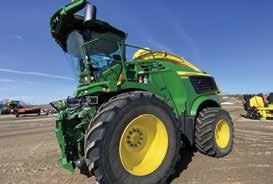




Dairy Star • Saturday, March 9, 2024 • Page 37
Jim Bennett Columnist Veterinary Wisdom Several units price-reduced! Over 25 available Locations throughout minnesota & western wisconsin! CALL TODAY! (320)352-6511 SEE OUR COMPLETE INVENTORY WITH PICTURES AND DESCRIPTIONS AT: www.mmcjd.com 2023 John Deere 8400 26 hrs., #560608 $531,000 2022 John Deere 9600 662 hrs., #576032 $534,900 2020 John Deere 9700 1169 hrs., #543646 $469,900 SELF-PROPELLED FORAGE HARVESTERS JD 7300 2003, Kernel Processor, PRWD, 5086 hrs., 3584 CH hrs., #574737 ......... $54,900 JD 7550 2008, Kernel Processor, PRWD, 2710 hrs., 1685 CH hrs., #568797 ....... $152,000 JD 7750 2008, Kernel Processor, 4691 hrs., 2991 CH hrs., #568793 .................... $89,500 JD 7980 2013, Kernel Processor, PRWD, 3367 hrs., 1961 CH hrs., #568875 ....... $157,000 JD 8400 2023, Kernel Processor, PRWD, 26 hrs., #560608 ................................ $531,000 JD 8400 2021, Kernel Processor, PRWD, 527 hrs., 317 CH hrs., #574593 ........... $441,000 JD 8600 2016, Kernel Processor, PRWD, 1610 hrs., 1200 CH hrs., #555841 ....... $249,900
By
8800 2016, Kernel Processor, PRWD, 2268 hrs., 1410 CH hrs., #573457 ....... $289,000
9500 2022, Kernel Processor, PRWD, 613 hrs., 317 CH hrs., #565391 ........... $535,900 JD 9600 2022, Kernel Processor, PRWD, 662 hrs., 507 CH hrs., #576032 ........... $534,900 JD 9600 2021, Kernel Processor, PRWD, 883 hrs., 538 CH hrs., #565399 ........... $420,000 JD 9600 2020, Kernel Processor, PRWD, 1310 hrs., 775 CH hrs., #565393 ......... $375,000 JD 9600 2019, Kernel Processor, PRWD, 1310 hrs., 811 CH hrs., #532049 ......... $369,900 JD 9600 2019, Kernel Processor, PRWD, 1740 hrs., 1130 CH hrs., #553763 ....... $349,900 JD 9700 2021, Kernel Processor, PRWD, 829 hrs., 527 CH hrs., #571817 ........... $479,900 JD 9700 2020, Kernel Processor, PRWD, 966 hrs., 500 CH hrs., #552460 ........... $499,900 JD 9700 2020, Kernel Processor, PRWD, 1169 hrs., 835 CH hrs., #543646 ......... $469,900 JD 9800 2022, Kernel Processor, PRWD, 565 hrs., 375 CH hrs., #572207 ........... $575,000 JD 9800, 2021, Kernel Processor, PRWD, 575 hrs., 302 CH hrs., #550106 .......... $518,000 JD 9800 2021, Kernel Processor, PRWD, 627 hrs., 369 CH hrs., #552624 ........... $553,000 JD 9800 2020, Kernel Processor, PRWD, 1333 hrs., 859 CH hrs., #536344 ......... $449,900 JD 9800 2020, Kernel Processor, PRWD, 1536 hrs., 942 CH hrs., #554135 ......... $459,900 JD 9800 2019, Kernel Processor, PRWD, 1062 hrs., 660 CH hrs., #550175 ......... $469,900 JD 9900 2022, Kernel Processor, PRWD, 744 hrs., 330 CH hrs., #565395 ........... $595,000 JD 9900 2022, Kernel Processor, PRWD, 2000 hrs., 1500 CH hrs., #574301 ....... $349,900 JD 9900 2021, Kernel Processor, PRWD, 1056 hrs., 675 CH hrs., #565397 ......... $569,900 JD 9900 2021, Kernel Processor, PRWD, 1353 hrs., 990 CH hrs., #573149 ......... $432,000 JD 9900 2019, Kernel Processor, PRWD, 1396 hrs., 884 CH hrs., #550177 ......... $469,900
JD
Sign up for our up for our Newsletter Visit www.dairystar.com to sign up! Dairy St r Milk Break
Learning new things
I will never tire of learning new things. Maybe that’s not surprising as I think, all people are naturally curious. In college, there was a saying the professors and every motivational speaker at conferences would say: “Keep your saw sharp.”
They weren’t referring to woodworking equipment, although it is a very good idea to keep those saws sharp as well if you want to do your best work efciently. They were talking about skills and knowledge, which not so coincidentally also are important for doing a task well.
There are a number of teeth on my proverbial saw I didn’t get around to sharpening near as early in life as I wish I had.






The most recently discovered one I’ve been vigorously ling in an attempt to get it razor sharp is my understanding of the nancial world.
For many years, when our kids were young and we put most of our time and money into the farm, we didn’t have enough money at the end of the month to worry much about where the little left over went.
We bought the insurance policies our representative told us were a good idea to have and made extremely modest investments in retirement and savings accounts. Had I spent more time learning about insurance, investing and banking, I would have made a number of changes earlier which I am






making now because what happened yesterday is not worth dwelling on. It’s best to just get things straightened out and move forward.
One of the lessons I’ve learned is that the world is full of ways to spend and invest money. Many of them will yield a return, but some return pennies and some return dollars. The risks and returns aren’t always obvious or connected. Reading prospectuses for investments and contracts for policies is tedious and often confusing without a lot of Google searches to sort out what various terms mean but is super important. What someone is looking to sell is maybe the best option of their limited tools they can offer but not necessarily the best option for you.
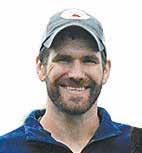
I recently read the book “The Little Book of Common Sense Investing: The Only Way to Guarantee Your Fair Share of Stock Market Returns” by John Bogle, the founder of Vanguard Group Inc.





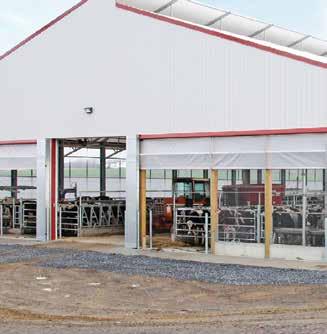

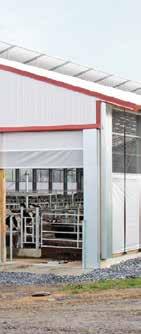
A quote that stood out to me in the book was, “In investing, you get what you don’t pay for. Costs matter.”
I had always known that a portion of our investments went to pay management fees, but the idea of a number as small as 0.15% mattering much didn’t occur to me. After realizing how fees add up to huge numbers over time and seeing how funds we picked failed to live up to even half of their historical returns, we’ll be changing a number of our investments. Similar to cattle numbers growing exponentially if you don’t sell any and have low death losses, money will accumulate faster and faster as compounding interest works its magic. But, if someone keeps stealing a percentage of the calves each year, that growth gets held back. Thankfully, monetary investments growing don’t require building more barns and buying a bigger manure spreader.
As for insurance, I’ve learned that it’s a wise thing to have. However, if you can get the most things covered for the least expenditure, do that. There are a large quantity of complicated insurance products out there to do simple things, and they are best avoided. In the end, the less debt a person has, the less insurance they need to carry to cover that risk. How to balance paying for insurance while also paying down debt quickly is a discussion for someone far more qualied than me.


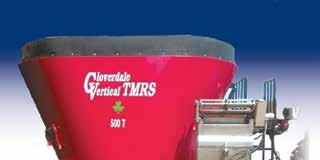





The next dull saw tooth I’ll be working on is taxes. I have had only a general understanding of taxes and hire a professional to help. We do what she suggests at tax planning time and hope we saved enough up to cover the bill. I would prefer to have a much better understanding of actions to take throughout the year to minimize taxes but also maximize our farm’s protability. Wish me luck on learning more about that topic. I’m going to need it.
Until next time, keep living the dream, and keep your literal and gurative saws sharp. You need both types in top shape to stay in the dairy business. It hasn’t
any easier.
Tim Zweber farms with his wife, Emily, their three children and his parents, Jon and Lisa, near Elko, Minnesota.





Page 38 • Dairy Star • Saturday, March 9, 2024
Columnist From the Zweber Farm Request FREE EQUIPMENT GUIDES on our Entire Product Line! sales@sturdybuiltmfg.net 260 S. Muddy Creek Rd. Denver, PA 17517 • Aluminum Keder tubing rolls curtain smoothly and evenly • 16 oz. super clear vinyl curtain material • Manual or electric drives • Galvanized steel curtain doors Agricultural Ventilation Systems Center Roll-Up Curtain System Call 866-543-5116 800-597-2394 or 605-338-6351 5301 West 12th St., Sioux Falls, SD www.pfeifersonline.com 5
By Tim Zweber Farmer &
gotten
Feeding Flexibility & Durability in One Mixer
have had two other vertical mixers and our Cloverdale is built heavier. Taylor does most of the feeding and we like that we can mix as fast as we load it. We put in two 1500 lb. CRP bales and fill it with silage. It mixes great. The tub magnet is impressive. We check it ever week and haven’t had any hardware problems.” - Taylor, Dillon & Augustus Hoffman, Tuttle, ND Own a 720 Cloverdale 5 YR. OR 5,000 LOAD WARRANTY ON MIXING TUBS, AUGER, FLOOR AND FRAME. STAINLESS STEEL CONVEYORS 9 Different Sizes to choose from 175 cu. ft. - 1,300 cu. ft. DEALERS STOCK REPLACEMENT PARTS FOR OTHER BRAND , Go to www.cloverdaletmr.com for more information. DEALERS STOCK REPLACEMENT PARTS FOR OTHER BRAND MIXERS Contact your local dealer to learn more! Isaacson Sales & Service, Inc. Lafayette, MN 507-228-8270 888-228-8270 Ross Equipment Co., Inc. Lonsdale, MN 800-645-7677 507-744-2525 Brynsaas Sales & Service, Inc. Decorah, IA www.brynsaas.com 563-382-4484 Hartung Sales & Service, Inc. Freeport, MN 320-836-2697 RT Equipment Baltic, SD 605-359-0228
“We
Proving passion, purpose to policy
Winter is receding, and these recent warm days have us preparing and planning for the quickly approaching growing season.
In this annual tradition, we nd it exciting and comforting to retreat into our dairies and focus on what is occurring within our farm. Back to the goals we’ve set, tasks the warmer weather allows and hobbies laid aside with last year’s frost.
Our thoughts and focus on any burdens and upcoming challenges to
The NexGen: Adventures of two dairy daughters

Policy decisions can encourage or discourage actions through legislation. Right now, we are witnessing policy actions that will determine how we address agriculture’s response to climate change, among others. Agriculture has enormous potential to provide climatefriendly solutions to current climate change challenges, but we must be a part of the conversations that are taking place. We must be present as a rst-hand witness and face of agriculture to those making these decisions that will affect our family businesses. We must be present at the table where initial policy decisions are developed.

















 By Megan Schrupp & Ellen Stenger Columnists
By Megan Schrupp & Ellen Stenger Columnists
agriculture and the dairy industry tend to fall to the wayside as the excitement of warm weather unfolds. However, it is imperative that we remain focused on things that aren’t always enjoyable but are crucial to our dairy businesses. As Eleanor Roosevelt said, “Those small things that make us uncomfortable help us build courage to do the work we do.”
National Ag Day is March 19. It was created to remind Americans of the importance of agriculture in our daily lives. National Ag Day is also the Minnesota Farm Bureau’s scheduled Day on the Hill — a day when dairy men and women can step outside their comfort zones and bring their stories of agriculture to those in our Capitol.
It is often intimidating to join events such as these. Last summer, we took part in a Young Cooperator y-in in Washington, D.C., with other dairy men and women from across the U.S. During the two-day meeting, we met with senators, house members and their staff, conversing on dairy policy issues and providing an account of the dairy industry to those directly involved in decision-making positions.
It was intimidating but ultimately very rewarding. This upcoming day in St. Paul, Minnesota, will most likely be similar. When considering the opportunity to attend such events throughout the year, we remember that ultimately, the way we choose to farm is dictated by society and the government.
A great example of the implications of climate policy decisions and their direct effects on generational farms can be witnessed within the European Union.
It’s been fascinating and disheartening to witness the situation unfold. We have all most likely learned of the numerous farmer-led protests, conversations and legislation taking place regarding the EU’s Common Agricultural Policy.
Most recently, farmer protests occurred with the meeting of the EU’s agricultural ministers in Brussels, Belgium. When farmers fail to be heard or are not intimately involved in initial conversations, policies are developed that directly affect family farms — sometimes to the peril of multi-generational family businesses.
Last year, reports of Ireland’s goals to reach net zero carbon emissions by 2050 spurred rumors of further government-led forced culls of up to 200,000 cattle to achieve those goals and more farmer protests. Thankfully, Ireland’s Climate Action Plan 2024 is open for review from the public once again until April 5. This is a critical opportunity for those involved to voice their concerns with policy-makers before the nal decisions are made.
Let these events remind us of the gravity of the effects of policy decisions and inspire us to set aside our daily duties to attend conversations and events this year with legislators and decision-makers. Let our experiences and innovations showcase the exceptional attributes that agriculture can not only provide to our local communities but also to the greater climate solution. Let them inspire you to step outside your comfort zone, even if it is a small step, to be part of these conversations.
Your voice matters. Speak up.
Megan Schrupp and Ellen Stenger are sisters and co-owners of both NexGen Dairy and NexGen Market in Eden Valley, Minnesota. They can be reached at Nexgendairy@gmail.com.








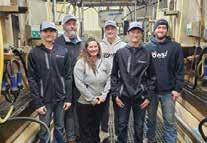



Dairy Star • Saturday, March 9, 2024 • Page 39 Leedstone.com/equipment-team « Leedstone.com/route-delivery 877.608.3877 Congratulations National Dairy Quality Award Winners Naatz & Reuter Family Dairies Gold Winners Carl, Dennis, Phil, & Jacob Reuter (Hastings, MN) Congratulations to these families & more around the country who are meeting the highest quality standards in milk production. The winners of the National Dairy Quality Awards (NDQA) were recognized in August of 2023 for their dedication to: • Milking routines & protocols • Animal & herd care • Mastitis monitoring & udder health • Responsible antibiotic usage for the latest barn equipment news from Leedstone! The Naatz & Reuter families are full-line route delivery & equipment service customers of Leedstone. We’re honored to work with them & to celebrate their success! Join us in congratulating the NDQA winners of 2023! Family & veterinarian owned since 1994 « Platinum Winners Willie, Karen, Tristin, Trace, Brodee, & Wyatt Naatz (Mantorville, MN) SKIDLOADERS TRACTORS BACKHOES EXCAVATORS & BULLDOZERS joewelcheq.com 507-724-3183 We use a hydraulic upright chute for less stress. Monahan HOOF TRIMMING Since 1997 Cattle, Sheep, and Goat Hoof Trimming Call Dan at 507-272-3447 “Our two man crew allows us to complete the job in a timely manner with less disruption of your herd’s daily routine.” Covering the states of MN, IA, SD & WI Veteran Owned & Operated! LARGE SELECTION OF USED MOTORS ON HAND FROM 1-10 HP 105 County Rd. 10 • Albany, MN 320-845-4690 WWW.AMPSRS.COM New Winco 50 KW PTO unit ..................Call Winpower 25/15 PT2 w/trailer, powershaft, load cable ...........$1,600 GENERATORS We Sell and Service Generators! Each WINCO PTO generator is designed using the highest quality components and the best workmanship available. Baldor 5 HP .........................................................$450 Century 5 HP .......................................................$450 Leroy-Somer 3 HP ...............................................$350 (2) GE 7-1/2 HP ...................................................$550 DeLaval 7-1/2 HP ................................................$550 GE 1-1/2 Stirator motor .......................................$175 WE STOCK FRACTIONAL TO 10 HP SINGLE AND 3-PHASE MOTORS! • quick • dependable • nearly 40 years experience WE ALSO DO MOTOR REPAIR O New Winco 100 KW pto unit - Call

MIGUEL GARCIA | PARLOR MANAGER, DOUBLE P DAIRY


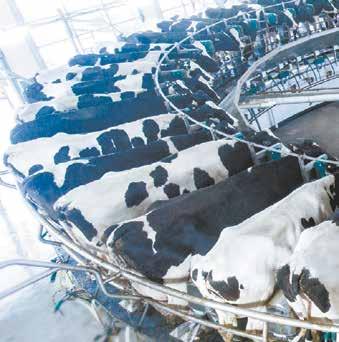



What’s your personal record?




2,000
3–4X
Contact Your Local GEA Milking Equipment Dealer:
Central Ag Supply, Inc.
Centre Dairy Equipment and Supply Inc. Sauk Centre, MN
Eastern Iowa Dairy Systems
Fuller’s Milker Center, Inc.
J Gile Dairy Equipment, Inc.

Leedstone, Inc.
Midwest Livestock Systems
Midwest Livestock SystemsKozlovsky Dairy Equipment
Monroe Westfalia Surge
Sioux Dairy Equipment, Inc. Rock Valley, IA
Stanley Schmitz, Inc.
Tri-County Dairy Supply
Page 40 • Dairy Star • Saturday, March 9, 2024
Cows
Preston Dairy Equipment Milking 8 Min Turns 3 Min, 15 Sec Avg Milkout
Double P Dairy in Marathon City, Wisconsin, is redefining efficiency with a parlor system that delivers consistent milking performance and record-breaking returns. Think you can beat that? Take your herd for a lap around GEA’s DairyRotor.
“The biggest benefit I see with GEA’s DairyRotor is our ability to milk 60 cows in 8 minutes. And we’re seeing complete milkouts in 3 minutes, 15 seconds with 60% of milk harvested in the first 2 minutes.”







 By Stacey Smart stacey.s@dairystar.com
By Stacey Smart stacey.s@dairystar.com




















































































































































































 ABBY WIEDMEYER/DAIRY STAR
ABBY WIEDMEYER/DAIRY STAR



 ABBY WIEDMEYER/DAIRY
ABBY WIEDMEYER/DAIRY
























 Linda Ceylor Catawba, Wisconsin Price County
Linda Ceylor Catawba, Wisconsin Price County



















































































































































































































































 By Marcia Endres University of Minnesota
By Marcia Endres University of Minnesota















 ABBY WIEDMEYER/DAIRY STAR
ABBY WIEDMEYER/DAIRY STAR






























 By Danielle Nauman Staff Writer
By Danielle Nauman Staff Writer


































































 By Megan Schrupp & Ellen Stenger Columnists
By Megan Schrupp & Ellen Stenger Columnists























